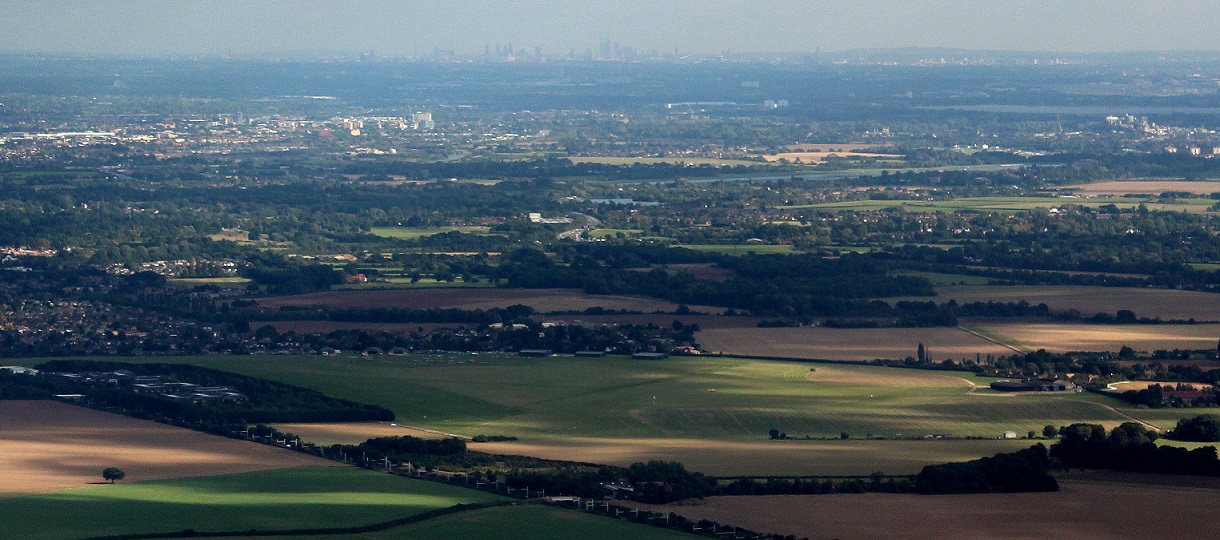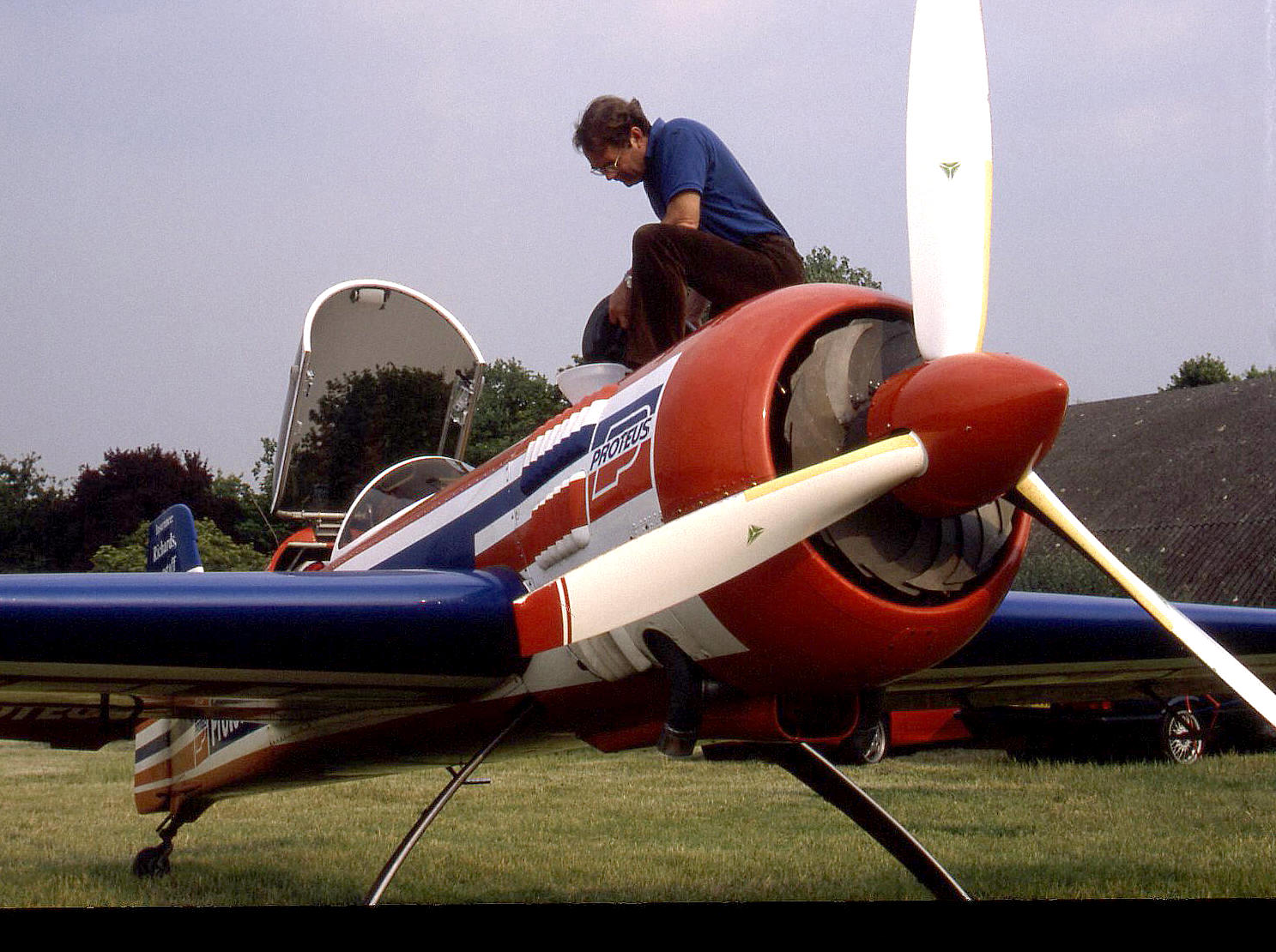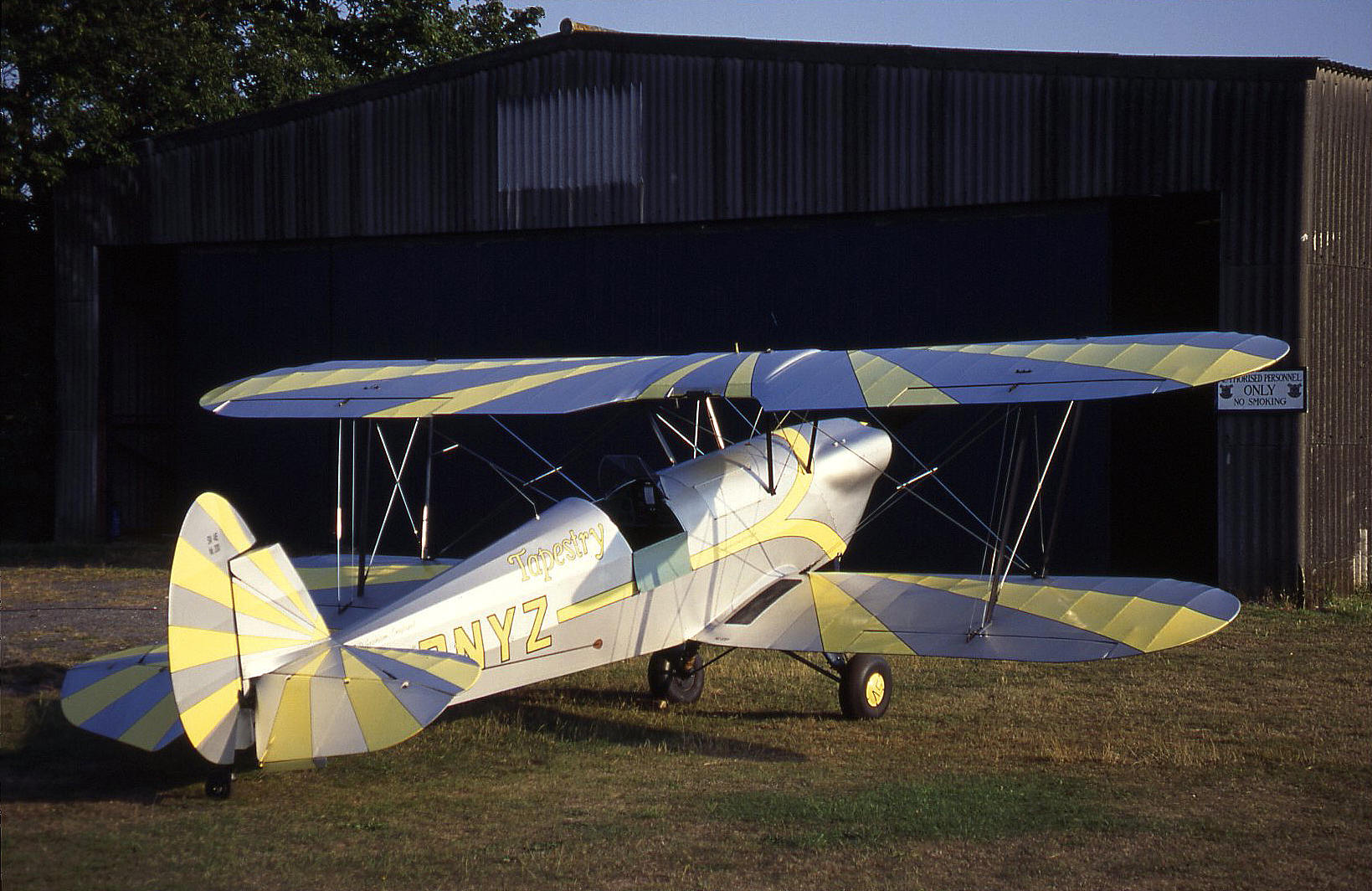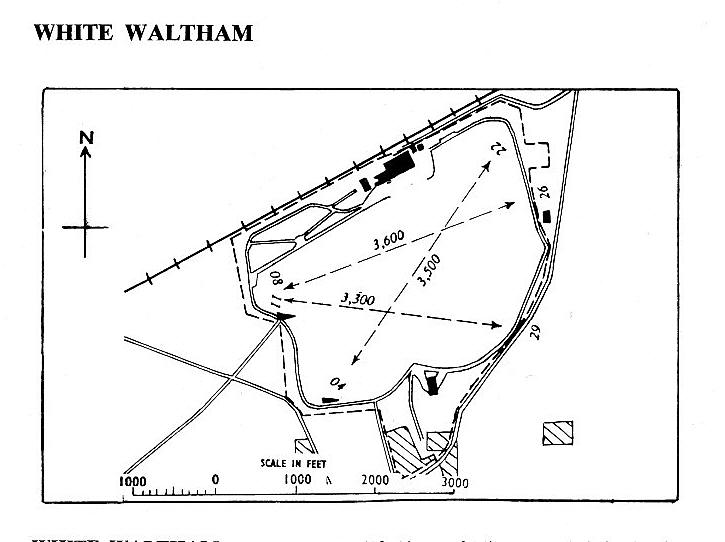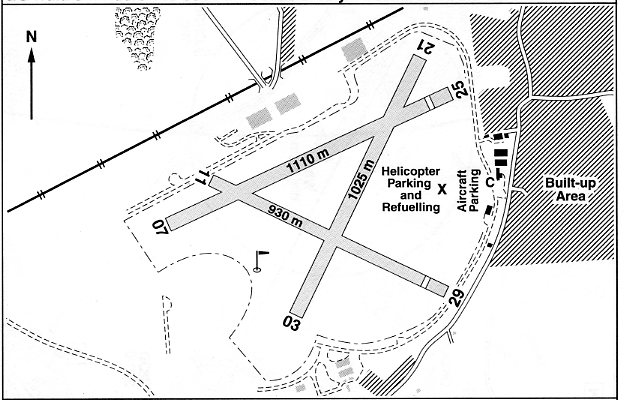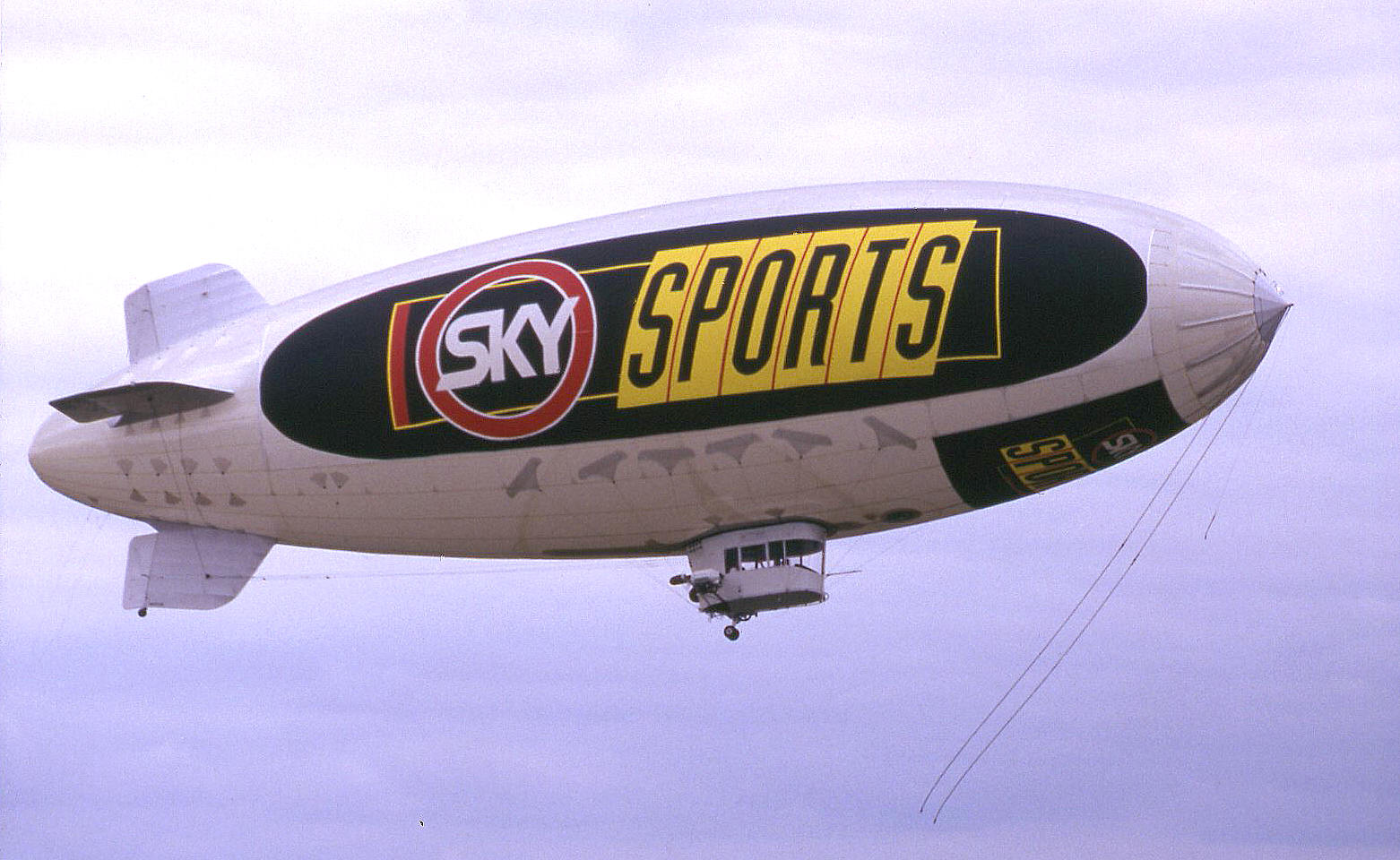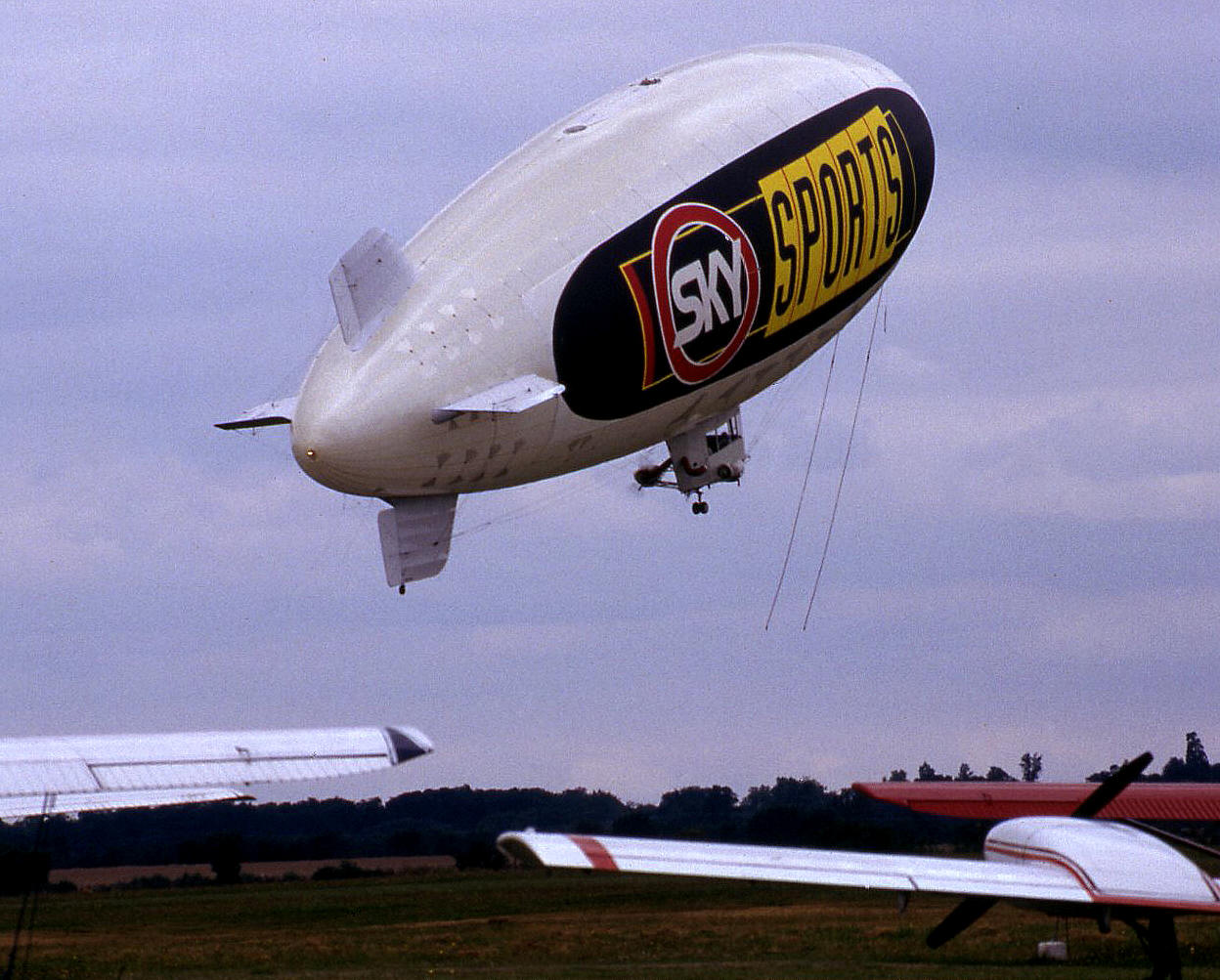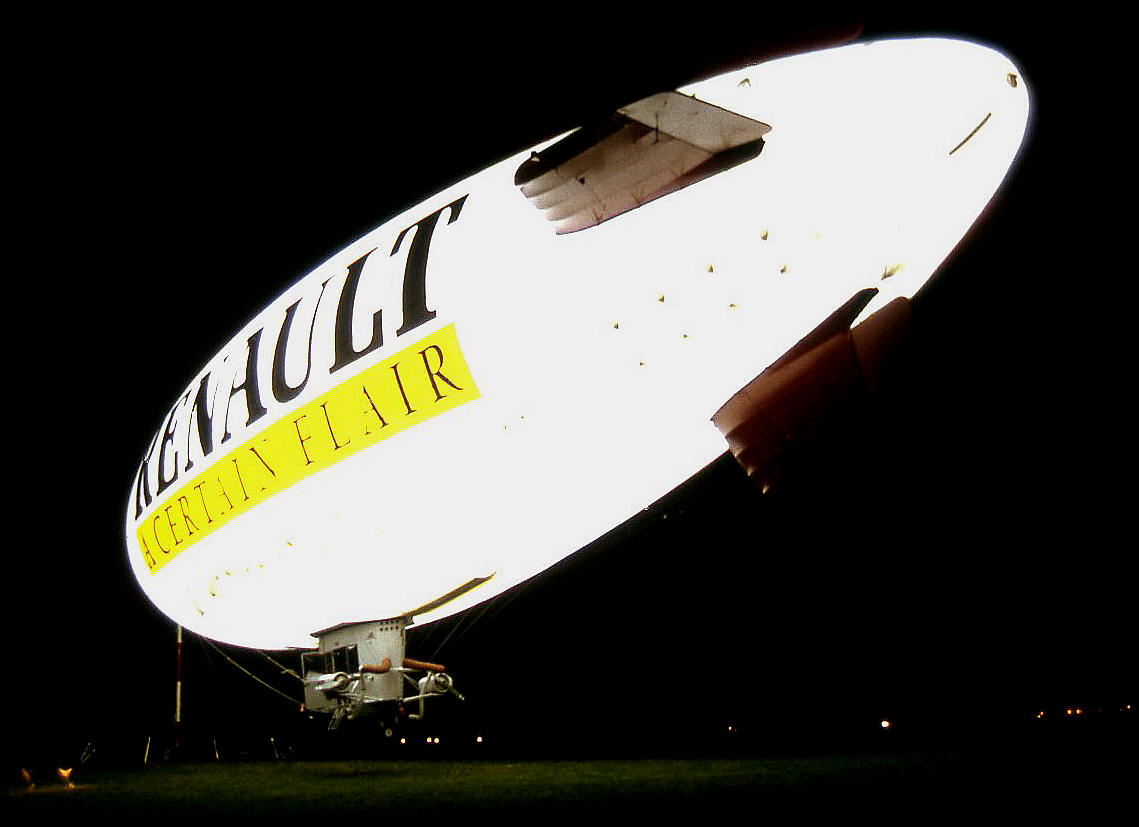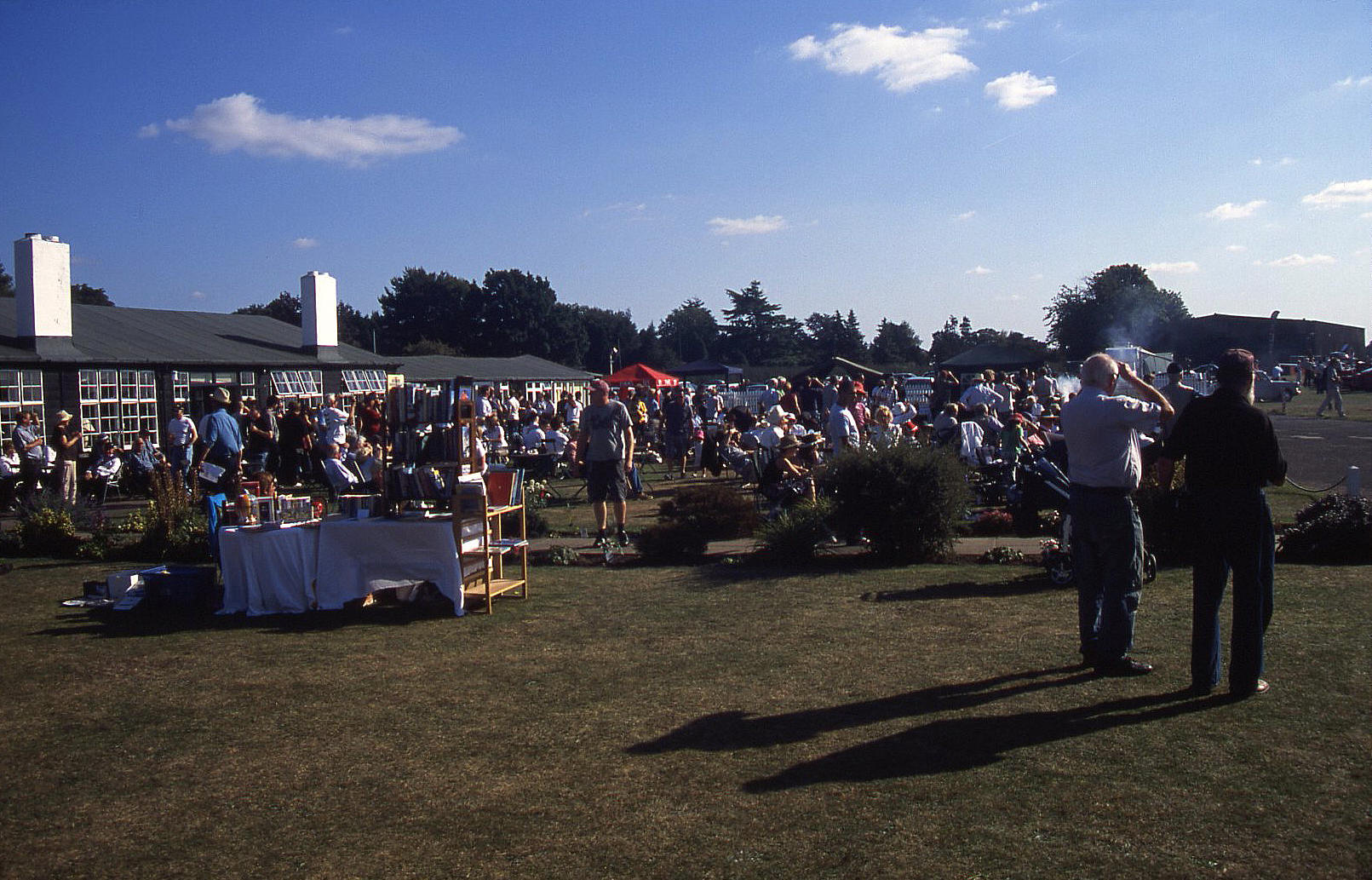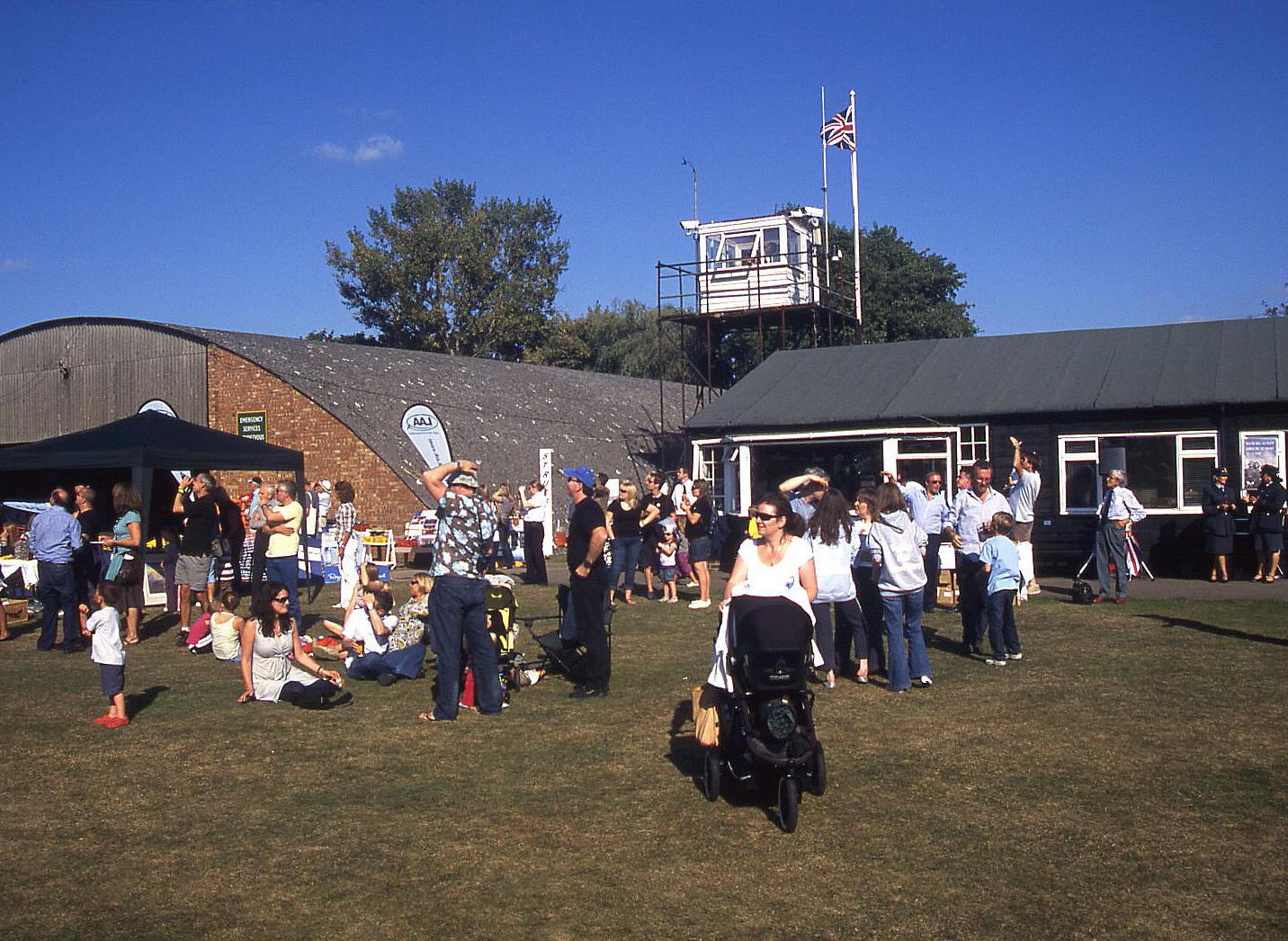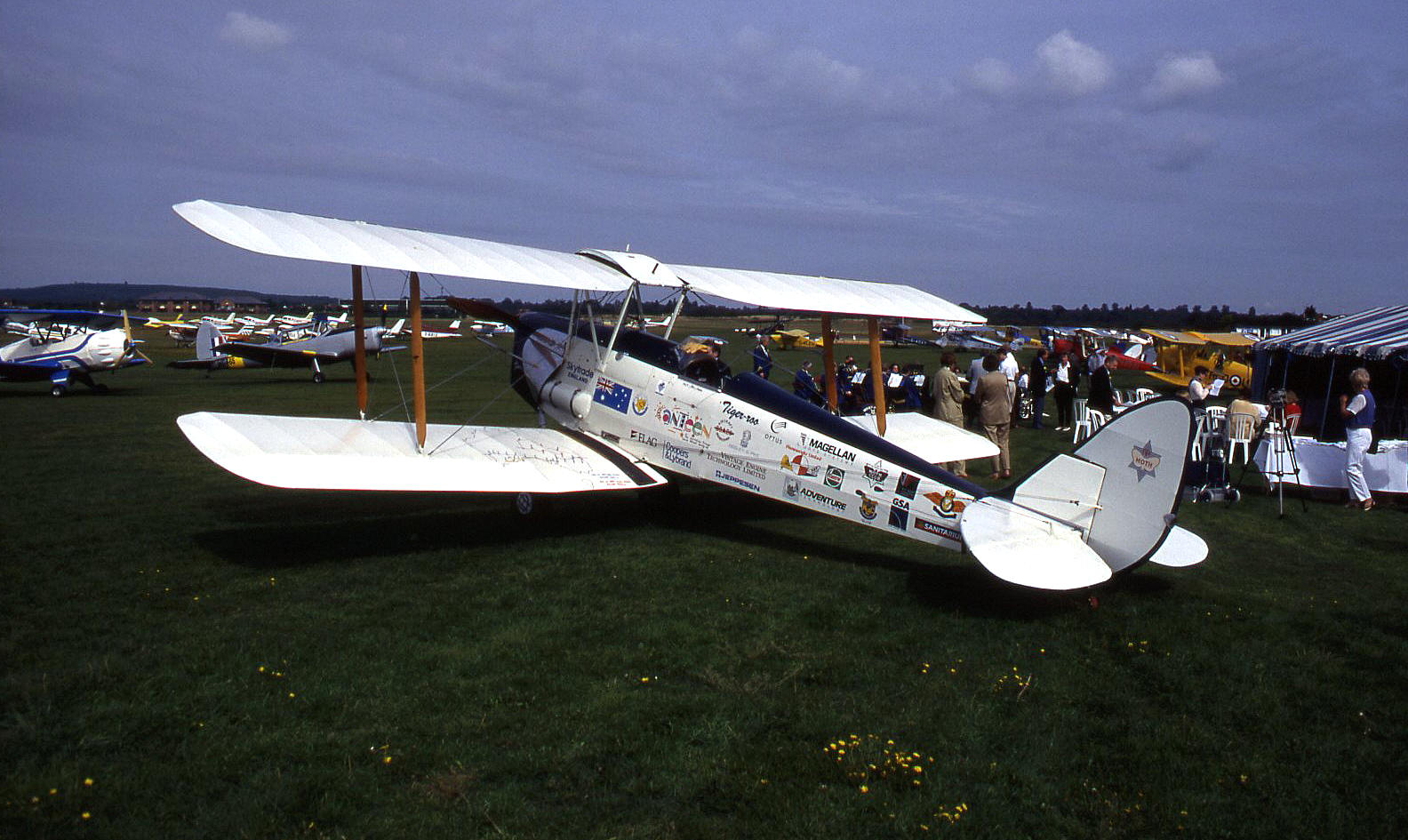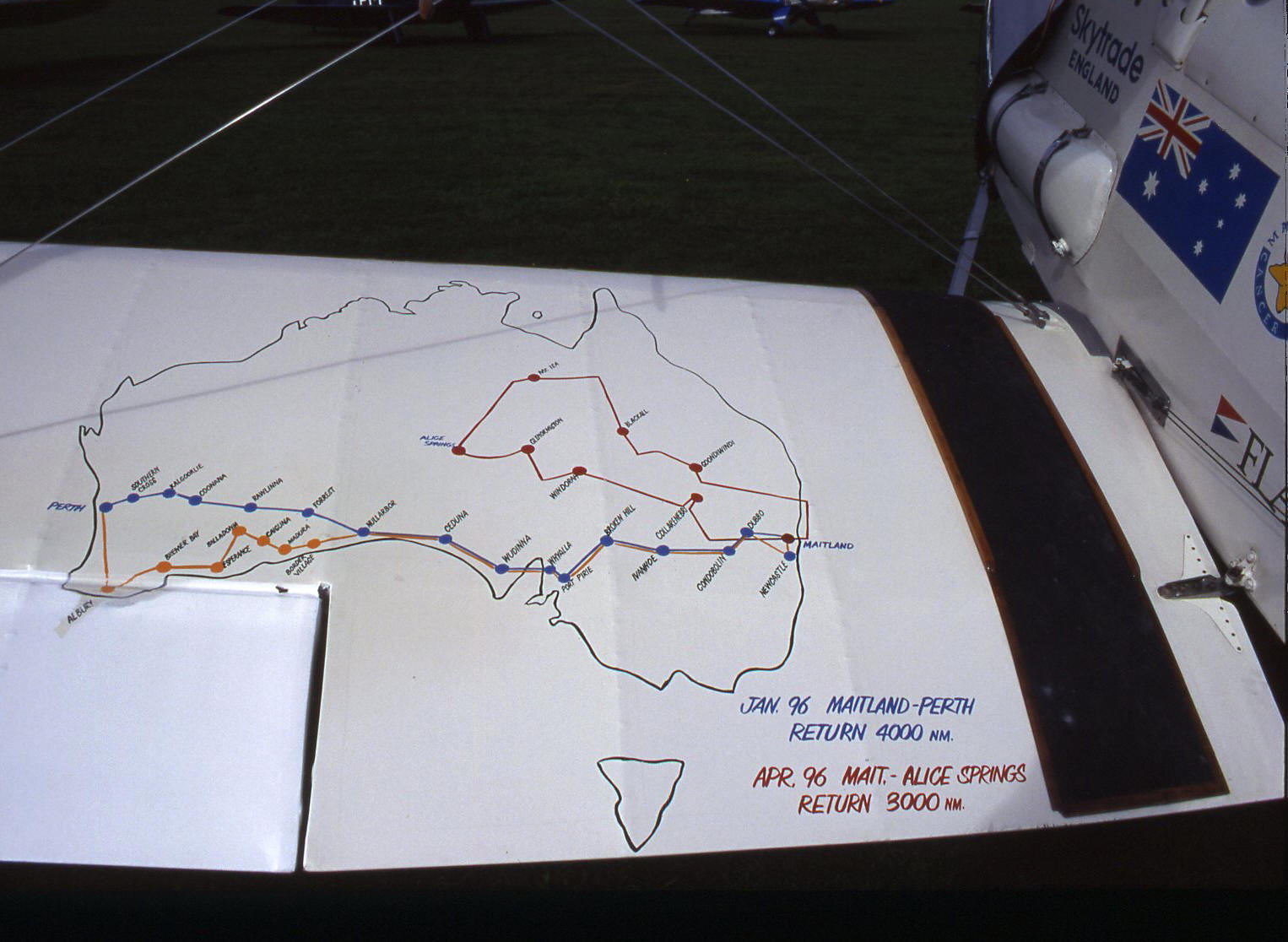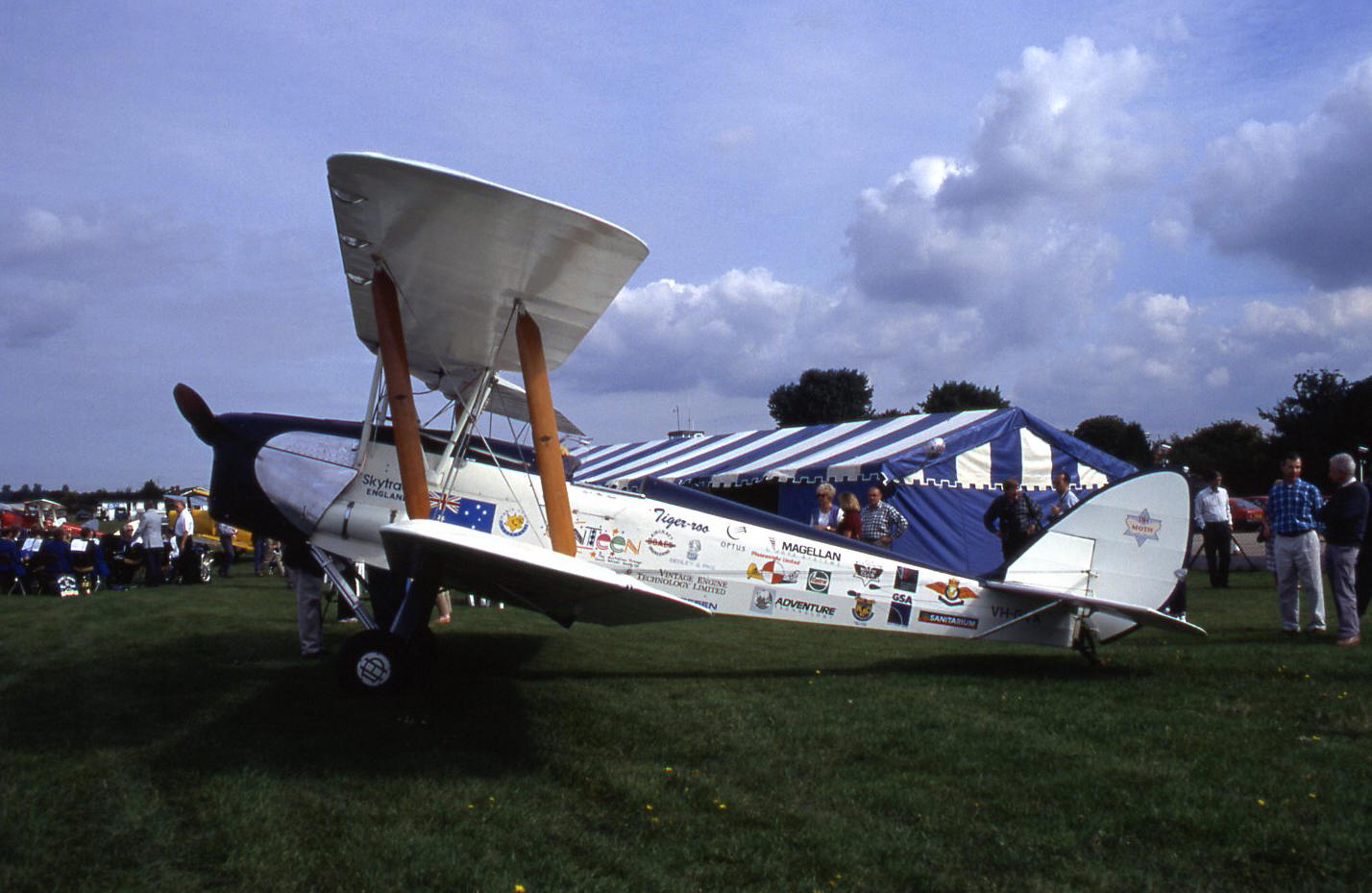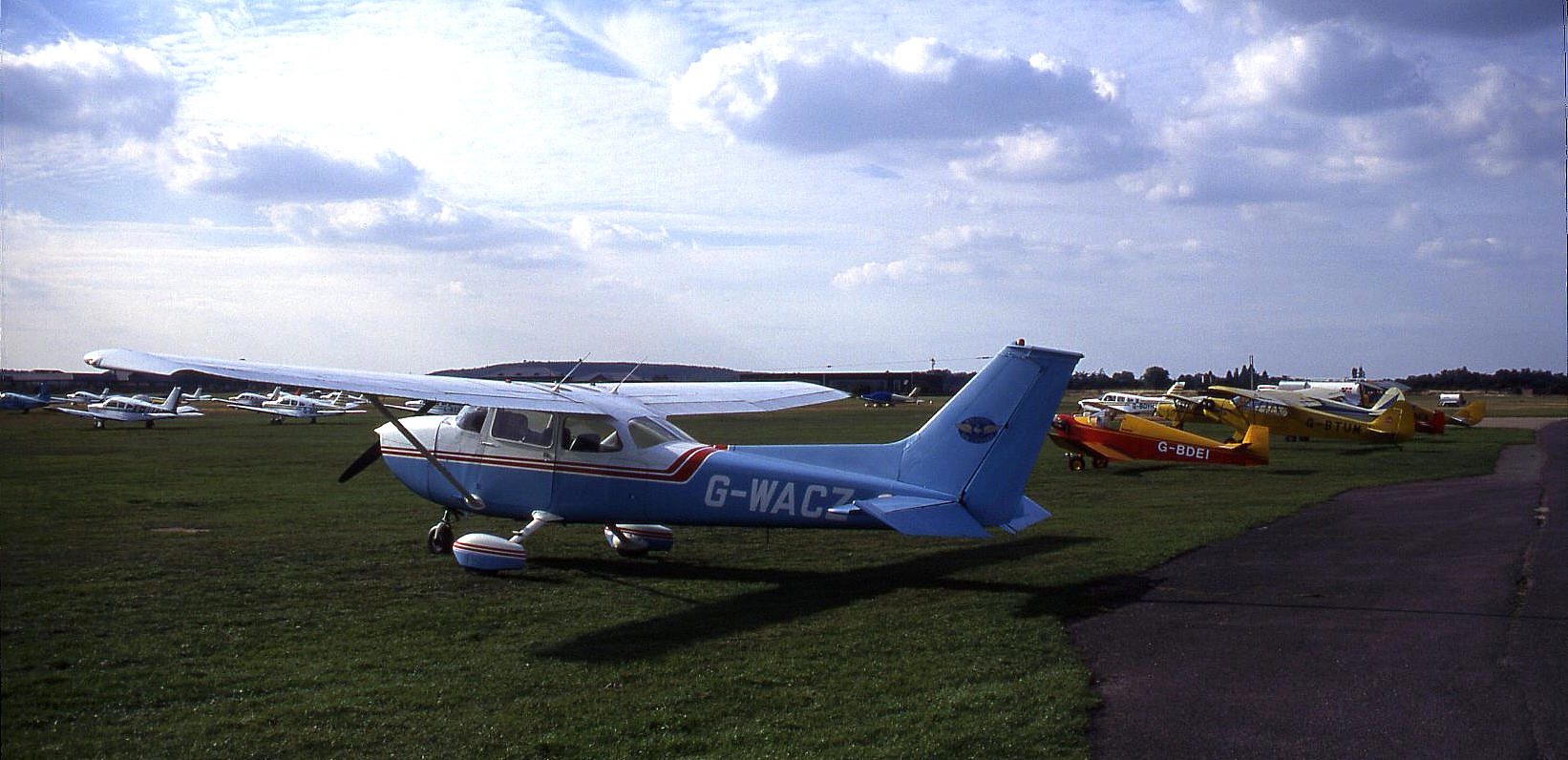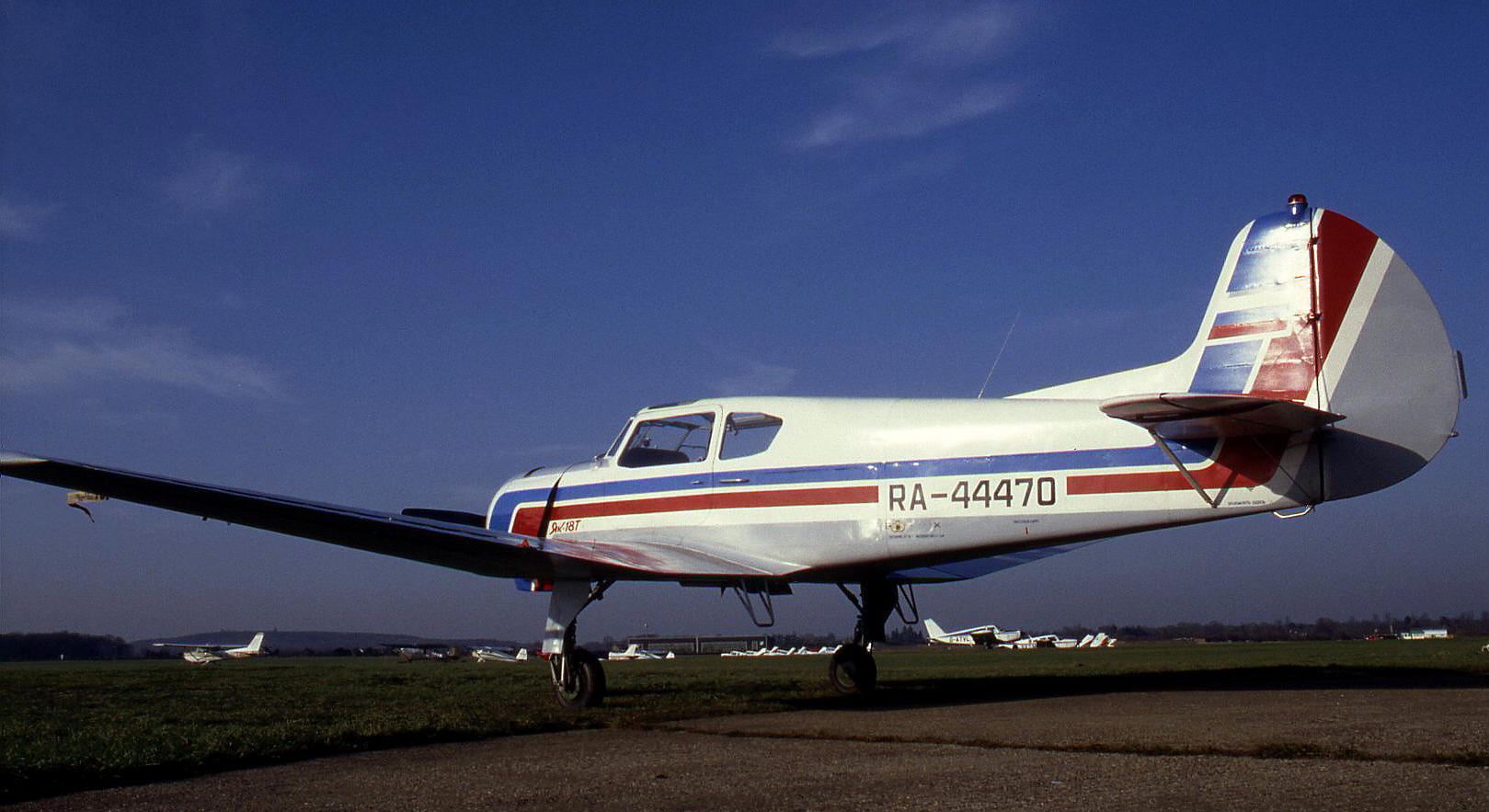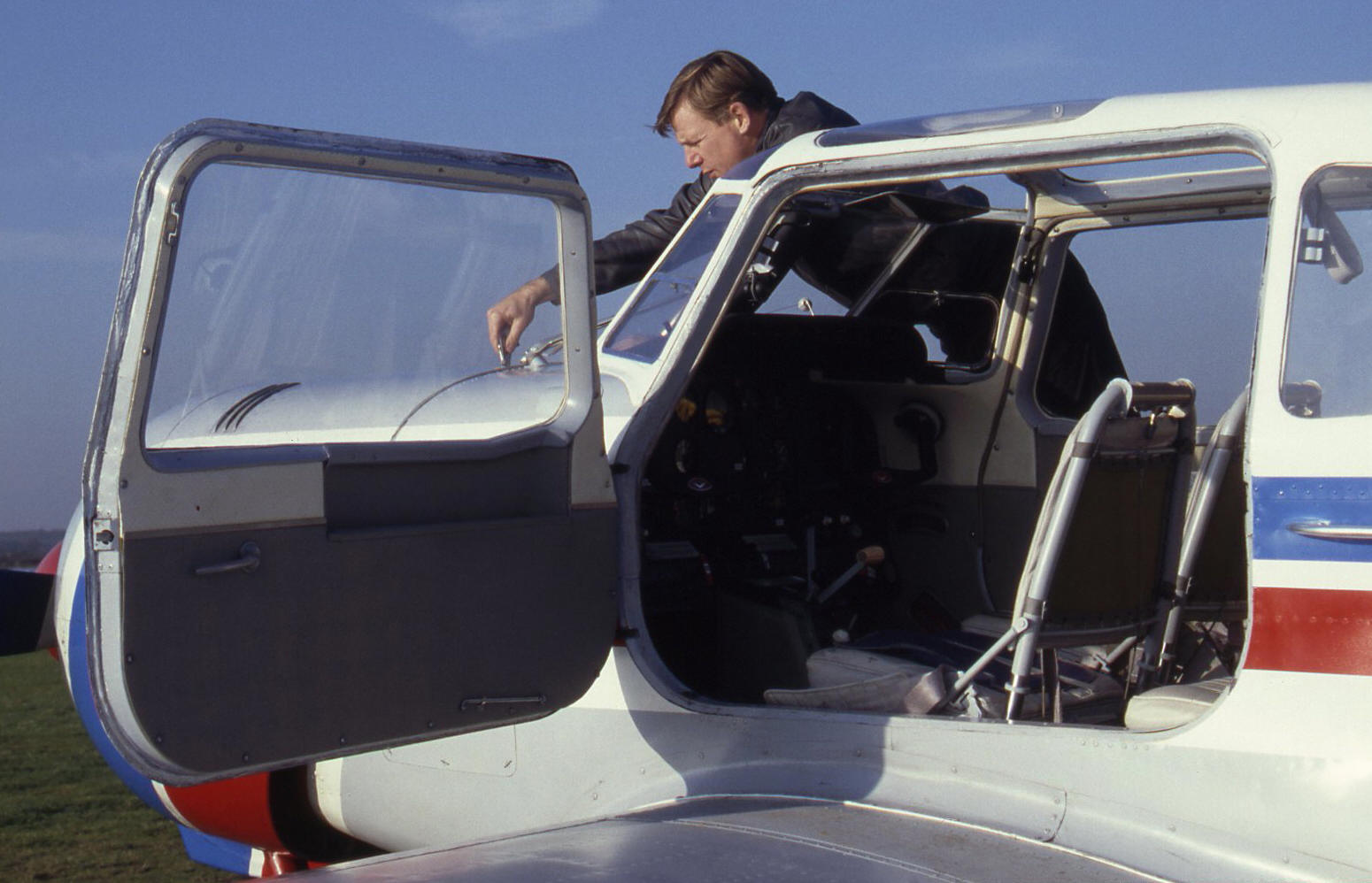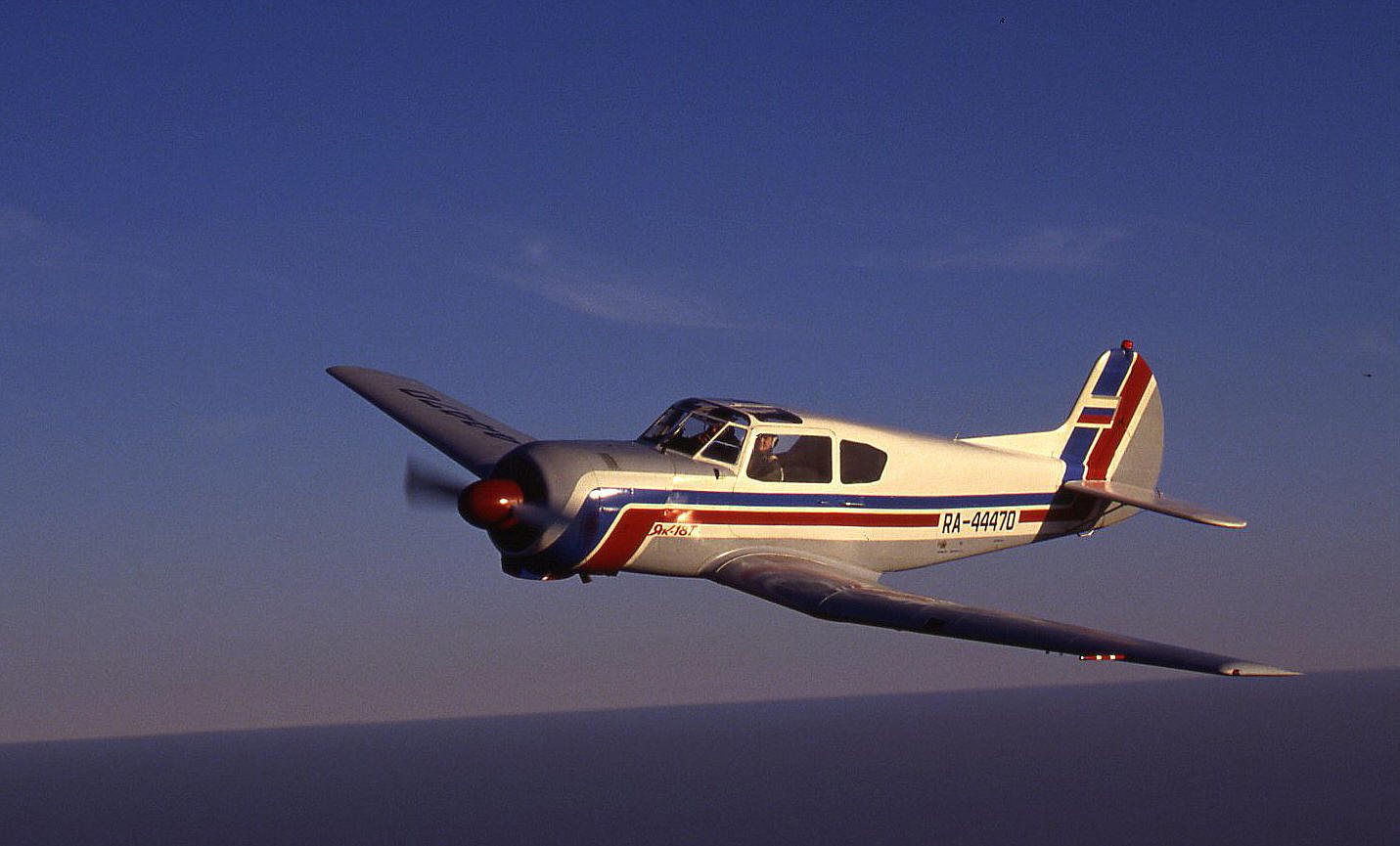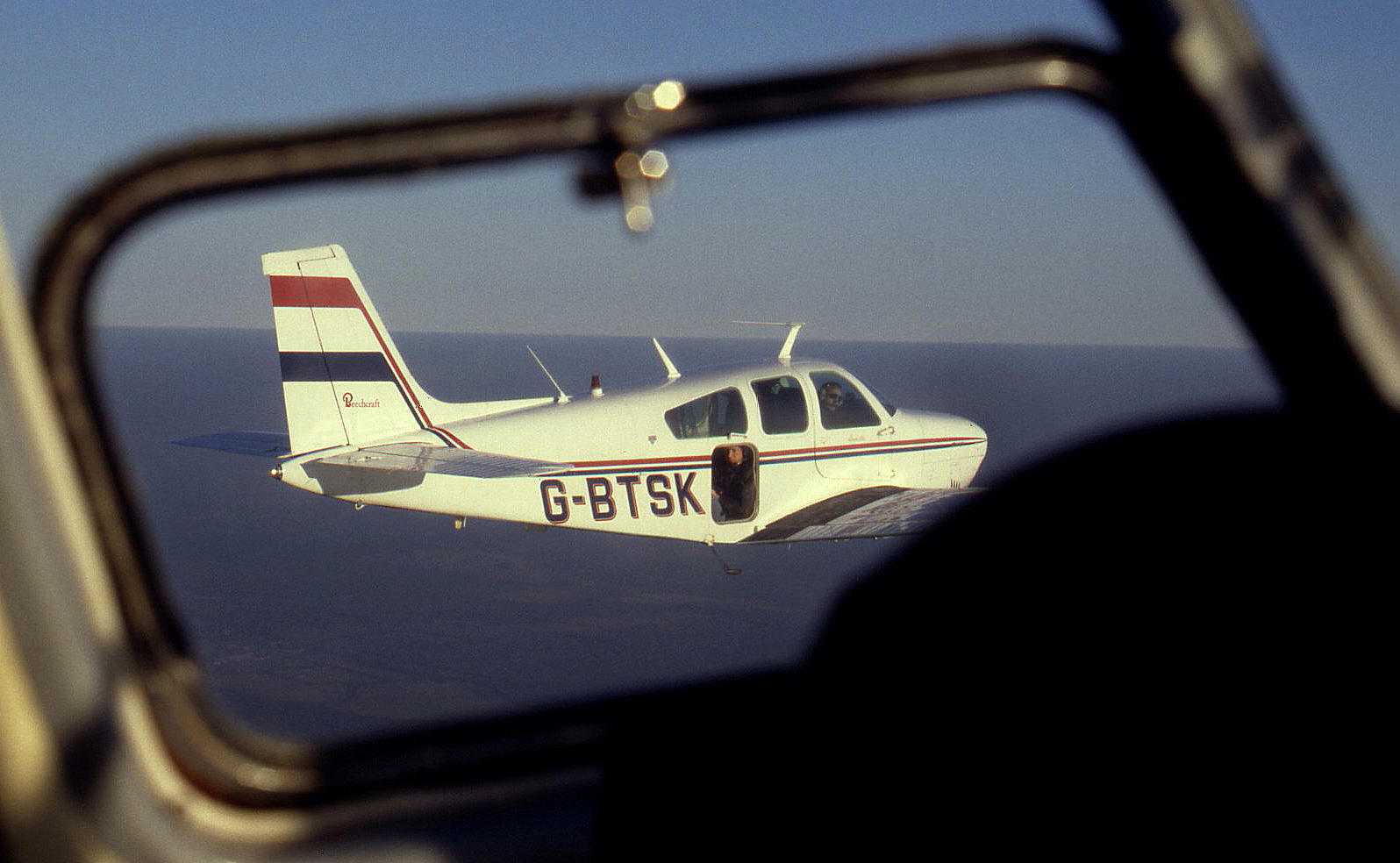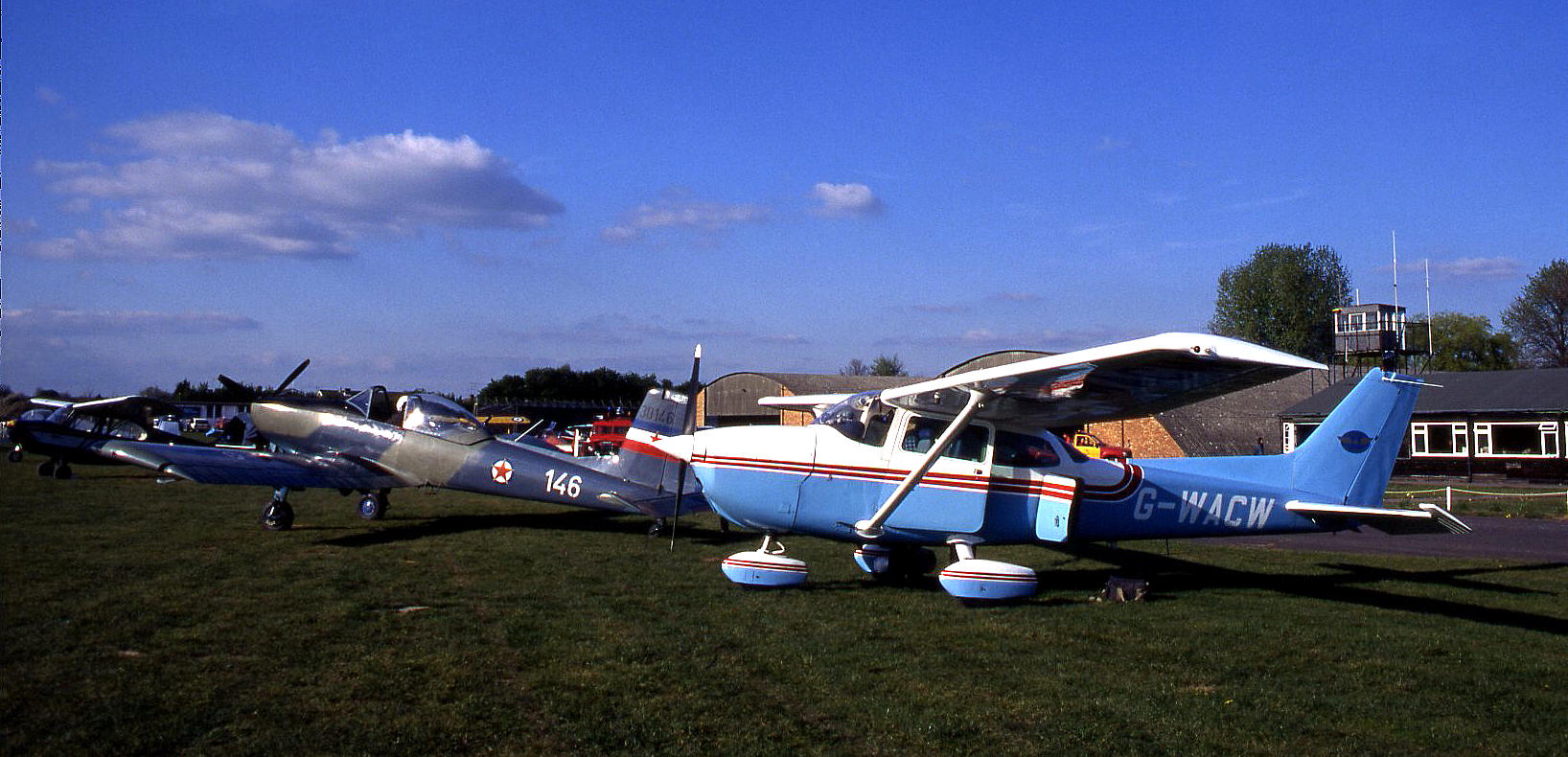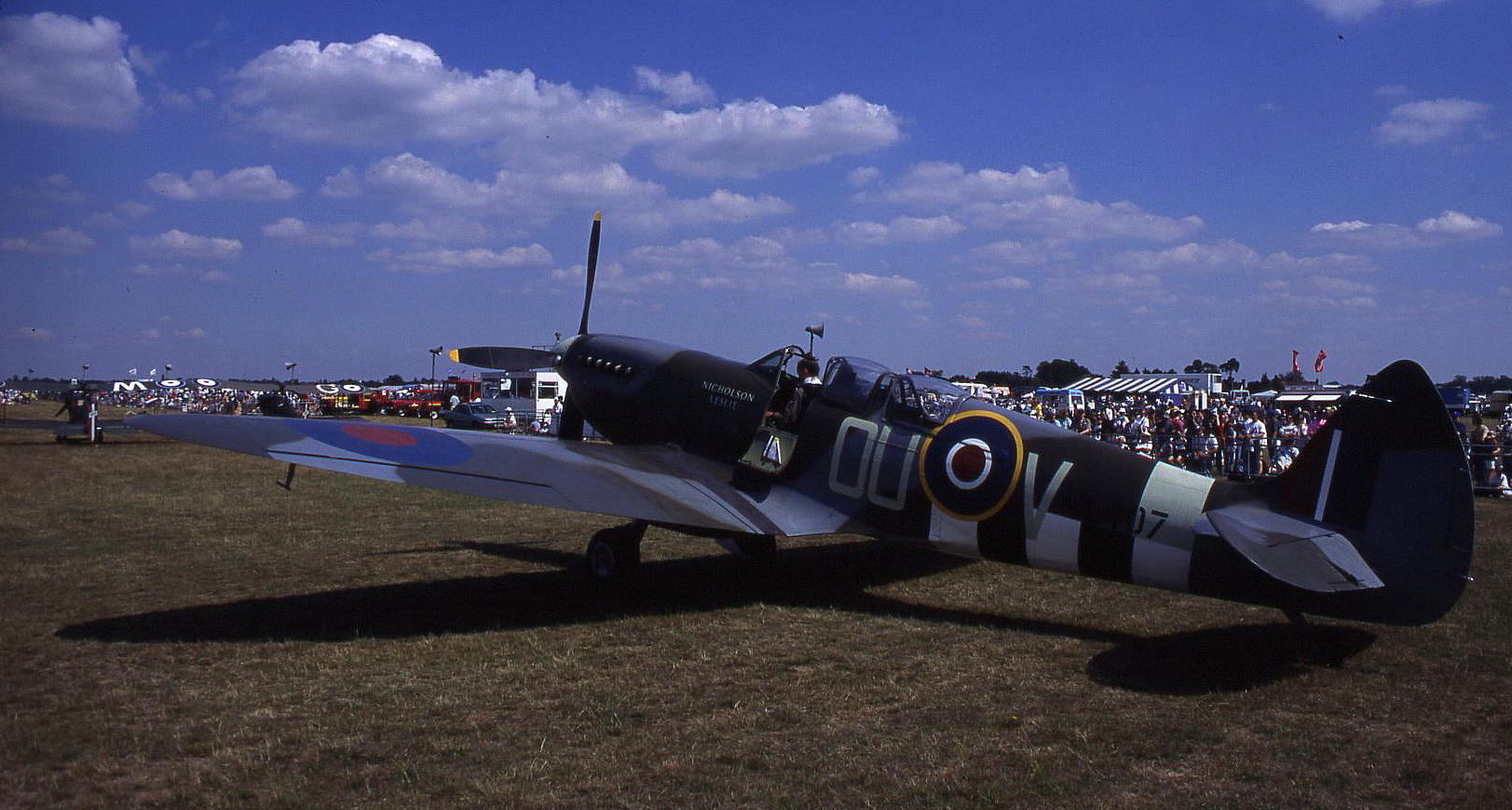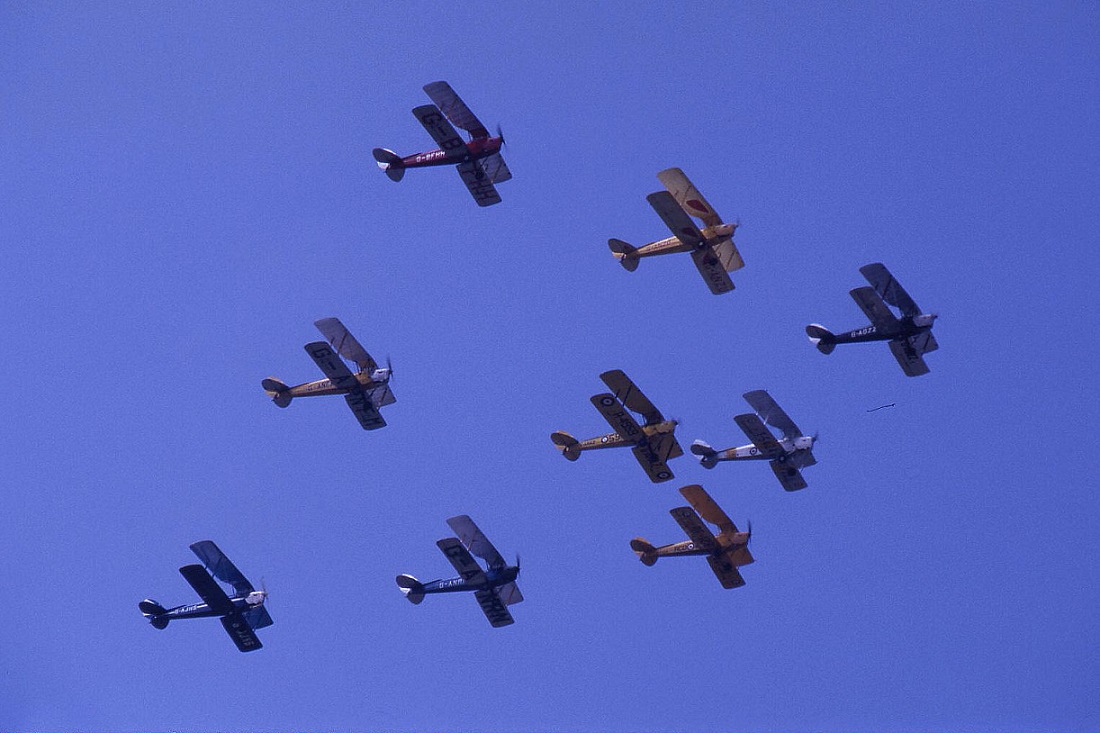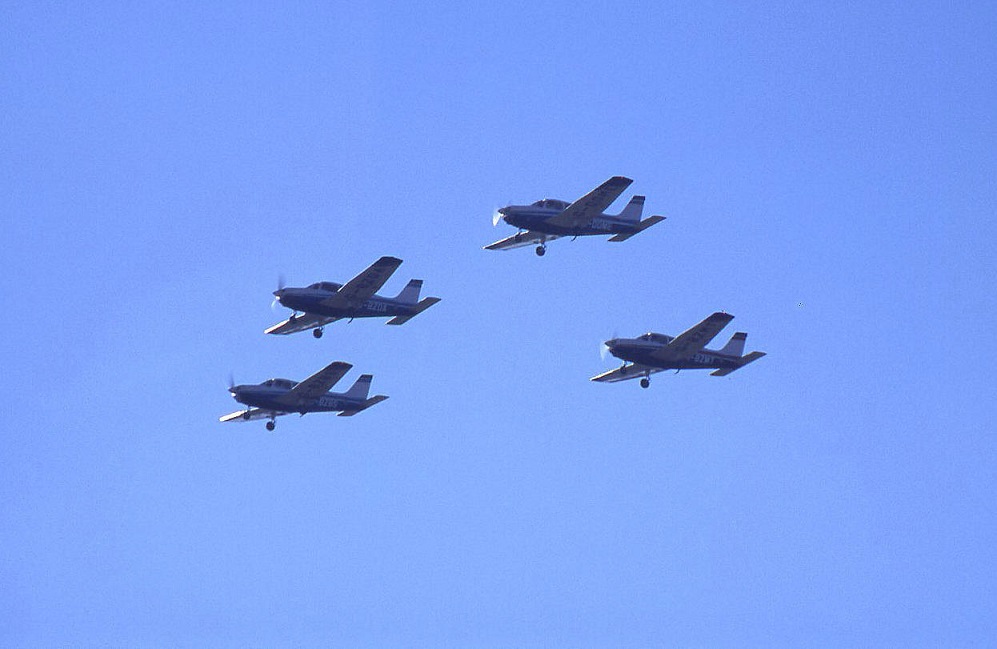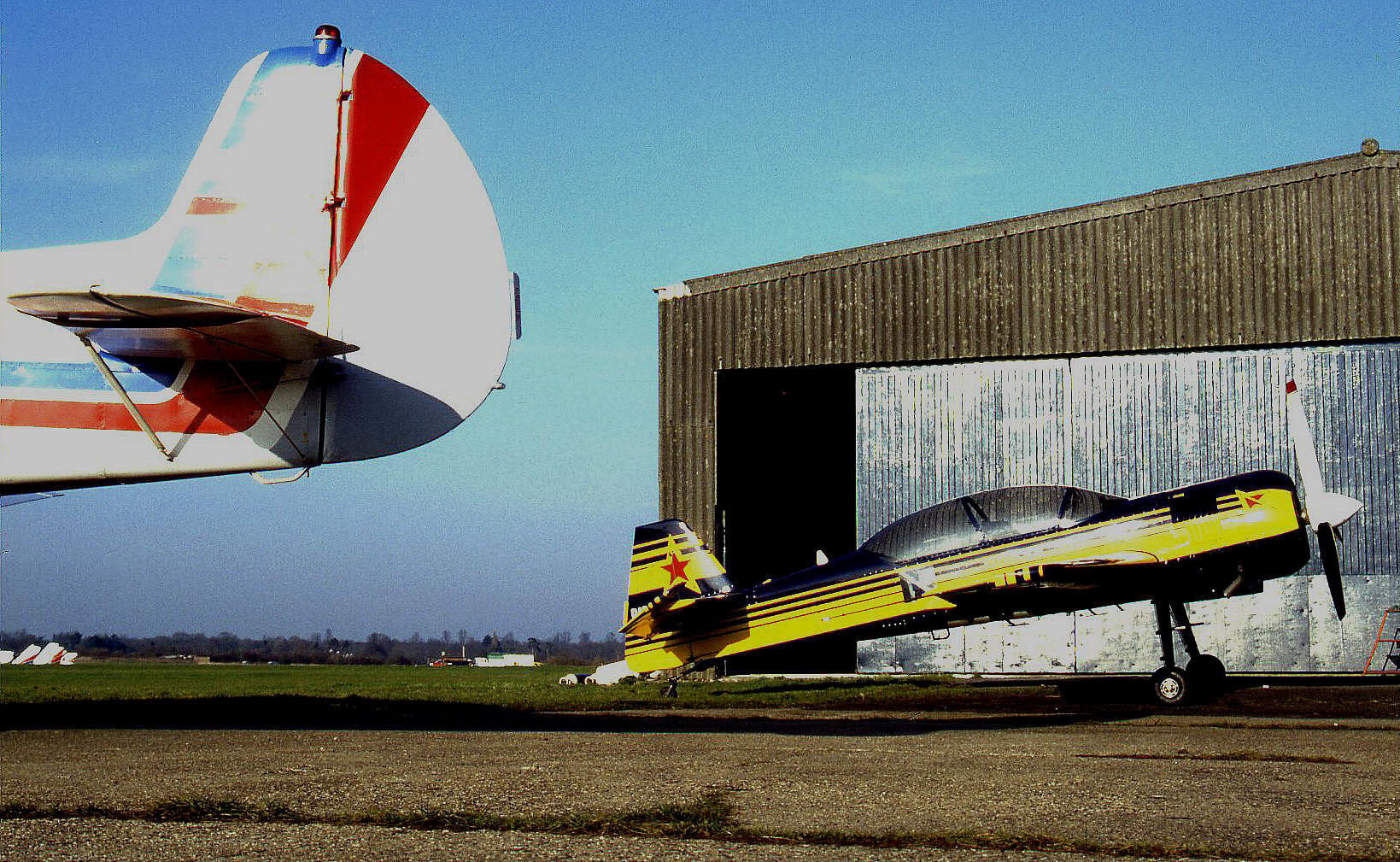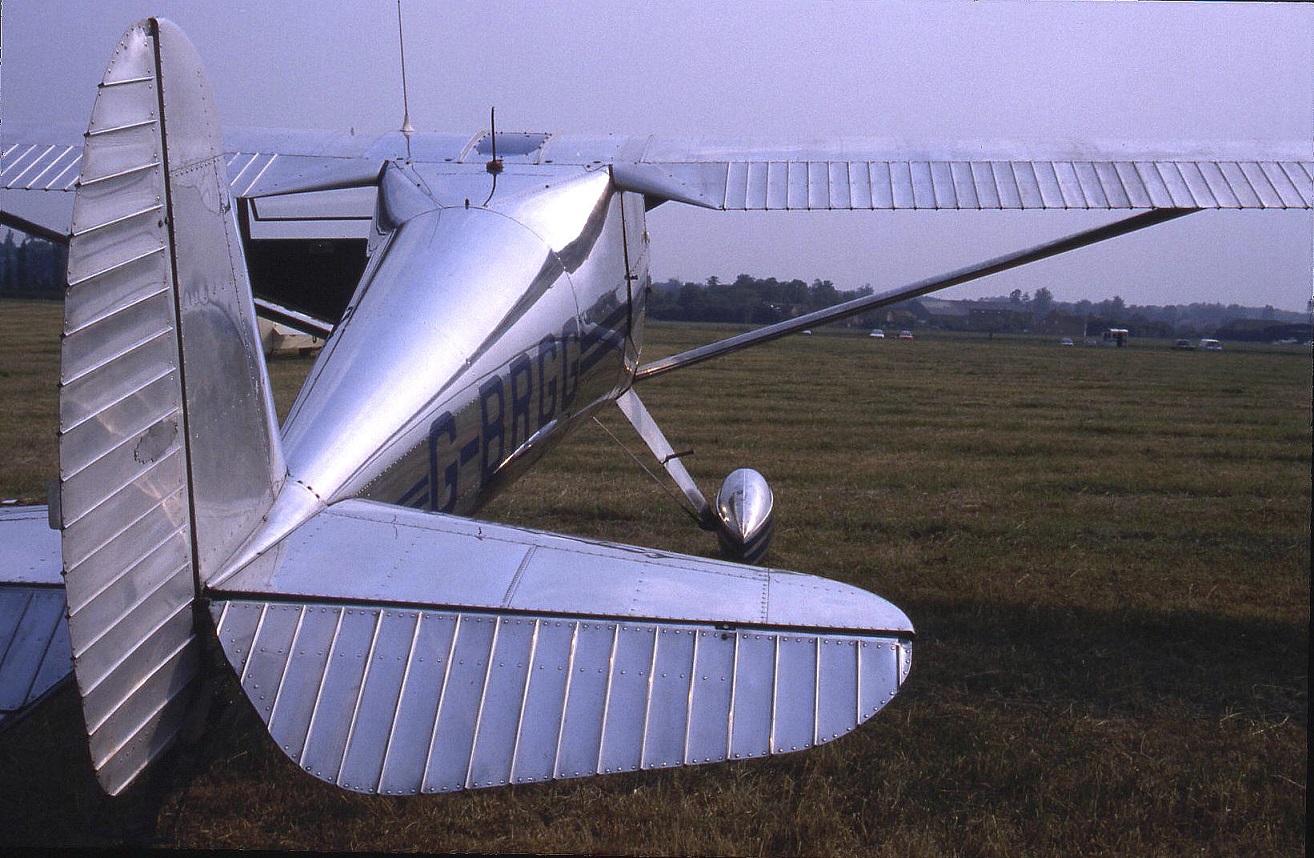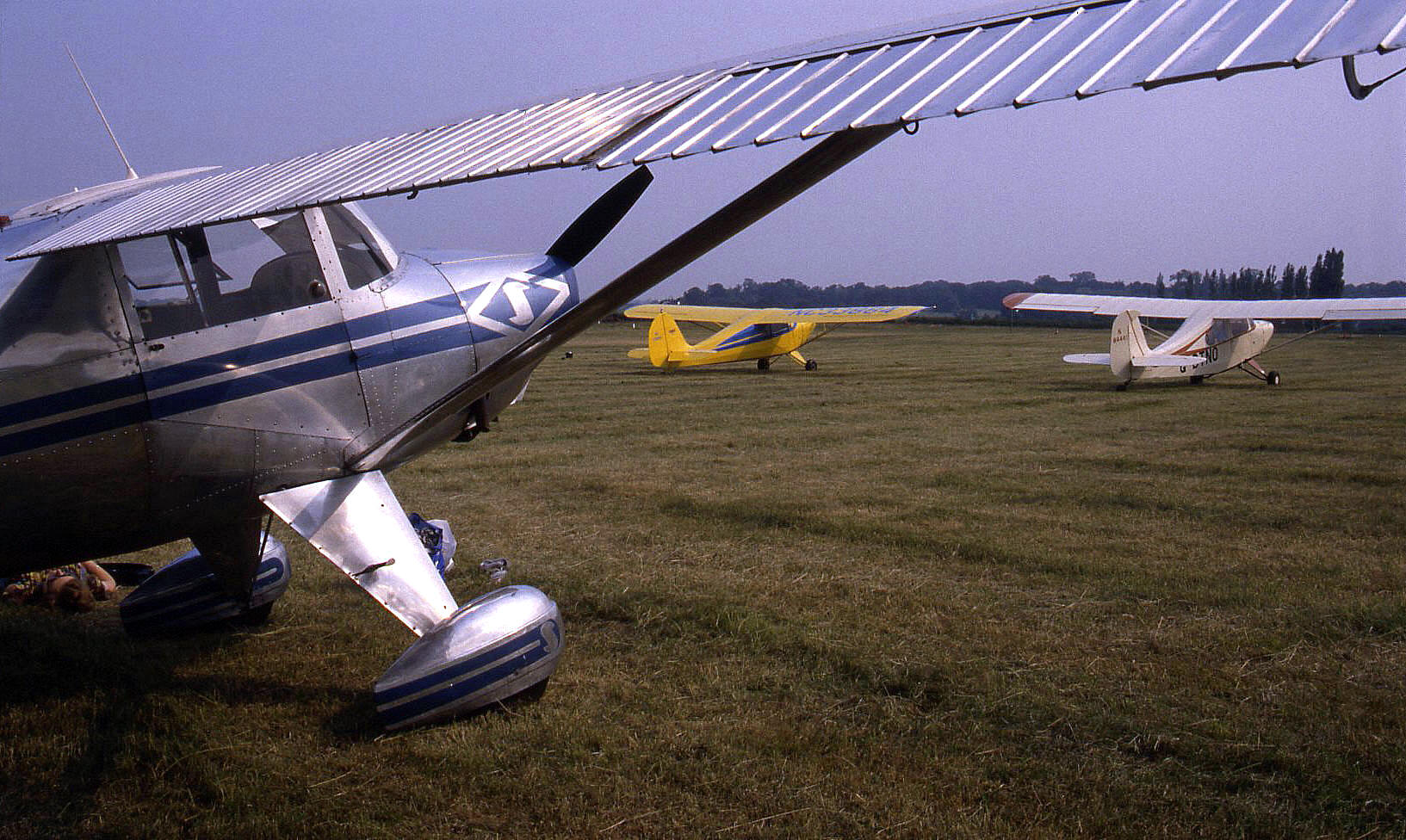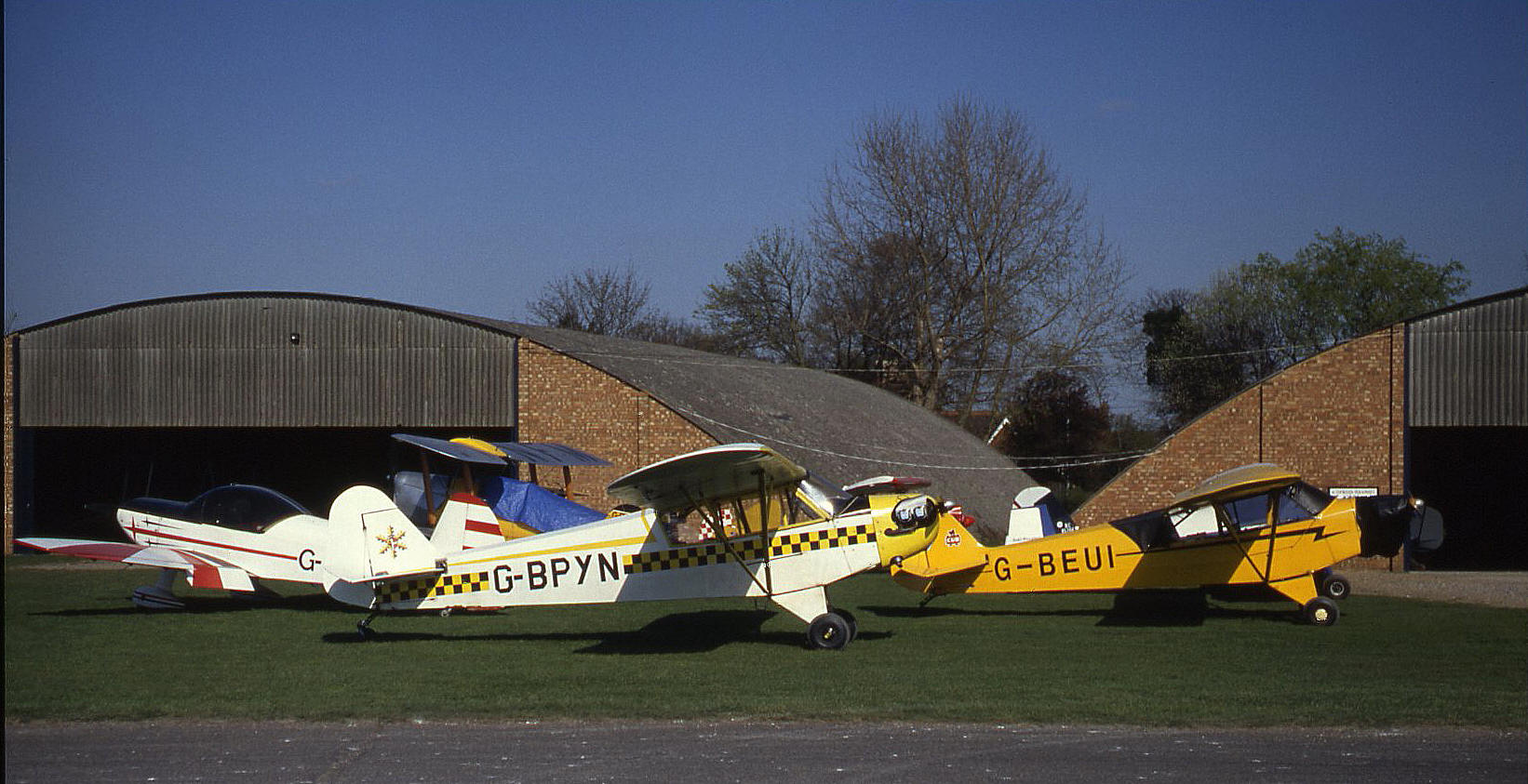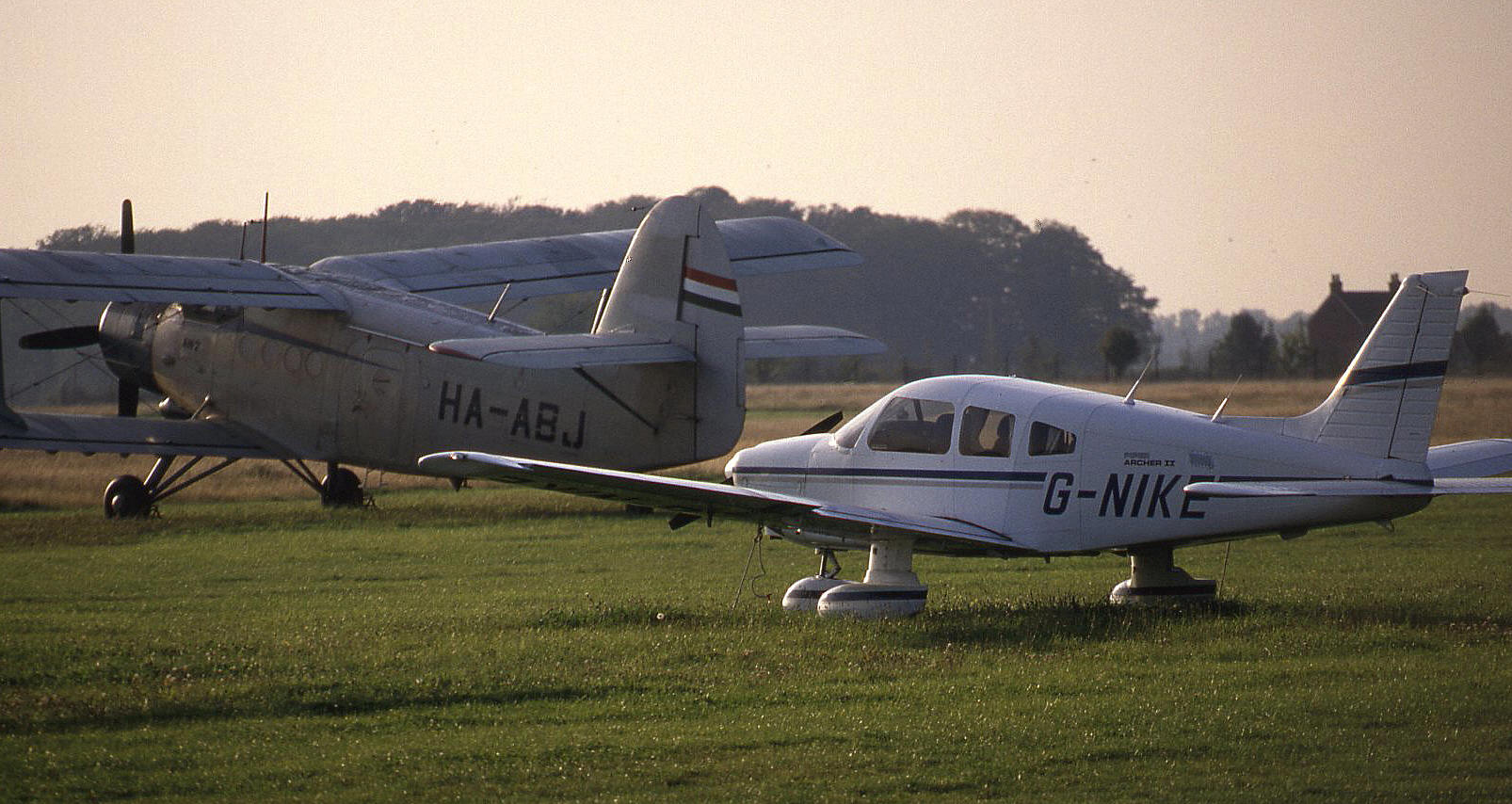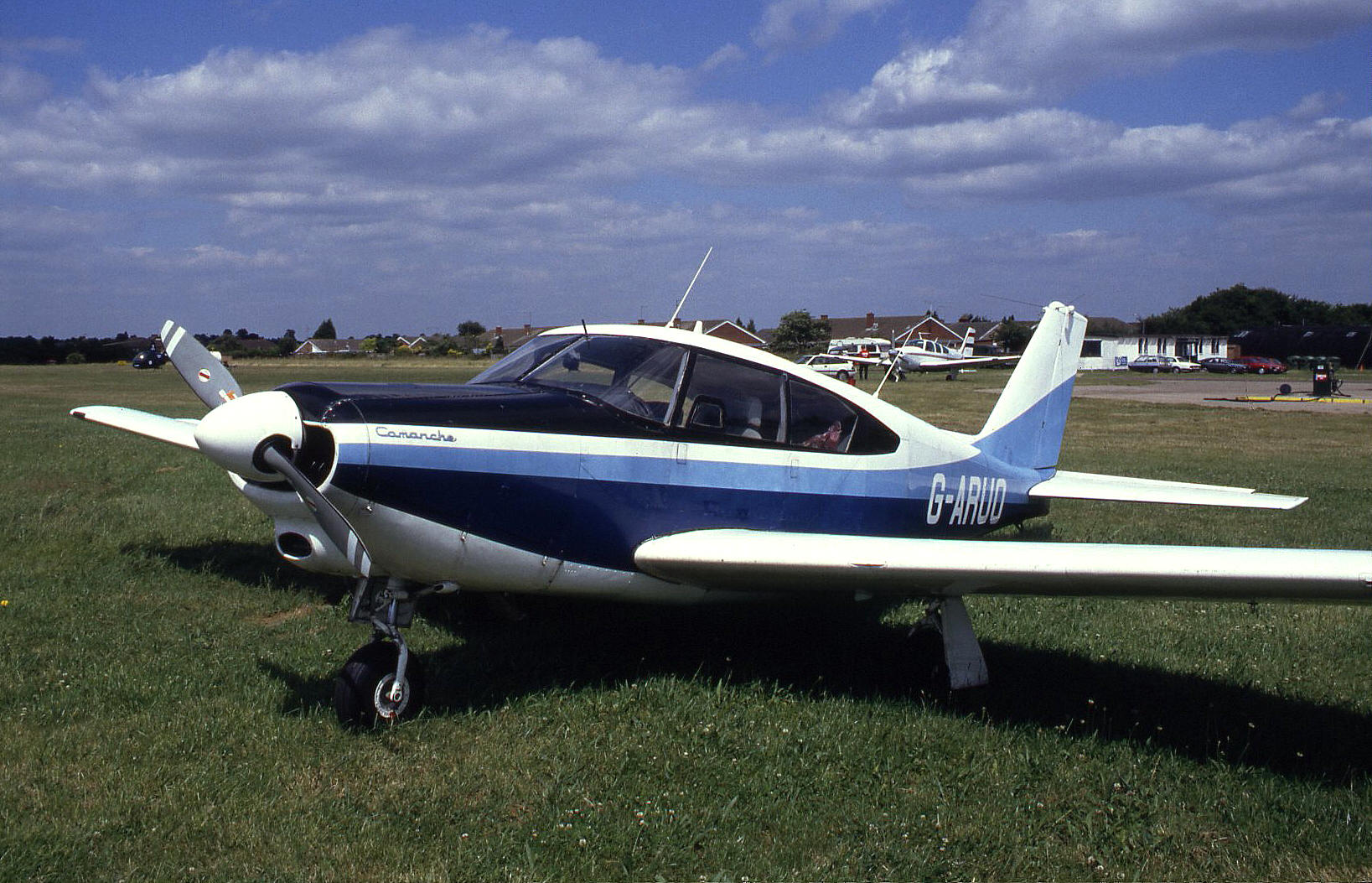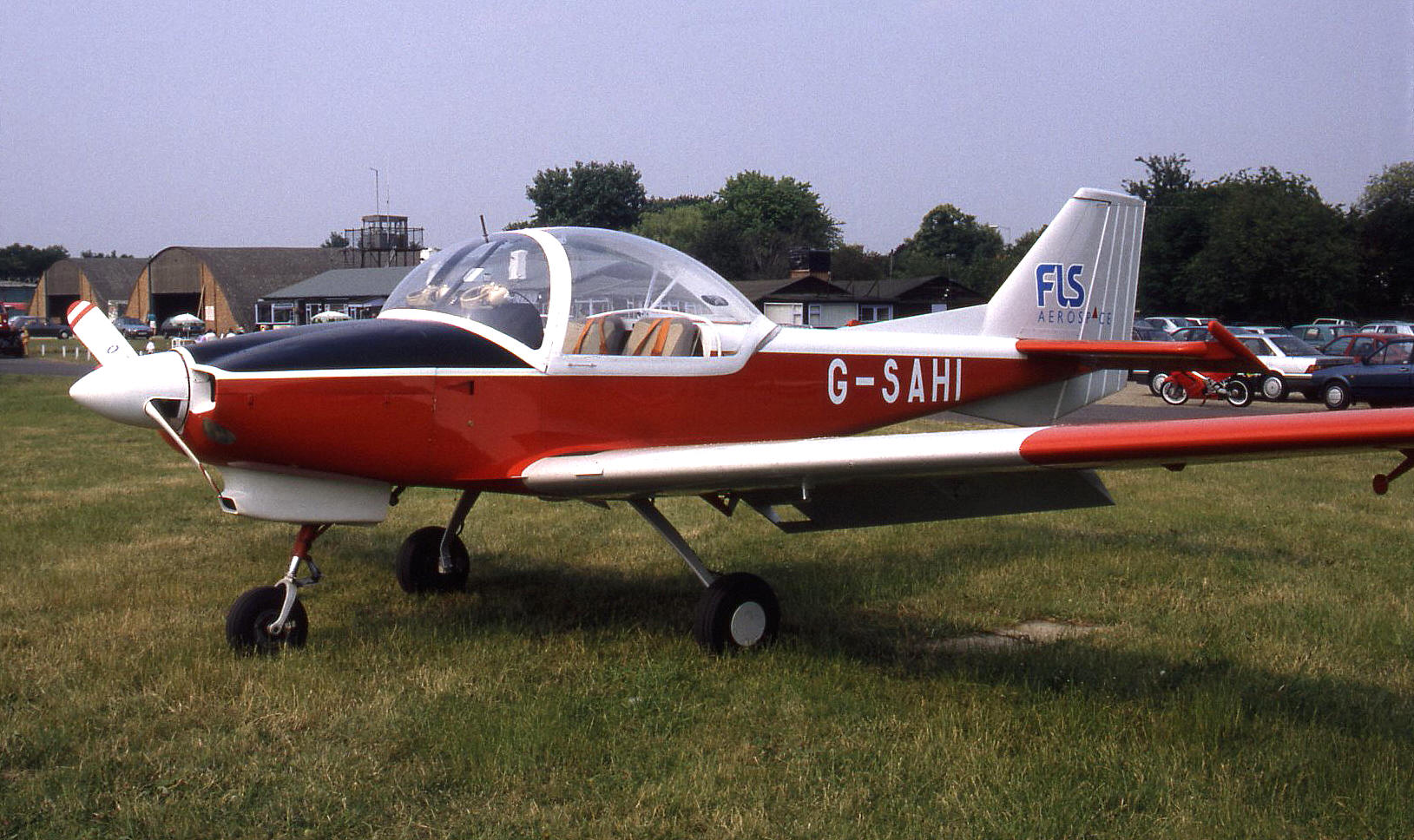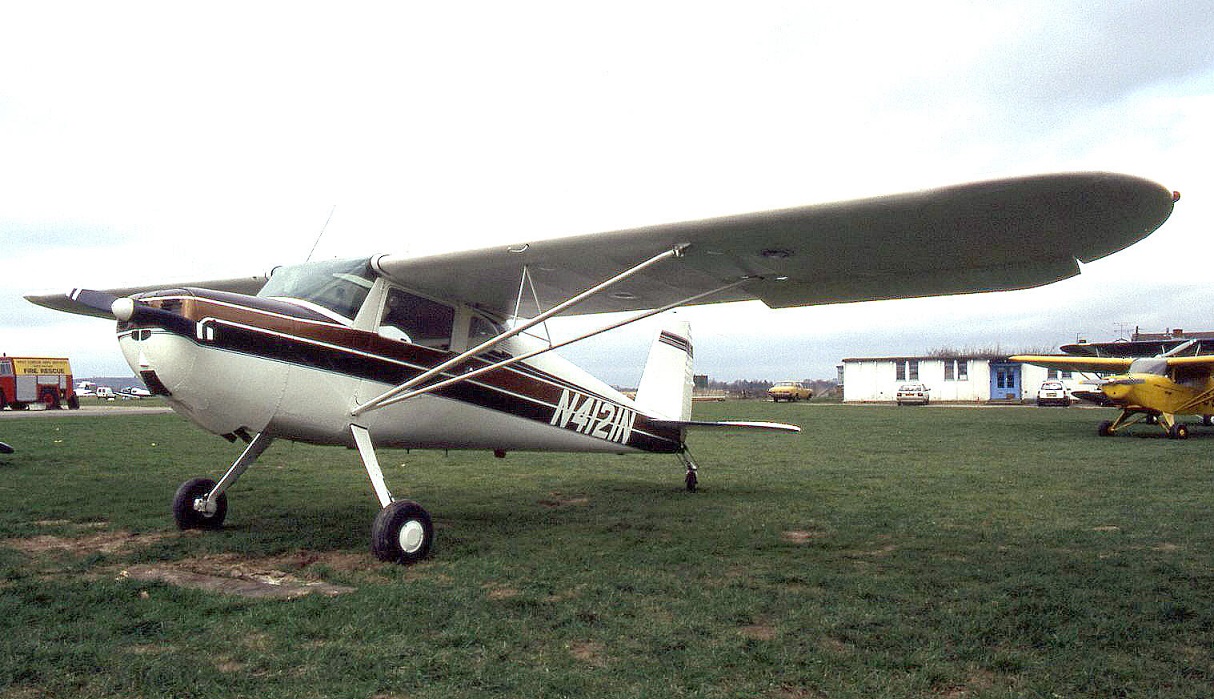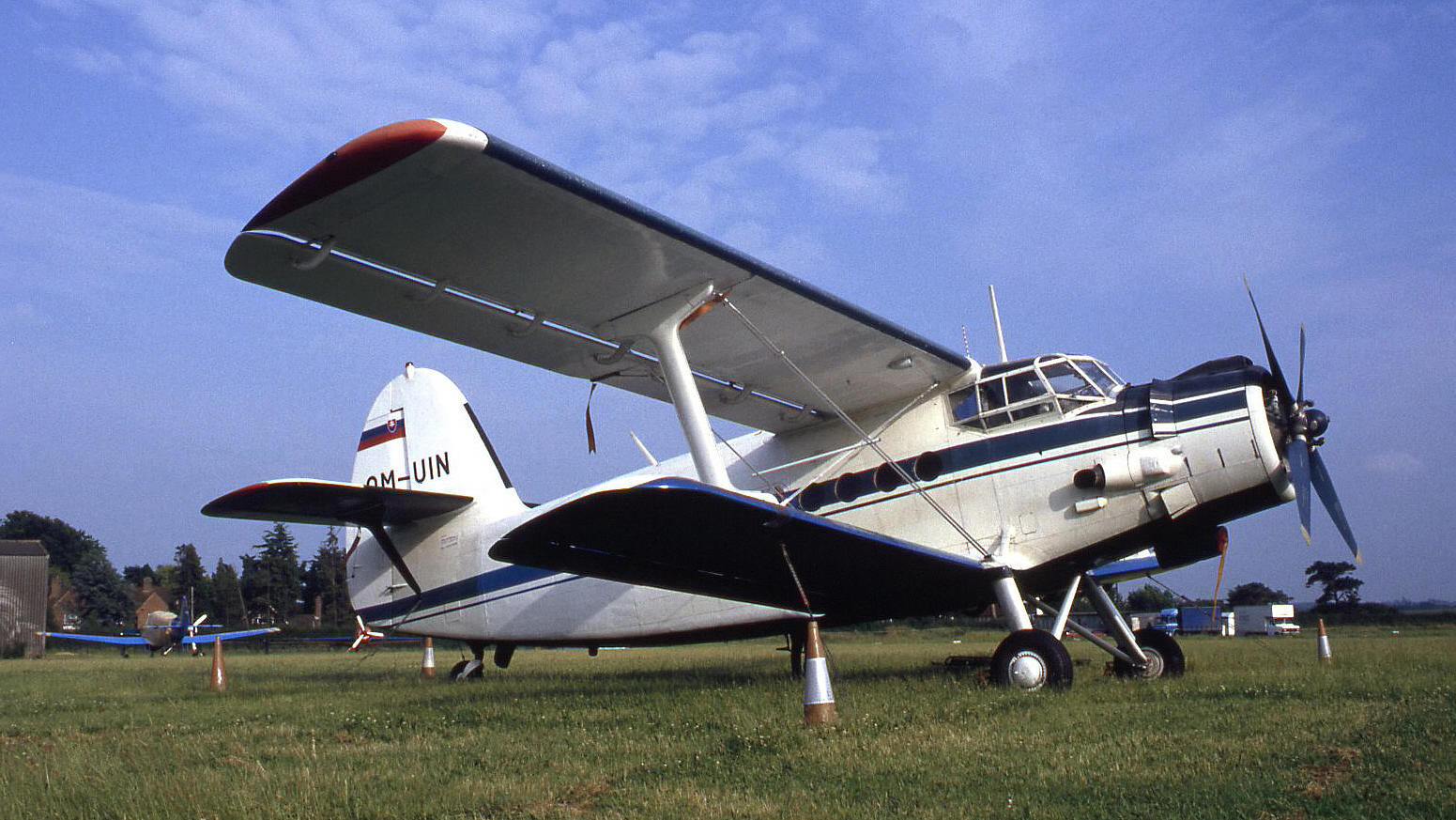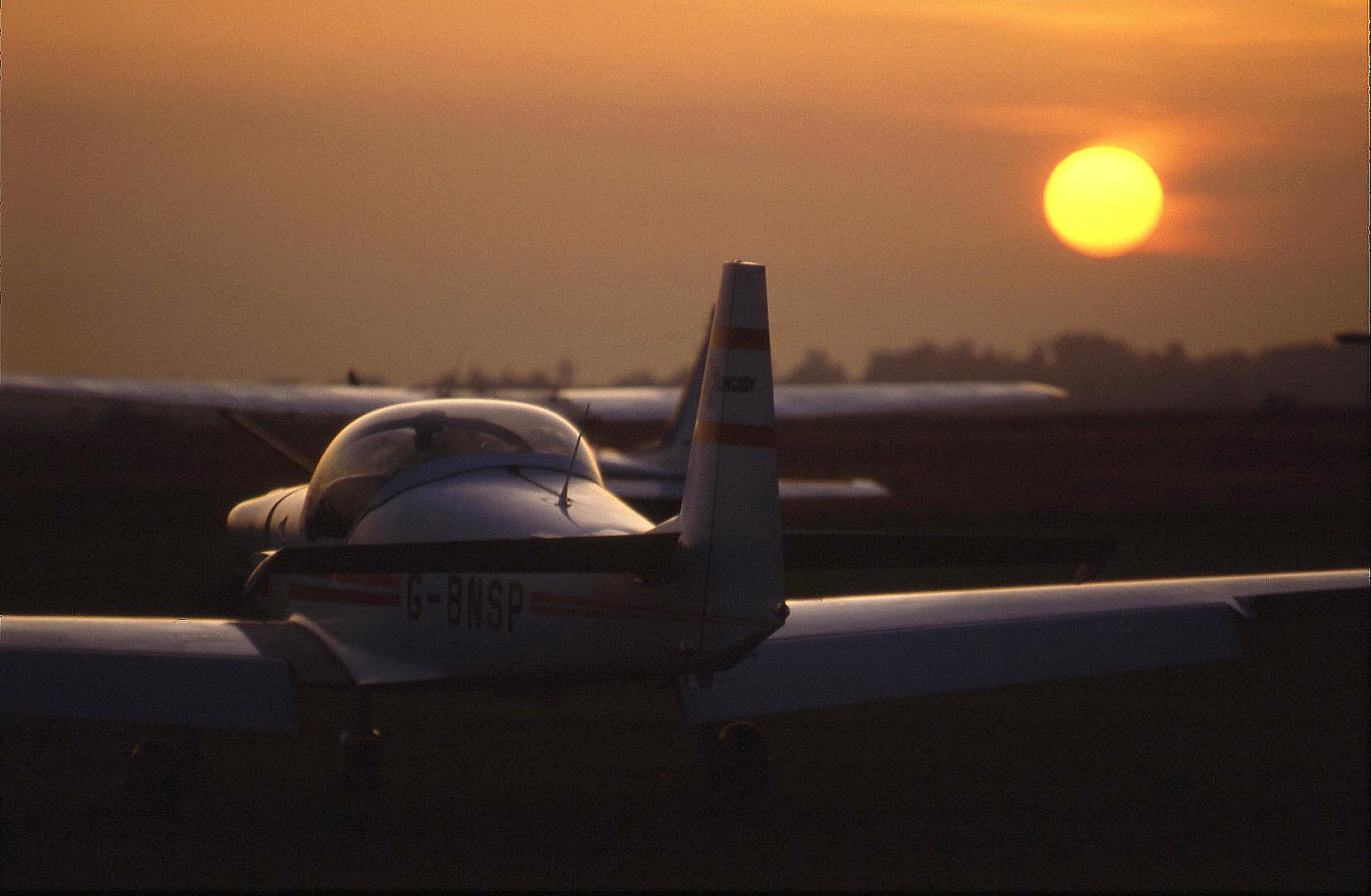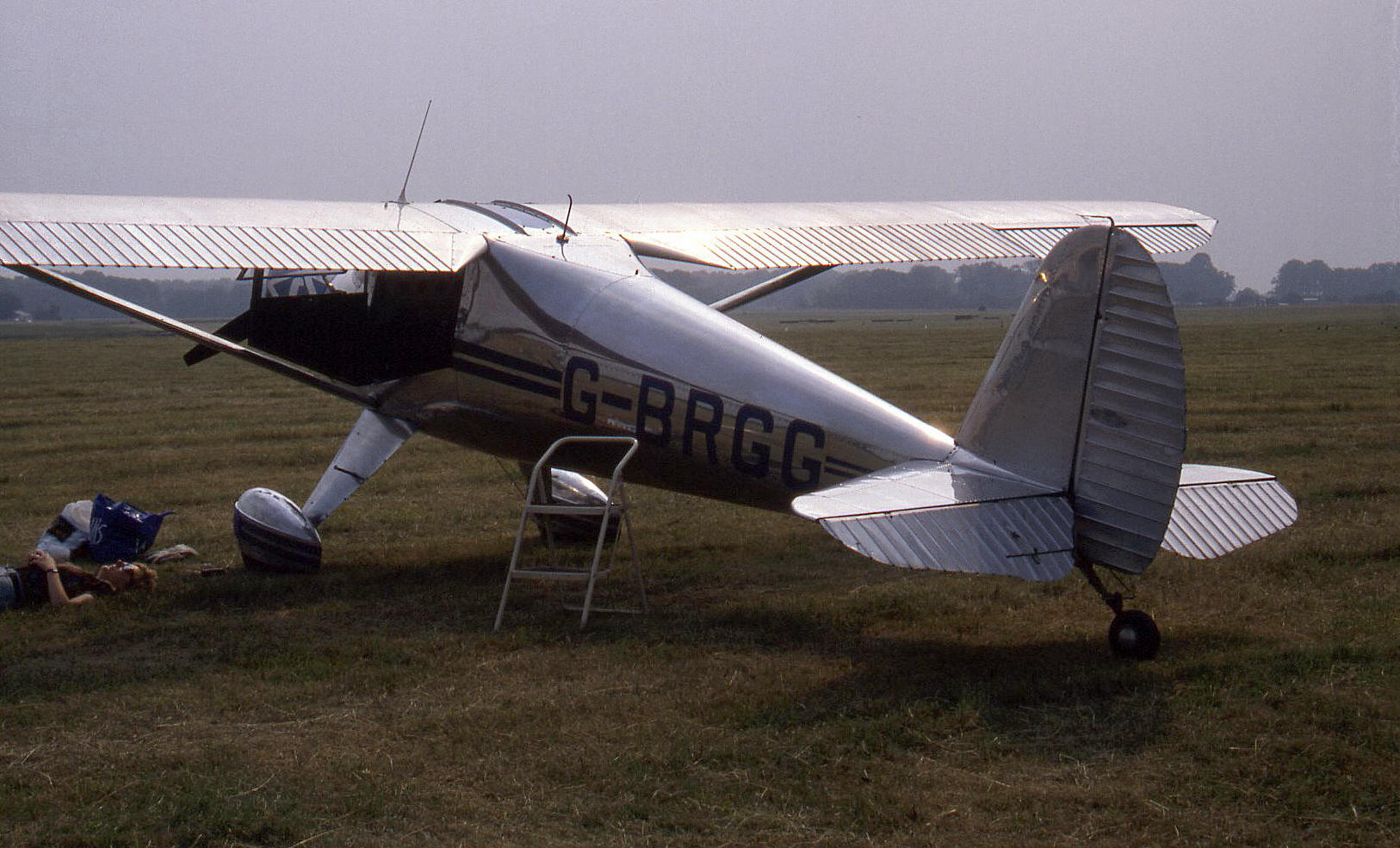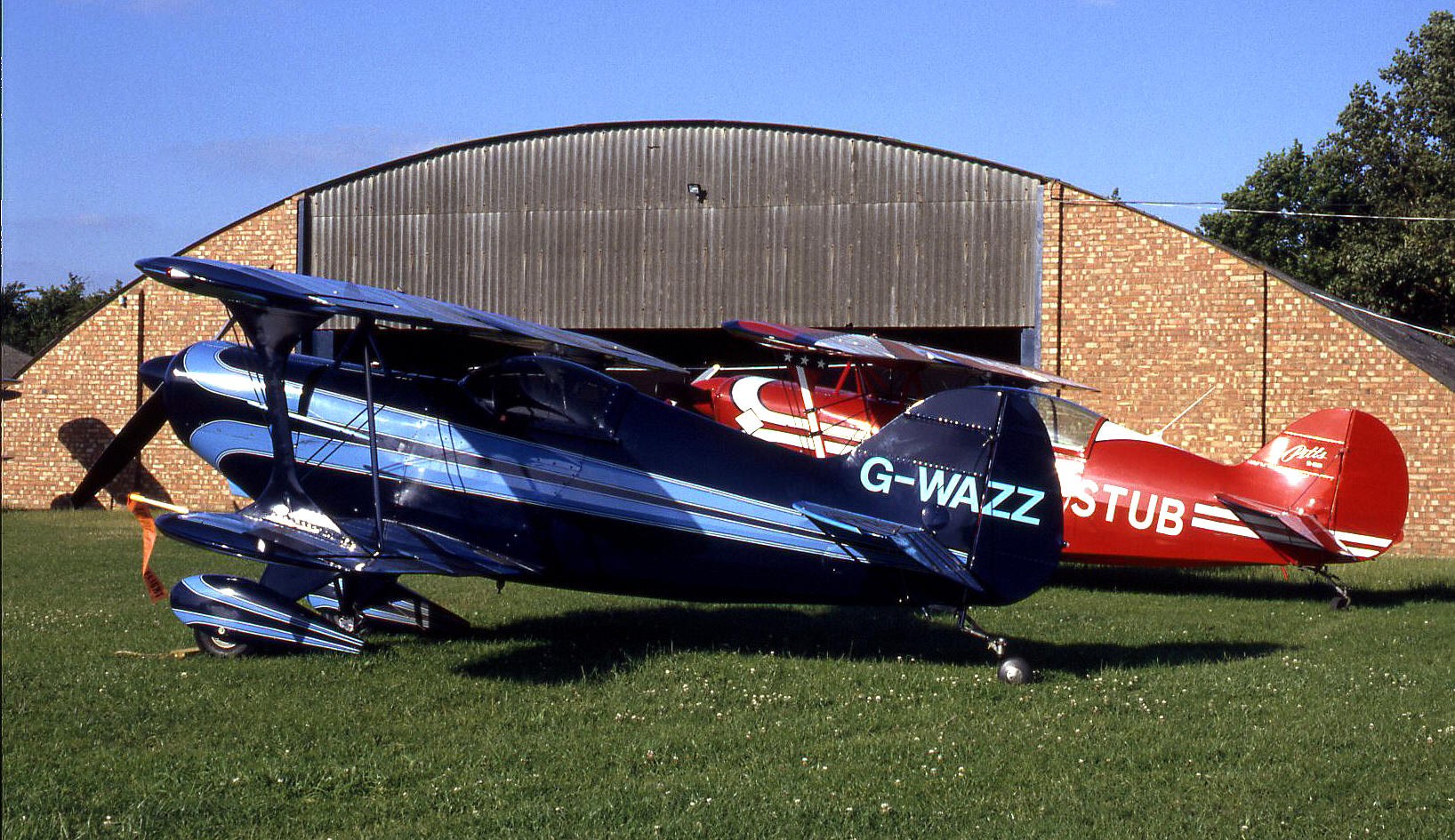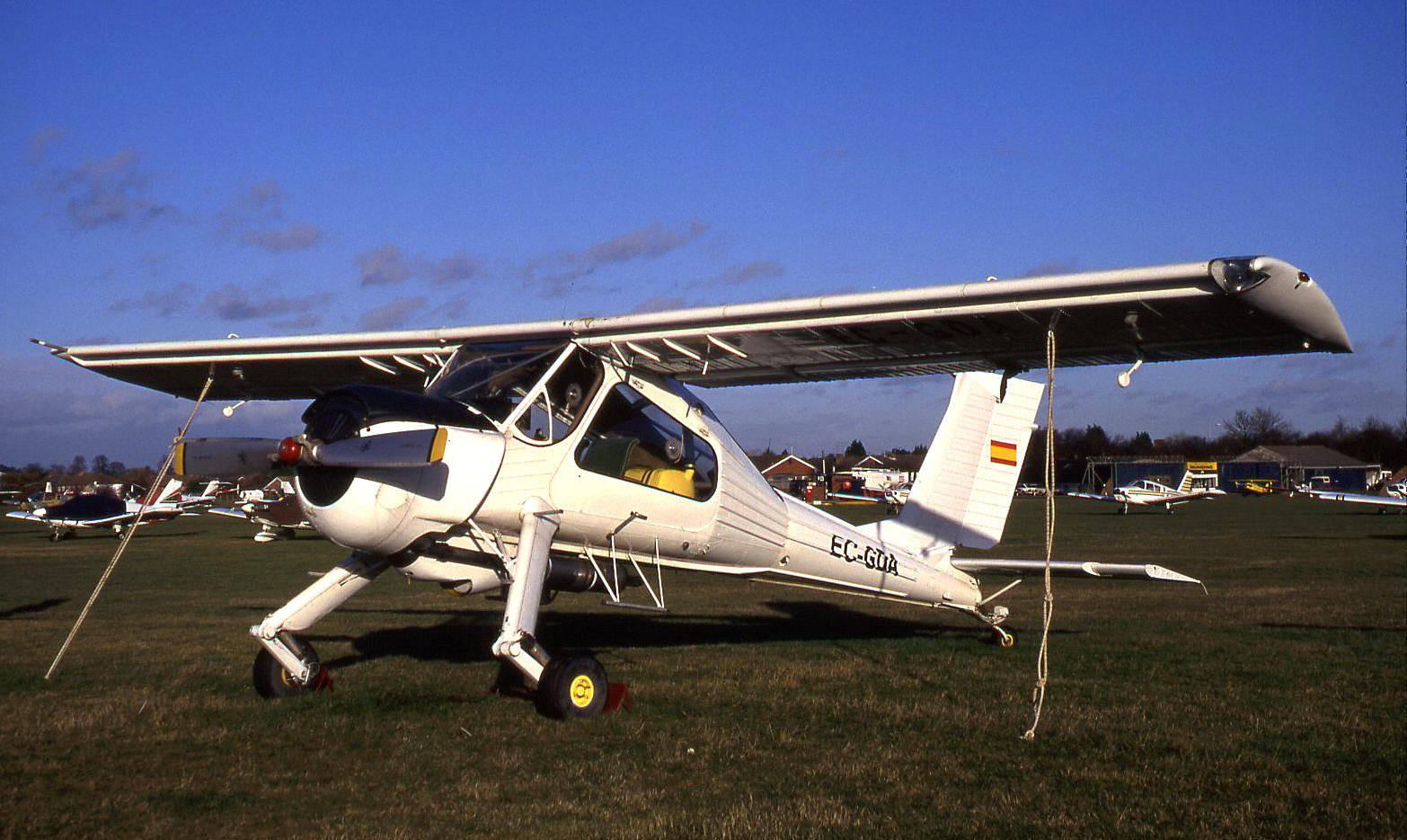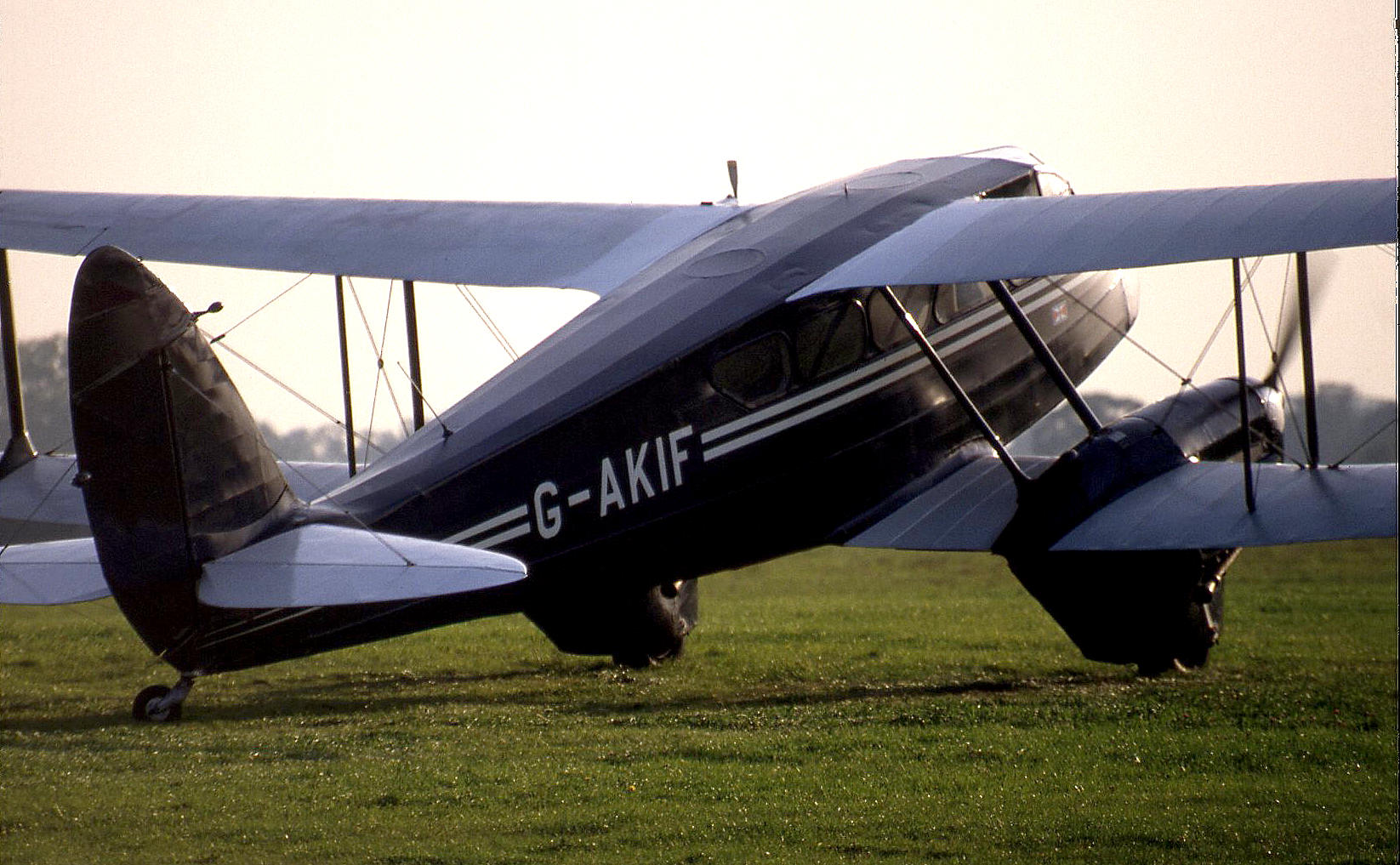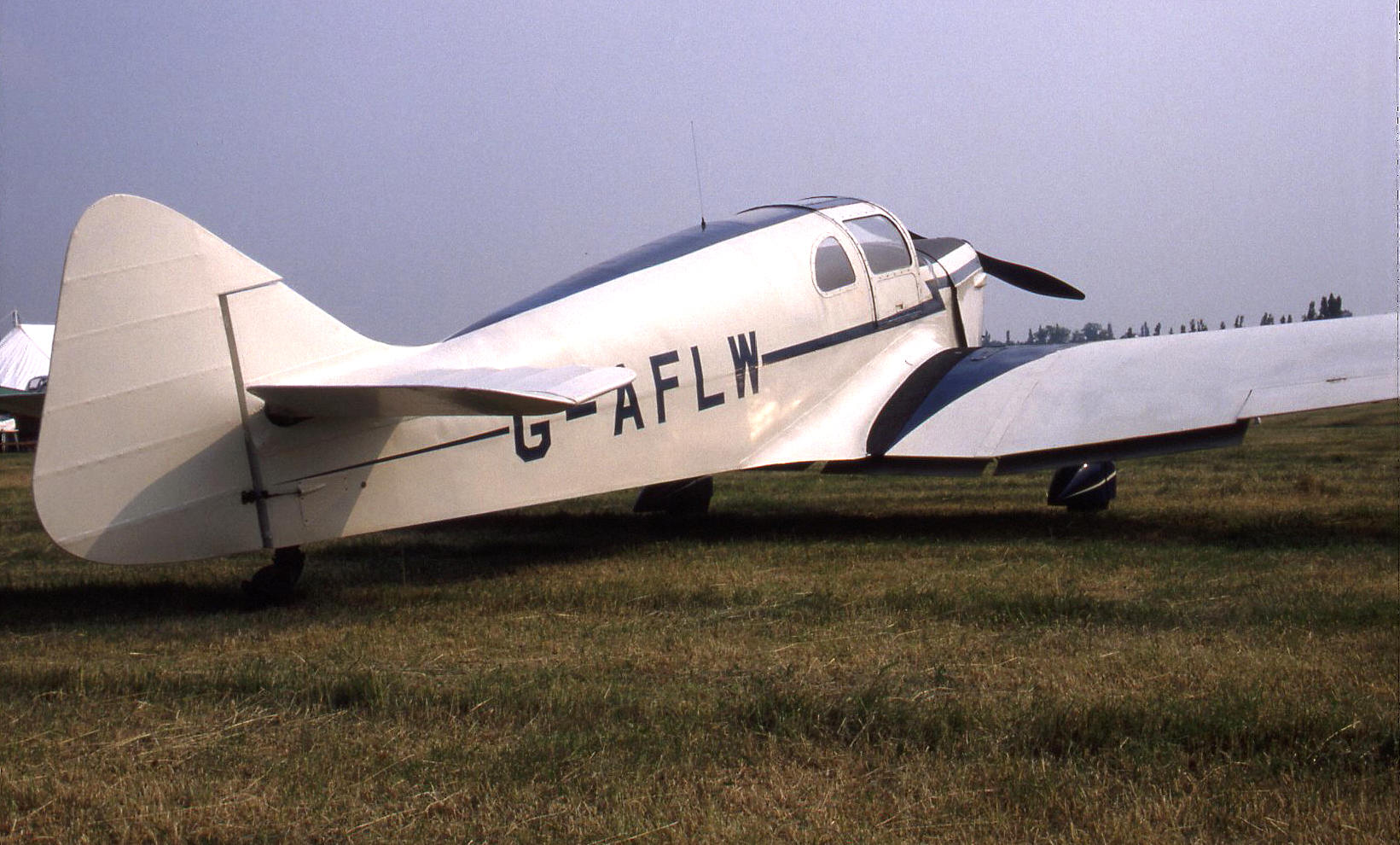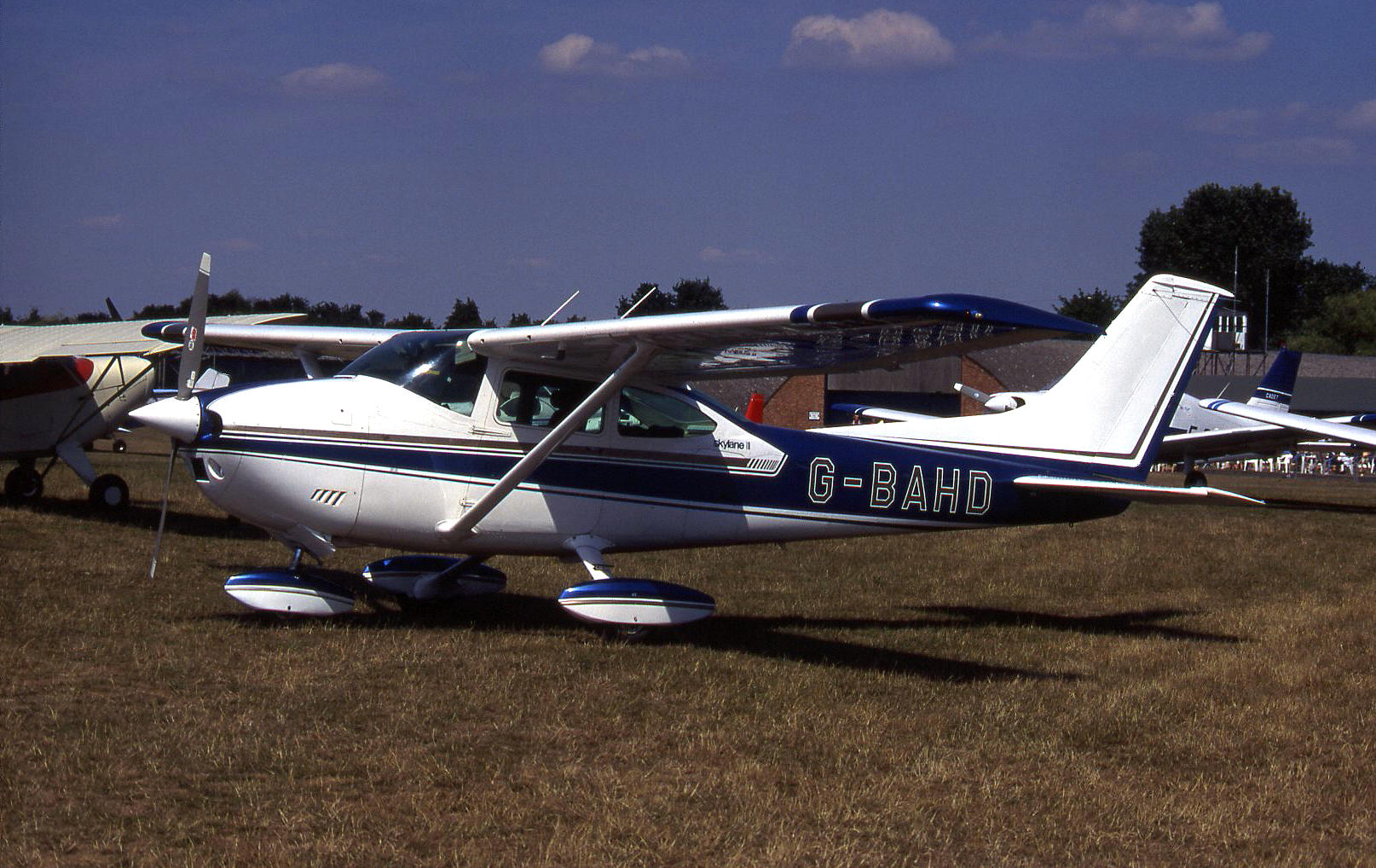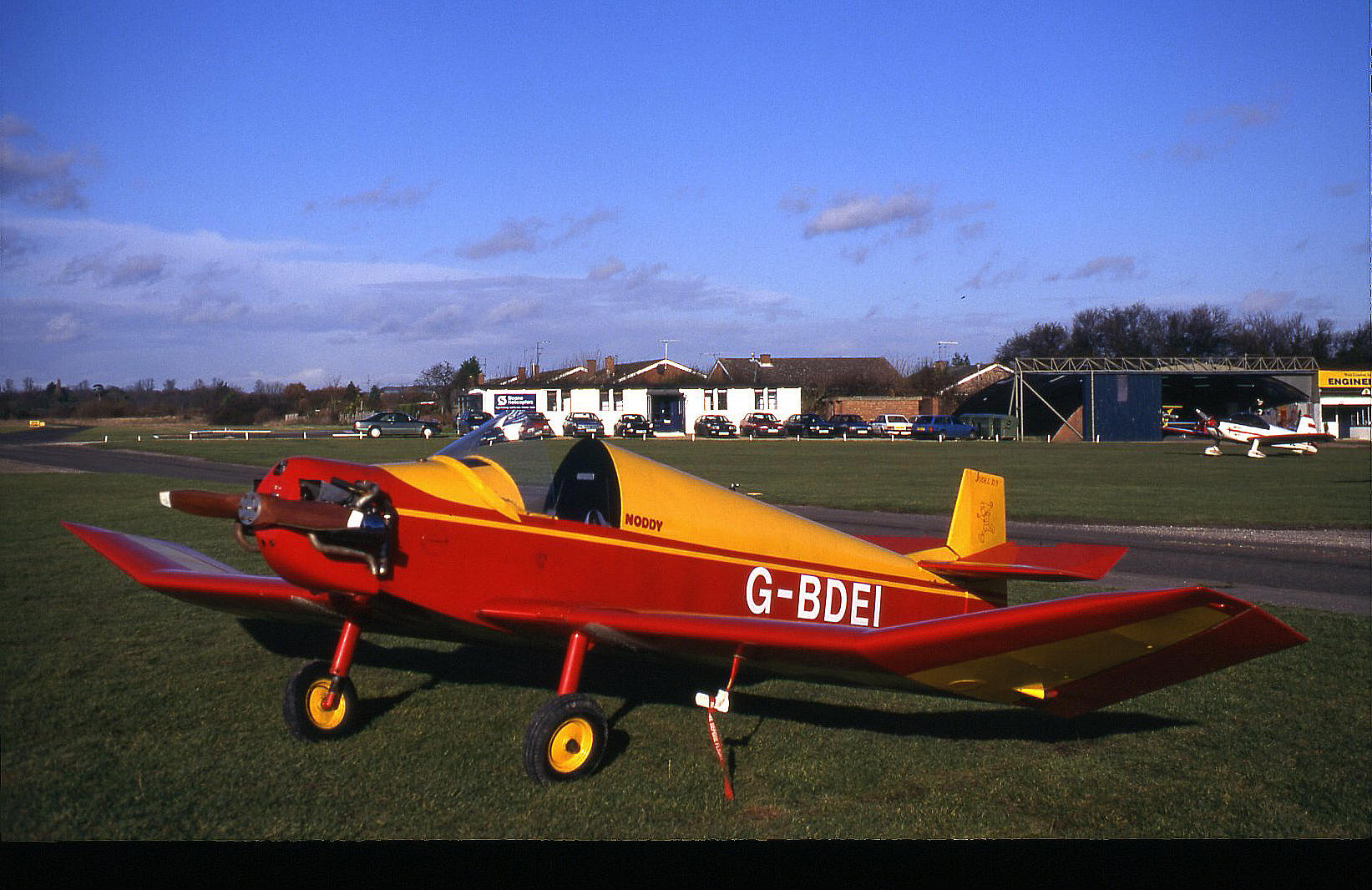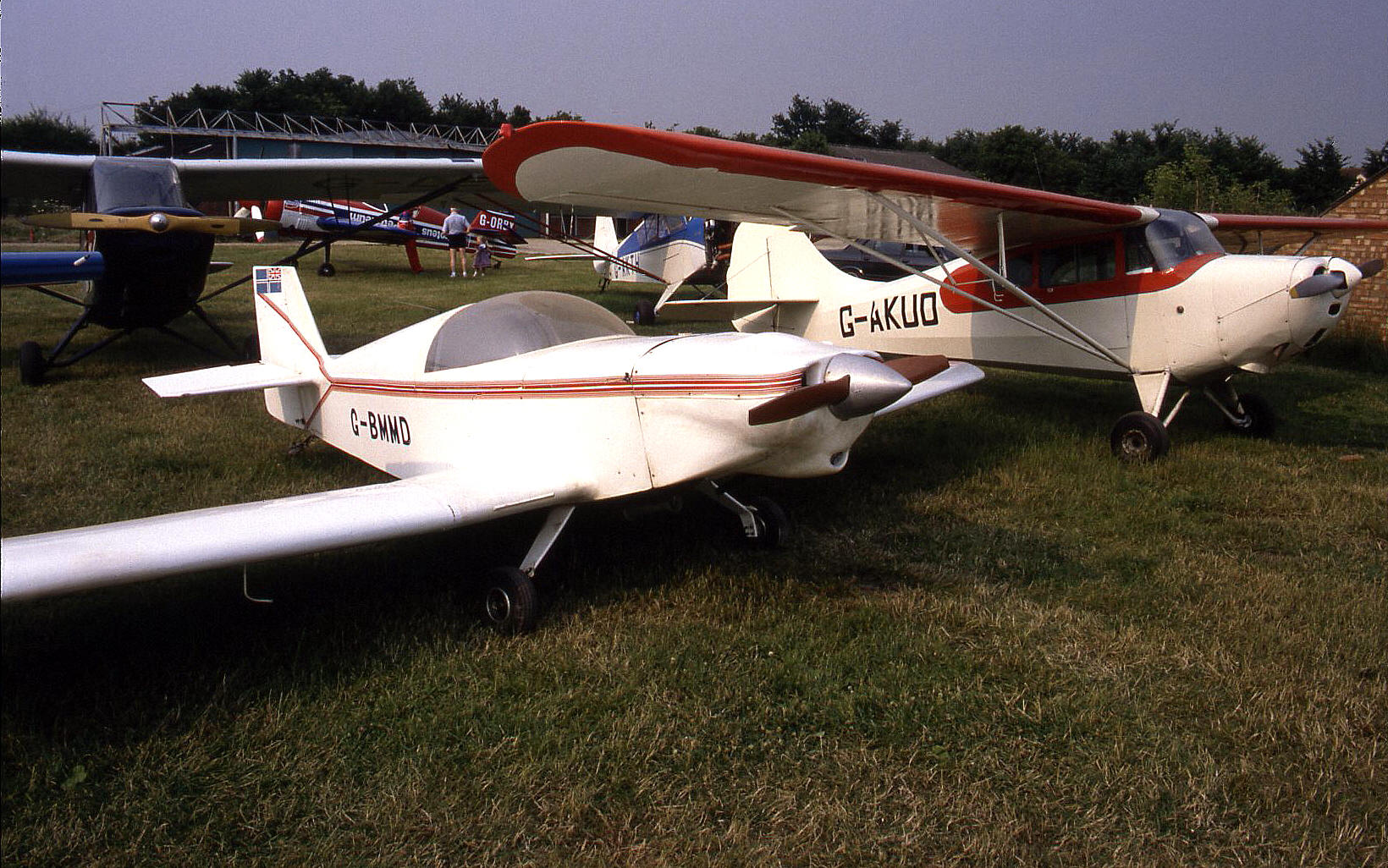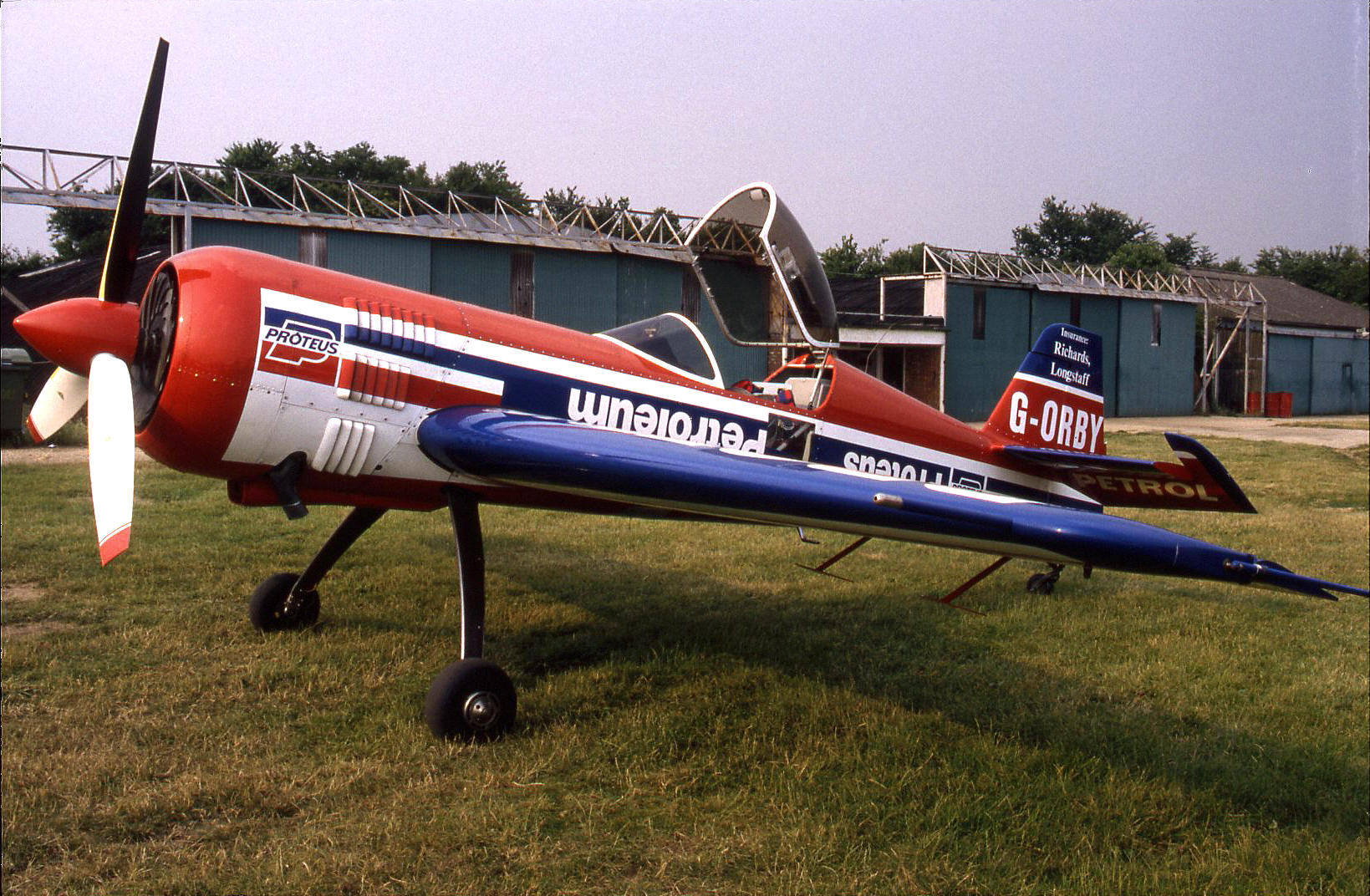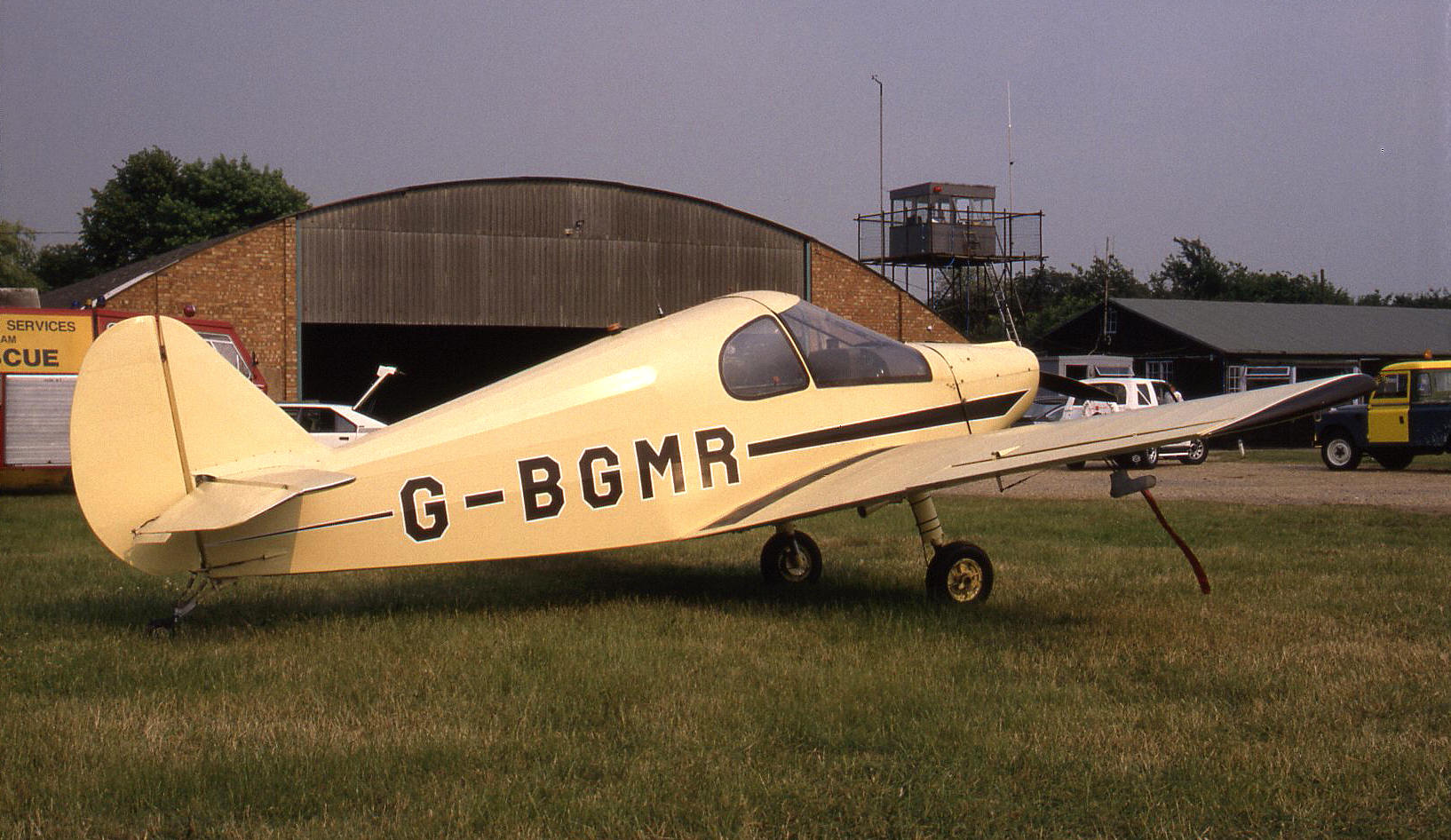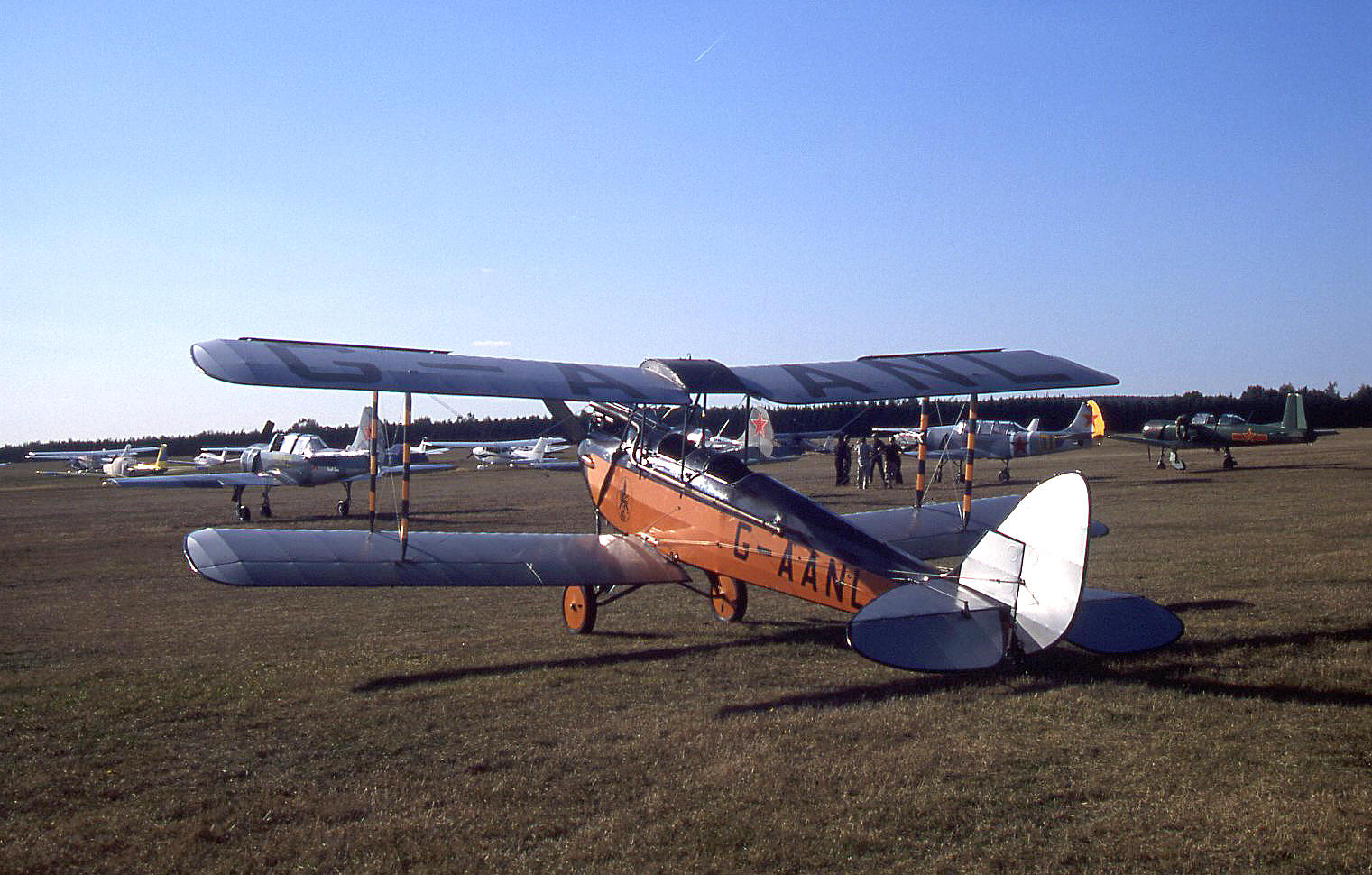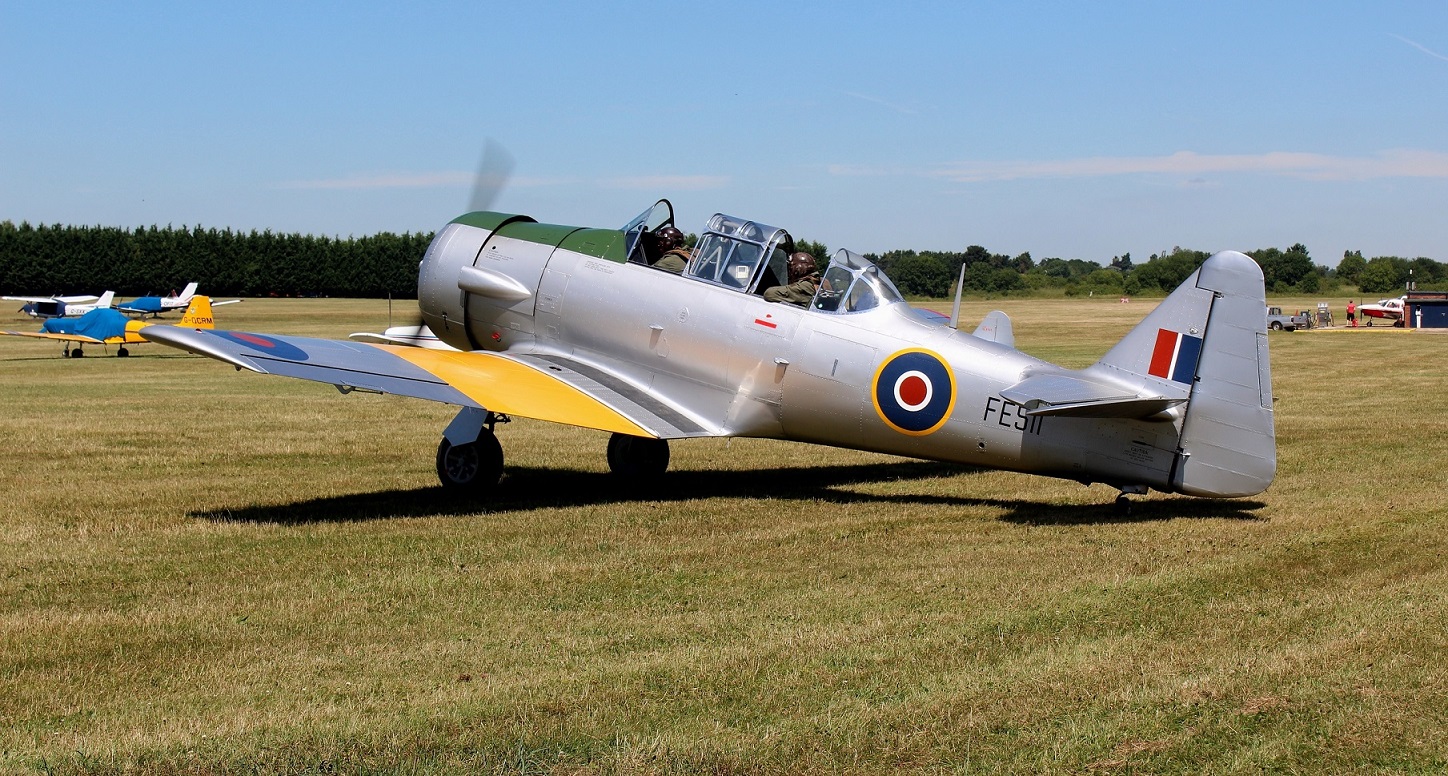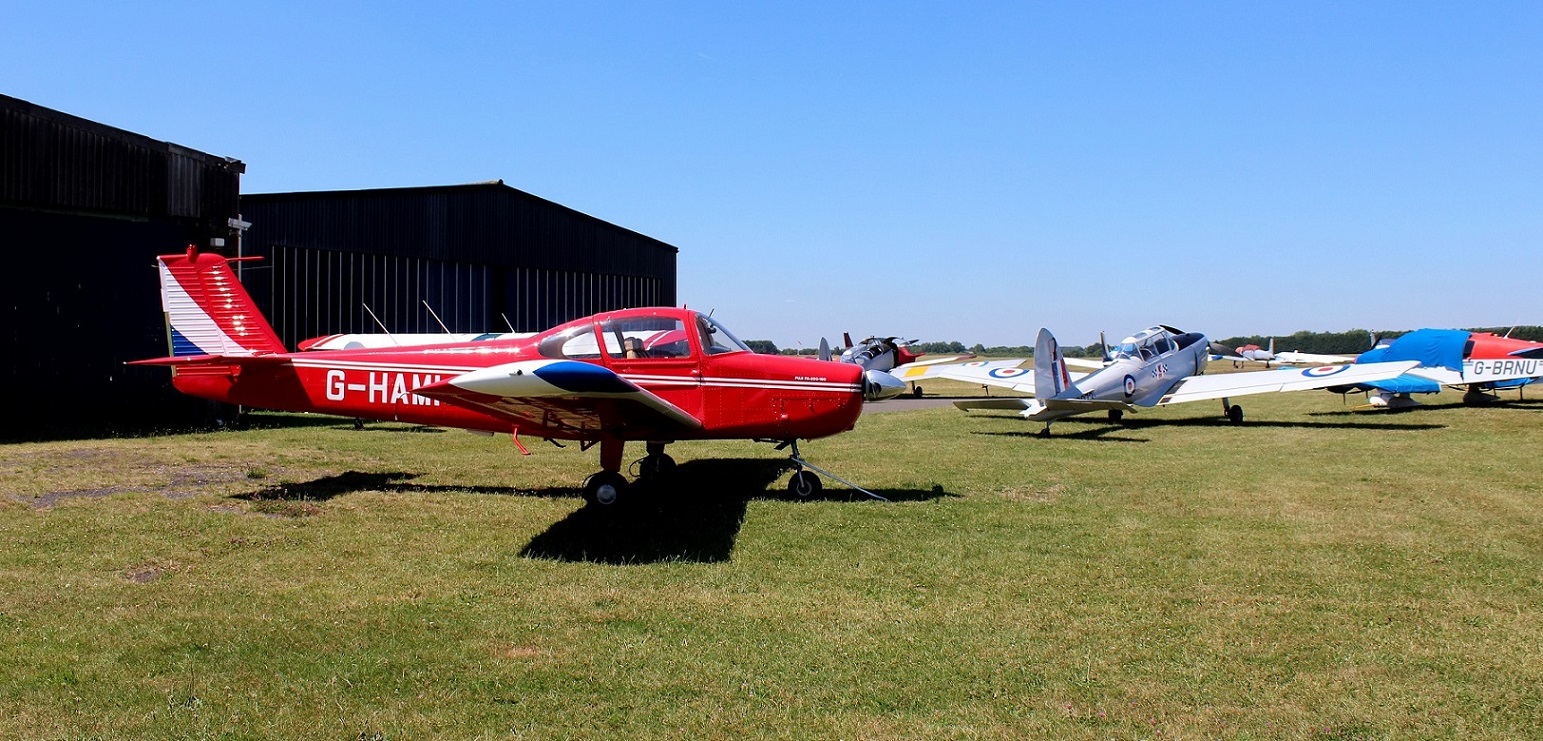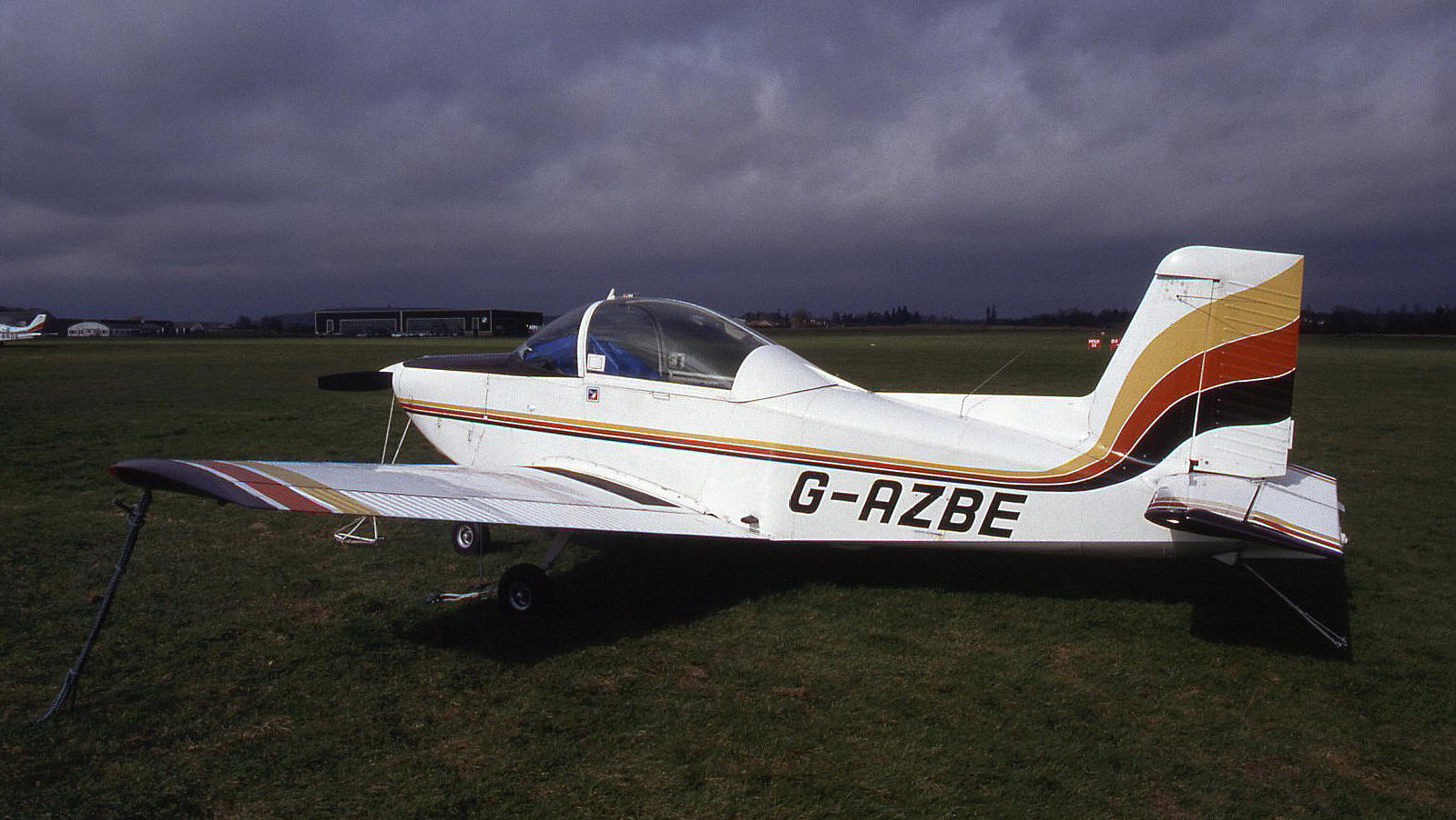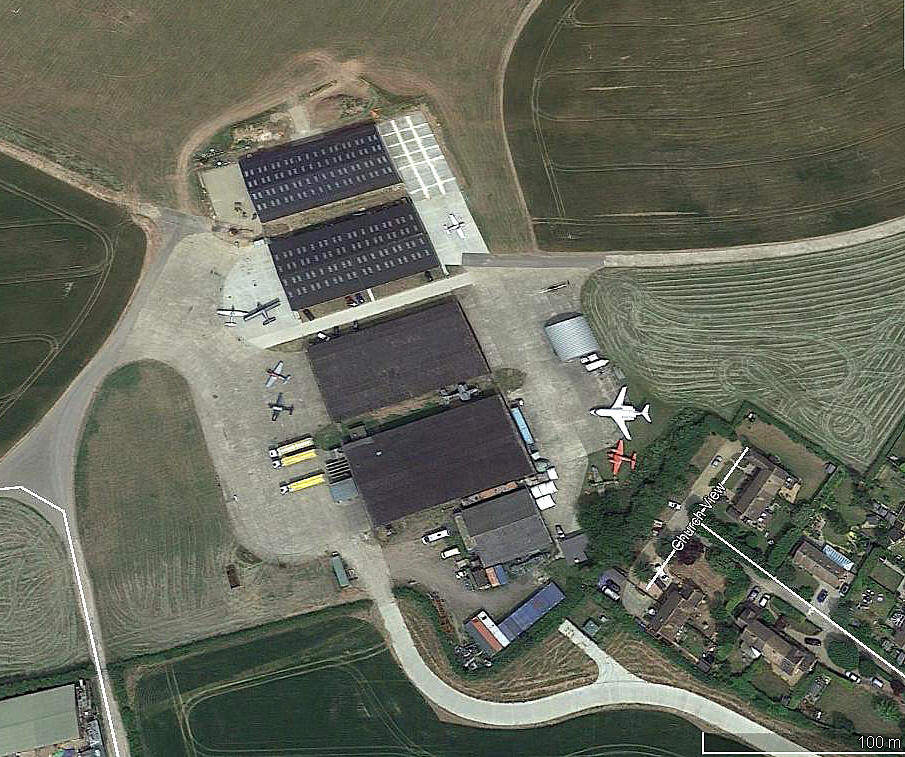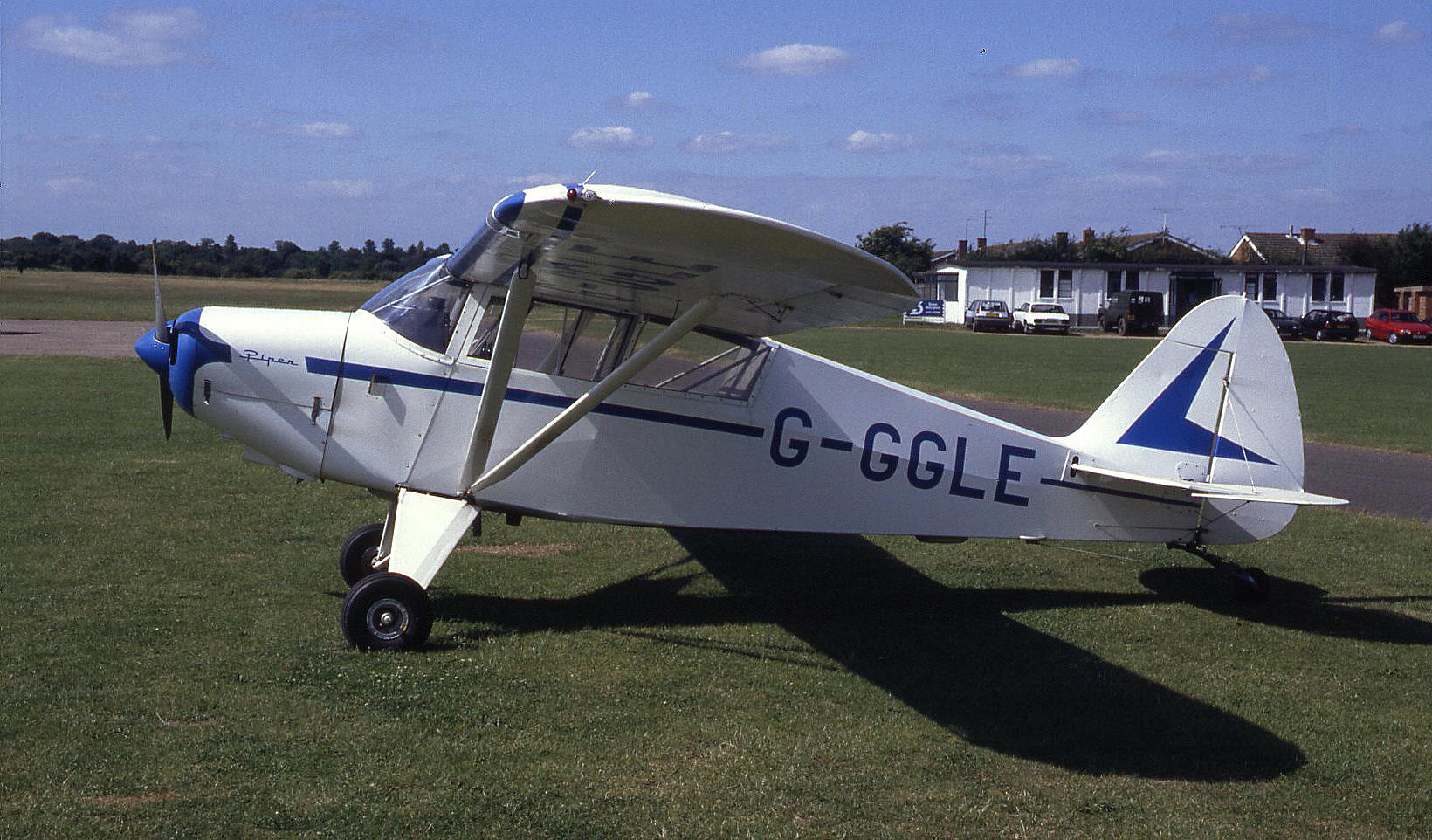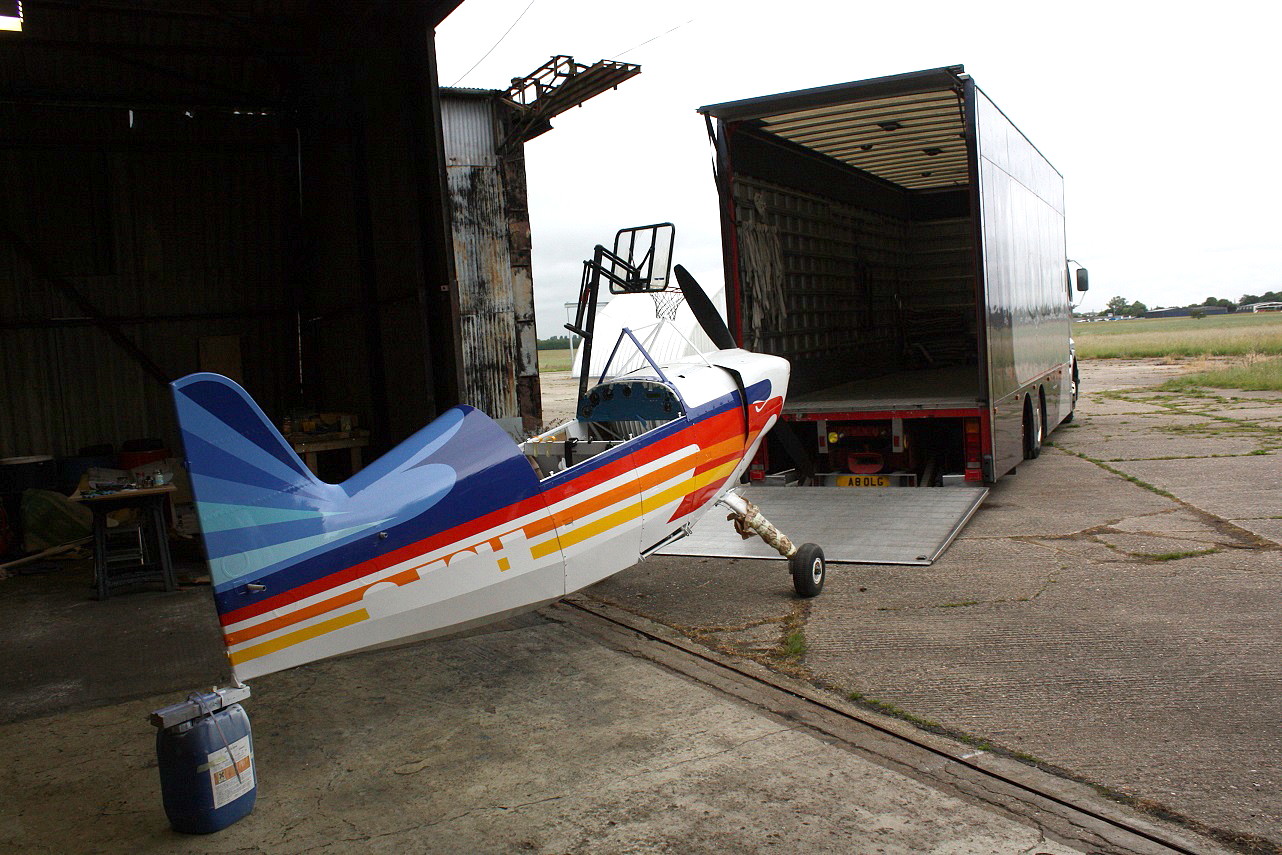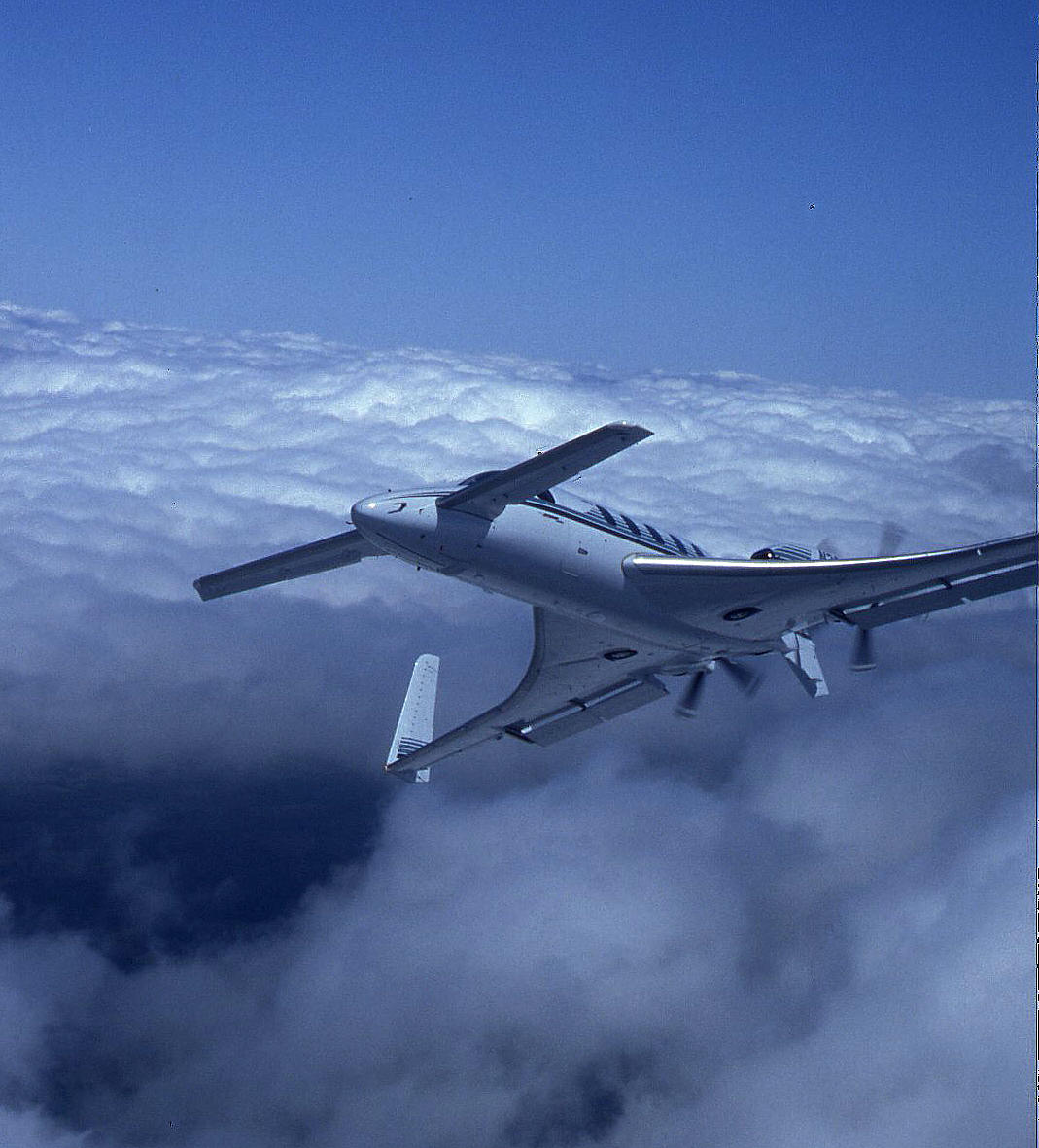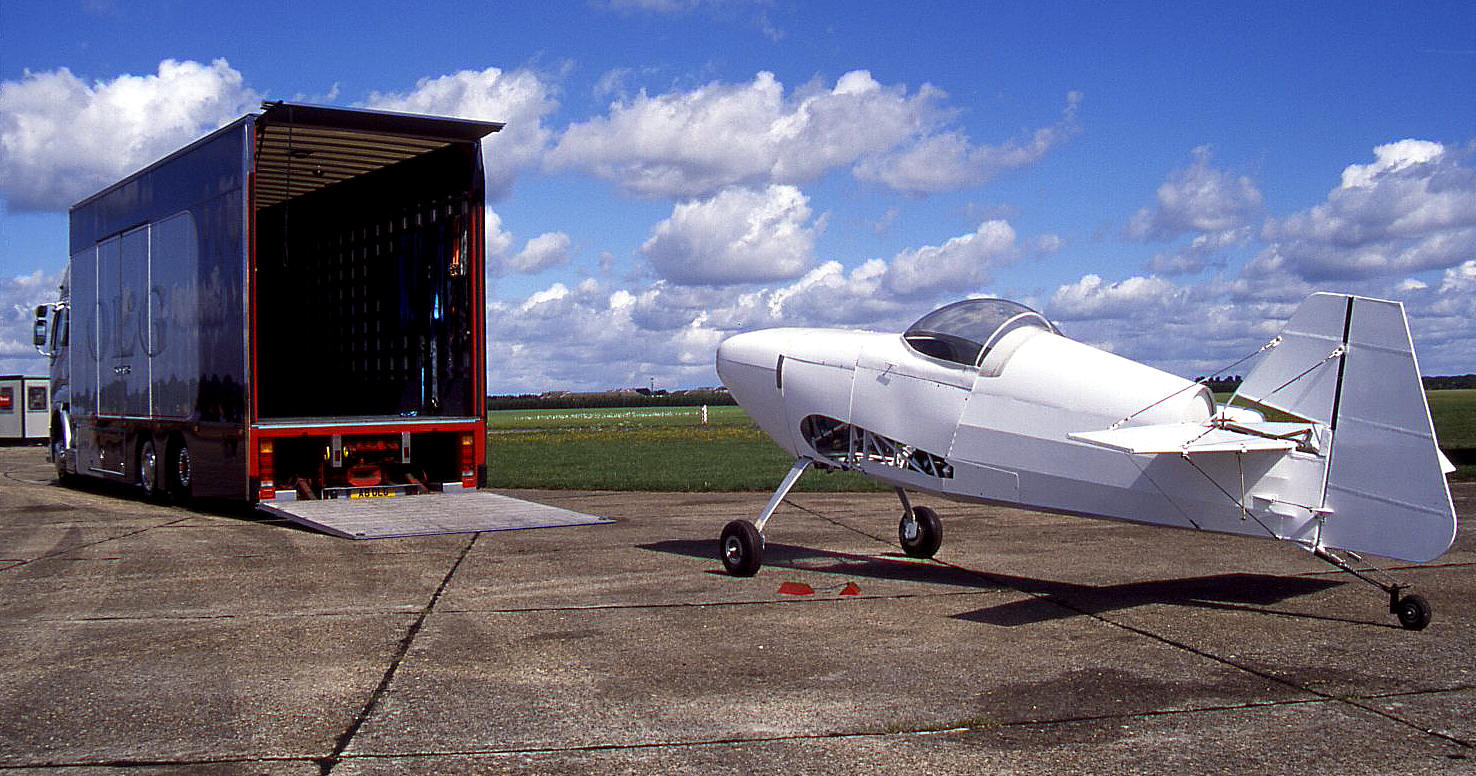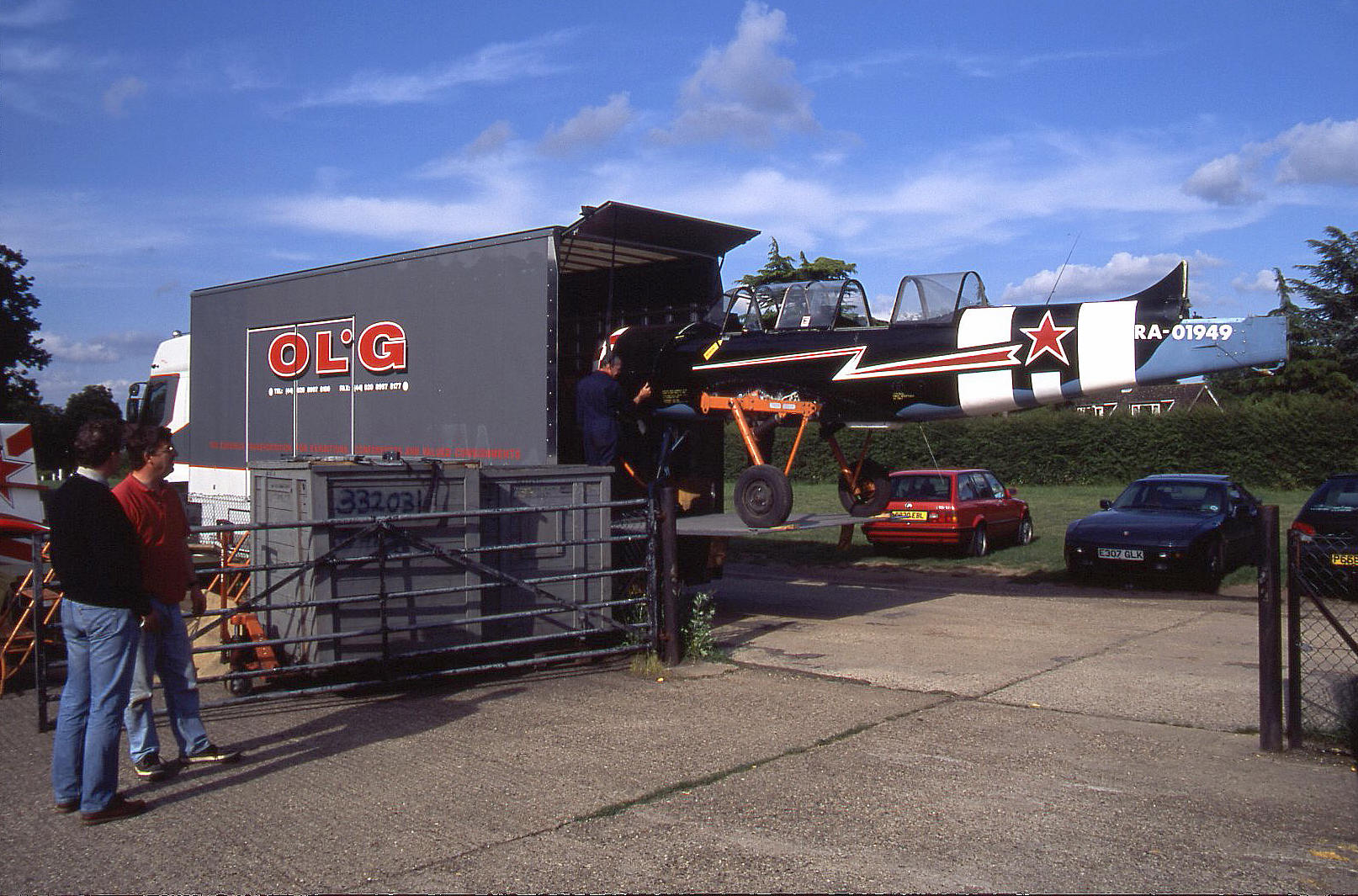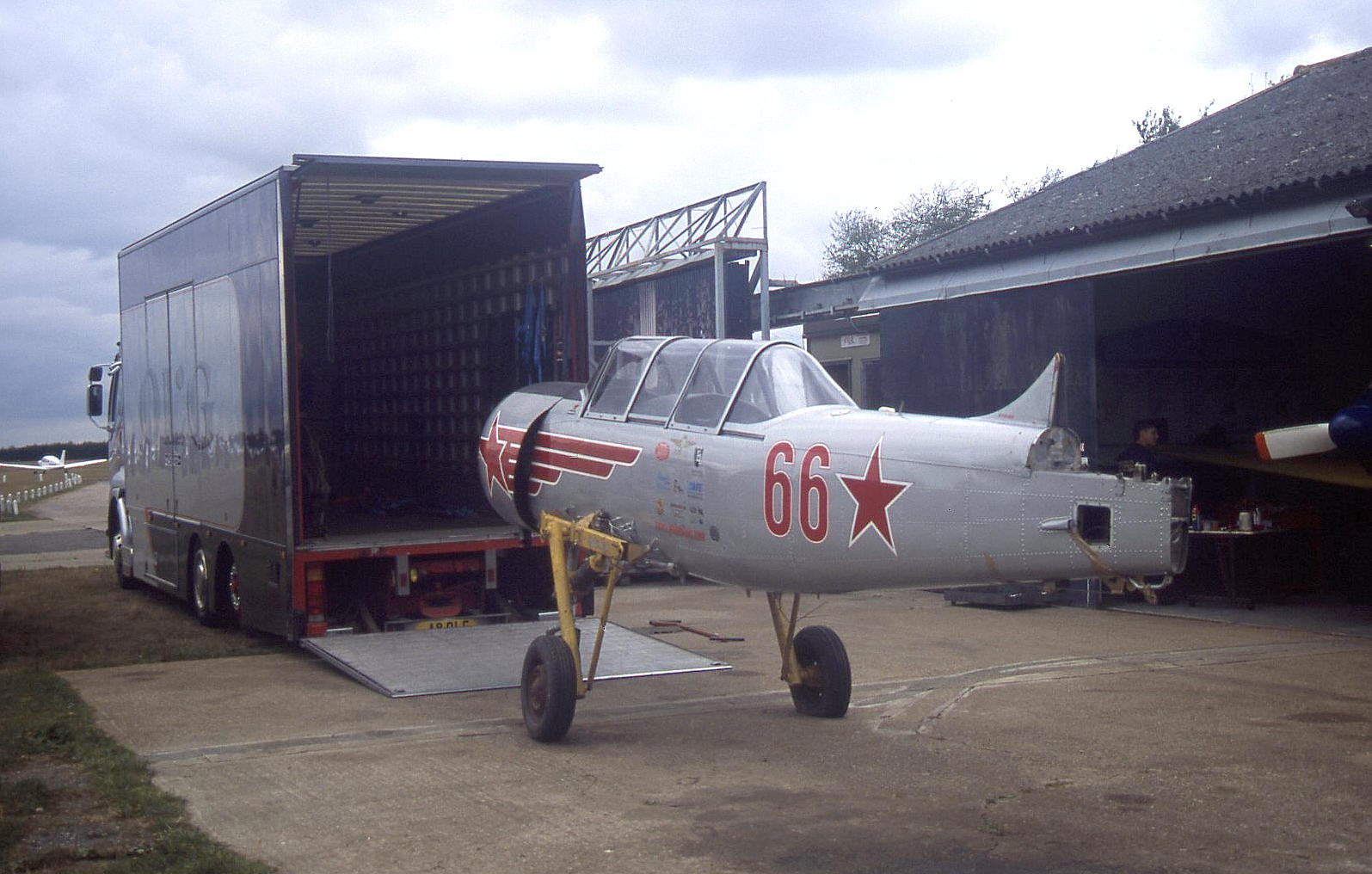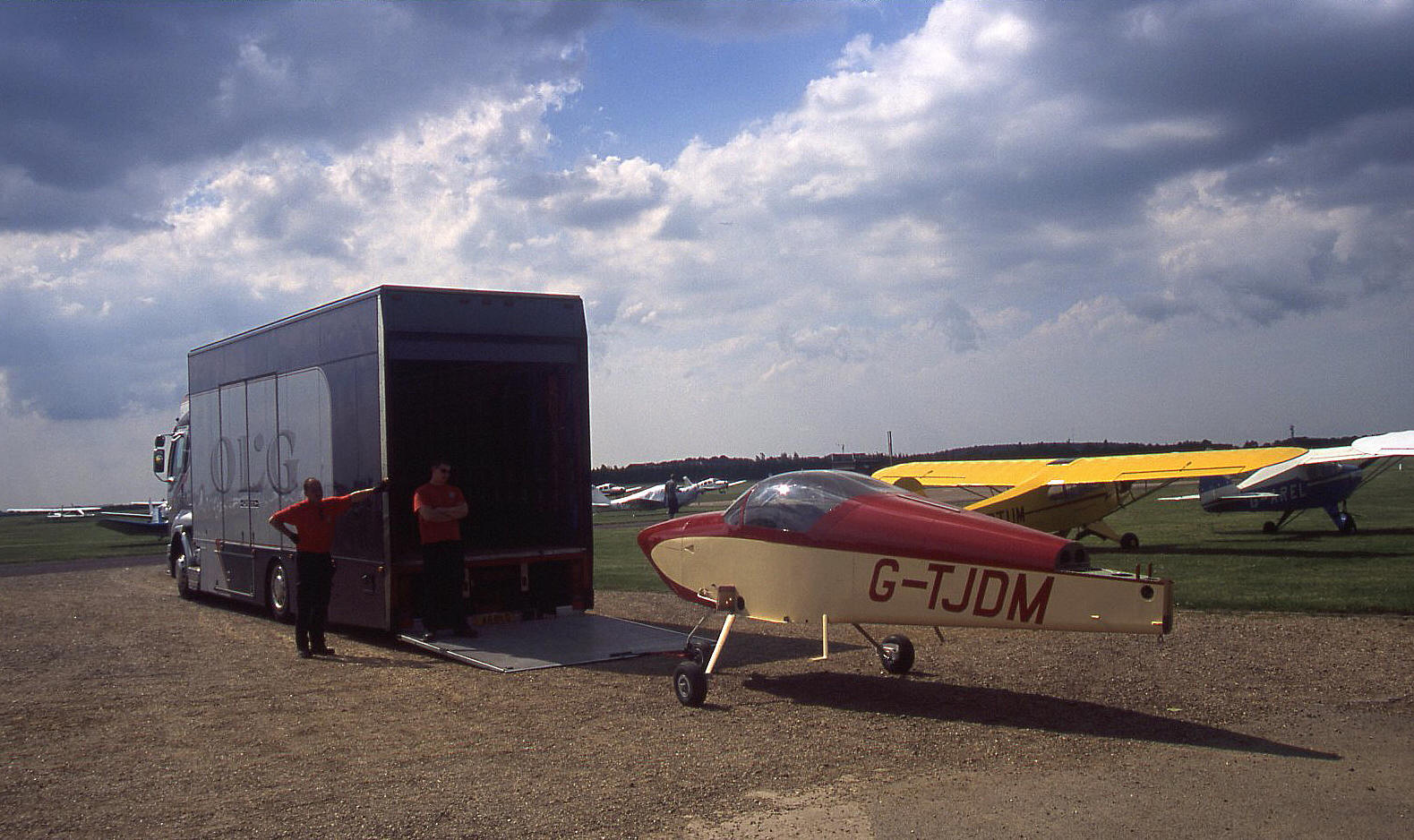White Waltham
WHITE WALTHAM: Military aerodrome later civil aerodrome
Note: All pictures by the author unless specified.
*Without much doubt the Sukhoi SU-26MX G-ORBY was the favourite aircraft for Richard Goode, and he performed many fabulous displays with it. It appears he went to Russia to collect it, flying it back.
In September 2018 Richard Poad, Chairman of the Maidenhead Heritage Centre, very kindly sent this information:
"WW opened in 1935 as a training school for RAF reserve pilots operated by the De Havilland School of Flying. At the outbreak of war, the unit was militarized and renamed 13 Elementary Flying Training School. From February 1940, ATA's HQ moved to WW, and a year later EFTS 13 moved to Peterborough."
My note: The ATA was the Air Transport Auxiliary who were used to transport aircraft from the factories to the operational squadrons and storage facilities. It later became famous because it employed female pilots, although they were in the minority.
"During WW2, occupants included EFTS 13, ATA, R Malcolm, the Army Cooperation Command Comms Flight and communications aircraft for the Dutch Royal Family. (Queen Wilhelmina lived at Stubbings House)."
"After the war, RAF Reserve Command moved here in October 1946, and flying resumed on 14 November 1946. 1950 Reserve Command renamed RAF Home Command (C-in-C lived at The Hockett in Cookham Dean) & Flying Command also moved to WW. 1953 the Comms Flights of the two commands amalgamated."
"1951 - 59 Home Command Examining Unit basd here, used Mosquito, Anson, Balliol, Chipmunk, Dakota, Valetta and Vampire T11s."
"Other service units included: 155 Sqn ATC and No 6 AEF Flight (1958-73), co-located with HQ Air Cadets. Also University of London Air Squadron (1959 to 1973). Began operation 7 Feb 1959 with 5 Chipmunks. Most service flying ceased in July 1968, 6 AEF Flight and ULAS moving moving out in 1973."
"Parts of the airfield were returned to the Shottesbrooke Estate and eventually MoD declared WW surplus to requirements. MoD sold the airfield at auction in November 1982."
Military users: 1930s: 13 EFTS [Elementary Flying Training School] (de Havilland DH82 Tiger Moths) Operated by De Havilland
MIlitary users:
WW2: RAF Training Command 50 Group
13 EFTS (de Havilland DG.82A Tiger Moths)
RAF TTC (Technical Training Command)
HQ of the Air Transport Auxillary service (one of more interesting aspects of WW2 flying activities) No.1 ATA Ferry Pool
1975: RAF (Avro Ansons & De Havilland DHC.1 Chipmunks)
Note: The Ansons and Chipmunks presumably mostly used for communications duties plus air-experience flights for Air Cadets etc.
Operated by:
1965: Royal Air Force
1970s/1990s: West London Aero Services
2001: West London Aero Club
Ariel Surveys: Fairey Air Surveys – later Clyde Surveys
Note: in the 1957 'The Aeroplane' directory, Fairey Air Surveys defined their operations as being; "Air photography and mapping subsidiary of the Fairey Aviation Co. Ltd." They had associated companies: The Air Survey Companies of India, Pakistan and Rhodesia and Aero Surveys Ltd (Vancouver).
Charter: British American Air Services
Flying schools/clubs: Pre 1939: De Havilland Flying School
WW2: BOAC Flying School
Post 1945: Avia Special, English Electric (Aircraft Division) Club, Fairey Flying Club, Freestyle Aviation, The London Aerobatic Company, Vickers Flying School, West London Aero Club
Note: In the 1957 The Aeroplane directory, The Fairey Flying Club are listed as operating: Four DH82A Tiger Moths, two Auster J/I Autocrats and one Tipsy B. The directory also states that membership to the Vickers Flying School was restricted to Vickers-Armstrongs' London office employees. Just how elitist was that! This said, those employed at WEYBRIDGE could fly with the Vickers-Armstrongs Ltd (Weybridge) Flying Club at FAIROAKS (SURREY) who were affiliated to the Fair Oaks Aero Club.
It appears that the Vickers Flying School were affiliated to the West London Aero Club who presumably owned and operated the aircraft? As well they may have, because in this directory the West London Aero Club were listed as operating two Auster J/1 Autocrats and four DH82A Tiger Moths. Plus, as well as The Fairey Flying Club and the Vickers Flying School, the English Electric (Aircraft Division) Club were also an affiliated member.
Which of course raises the question of where the Tipsy B, of The Fairey Flying Club, fits into the picture? The Tipsy types had very strong connections with Avions-Fairey in Belgium, so perhaps this example was privately owned but looked after by WLAC? Or perhaps the two Clubs sort of overlapped, with the Tipsy B reserved soley for use by Fairey members - which would make sense.
Gliding: Up until the 1970s only?
Note: In the 1957 The Aeroplane directory, the Air Training Corps and Combined Cadet Force (R.A.F. Sections) were based here, as it seems was the H.Q. in Home Command for these operations.
Maintenance: West London Aero Club, Richard Goode
Manufacturing: Pre WW2 and during WW2: de Havilland, Fairfield Aviation
Note: It appears that the long-range fuel tanks fitted to the Westland Lysanders of 419/1419 Flight, later to become 161 Squadron based at TEMPSFORD (BEDFORDSHIRE) for the delivery and collection of 'agents' and VIPs, mostly within France, were done by Fairfield Aviation.
Post 1945: Fairey Aviation, Fairtravel, Garland-Bianchi and Garland Aircraft
Location: 2nm WSW of Maidenhead
Period of operation: 1935 to present day
Note: These maps are reproduced with the kind permission of Pooleys Flight Equipment Ltd. Copyright Robert Pooley 2014.
Runways: Originally ‘all-over’ grass airfield?
1965: 04/22 1067 grass 08/26 1097 grass 11/29 1006 grass
1990/2000: 03/21 1025x45 grass 07/25 1110x45 grass
11/29 930x30 grass
NOTES: Judging by the amount of DH.82 Tiger Moths registered to de Havilland at White Waltham from about 1935, it would appear that No.13 EFTS (Elementary Flying Training School) which was administered by de Havilland, had a substantial fleet based here.
In September 2018 I was kindly contacted by Richard Poad, Chairman of the Maidenhead Heritage Centre, who has these details:
"De Havilland School of Flying, White Waltham
18 November 1935 Start of operations
September 1939 Name changed to No 13 Elementary Flying Training School
January 1941 Moved from White Waltham to Peterborough, having been displaced by the HQ of ATA
Fleet included 28 DH Tiger Moths
Hawker Hart K3144 - used for cross country flights
Hawker Audax K8327 -used for cross country flights
1 Avro Anson
1 Fairey Battle
2 Miles Monarch (G-AFCR, G-AFRZ) - used for cross country flights"
Clearly for us today, the inclusion of an Avro Anson and a Fairey Battle is of great interest. Did any other EFTS have such 'heavyweights' in their fleet? This can be explained when Richard Poad explains the role: "Ab-initio training for RAF pupils, elementary and advanced training for officers and NCOs of RAF and RAFR under command of RAF Reserve at Hendon.
The RLGs (Relief Landing Grounds) used were: BRAY, CULHAM (Henley-on-Thames) and WALTHAM St LAWRENCE. (Note: I have no information about the CULHAM airfield near Henly. There was of course a well known CULHAM WW2 airfield south of Abingdon in OXFORDSHIRE).
SOME OF THE DE HAVILLAND FLEET AT WHITE WALTHAM
Here again much of this information came from Richard Poad, but his list is not in alphabetical order.
| Registration | Type | Registered | Comment |
| G-ACDH | DH82A | 06.02.33 | Written off July 1938. Mr Poad tells us that it is recorded that the wings broke off during aerobatics.The pilot, Pupil Pilot Mulloy, baling out. |
| G-ACDI | DH82A | 06.02.33 | Impressed 30.10.40 as BB742. Crashed CHRISTCHURCH 10.07.54. More recently a long term rebuild project in Wiltshire it appears. |
| G-ADIA | DH82A | 13.08.35 | Impressed 30.10.40 as BB747. Restored as G-ADIA 08.05.46. Still flying today? Based in Northamptonshire? |
| G-ADIB | DH82A | 13.08.35 | Impressed 30.10.40 as BB748. Restored as G-ADIB 22.01.54. To France May 54 as F-BGZU |
| G-ADIC | DH82A | 13.08.35 | Crashed at WHITE WALTHAM 13.02.40 |
| G-ADKG | DH82A | 06.08.35 | Impressed 30.10.40 as BB749 |
| G-ADGH | DH82A | 11.09.35 | Impressed 30.10.40 as BB754. Stalled on take-off at KENLEY 21.12.40 |
| G-ADLV | DH82A | 06.08.35 | Impressed 30.10.40 as BB750. Restored May 1956 as G-AORA. It appears it later went to Sweden as SE-CWG |
| G-ADLW | DH82A | 06.08.35 | Impressed 30.10.40 as BB751 |
| G-ADLX | DH82A | 06.08.35 | Crashed at WHITE WALTHAM 01.07.39 |
| G-ADLY | DH87B | 05.10.35 | Impressed 28.2.40 as W9388. Restored as G-ADLY 20.05.46. There appears to be no record of this Hornet Moth being used by the De Havilland Fleet at WHITE WALTHAM. Possibly an oversight creeping into the account? |
| G-ADLZ | DH82A | 06.08.35 | Impressed 20.10.40 as BB752 |
| G-ADMA | DH82A | 06.08.35 | Impressed 30.10.40 as BB753. Restored as G-ADMA 13.10.54 and sold to Australia 14.12.56 as VH-PCG |
| G-ADXI | DH82A | 13.11.35 | Impressed 30.10.40 as BB756 |
| G-AELP | DH82A | 27.7.36 | Impressed 30.10.40 as BB757 |
| G-ADHR | DH82A | 06.08.35 | Impressed 30.10.40 as BB743 |
| G-ADHS | DH82A | 06.08.35 | Impressed 30.10.40 as BB744 |
| G-ADHT | DH82A | 08.08.35 | Impressed 30.10.40 as BB733 |
| G-ADHU | DH82A | 08.08.35 | Impressed 30.10.40 as BB734 |
| G-ADHV | DH82A | 08.08.35 | Impressed 30.10.40 as BB735. Restored 01.09.53 as G-ANBV. Sold to West Germany in February 1958 as D-EHYB. Last known as derelict in Las Palmas in March 1967, having been returned to the British Register as G-ANBV. Any comments? |
| G-ADHW | DH82A | 08.08.35 | Written off 21.01.38 |
| G-ADHX | DH82A | 11.09.35 | Allocated BB793 but crashed at SYWELL before impressment on the 27th August 1940 |
| G-ADHY | DH82A | 13.08.35 | Impressed 30.10.40 as BB745 |
| G-ADHZ | DH82A | 13.08.35 | Impressed 30.10.40 as BB746 |
| G-AFCR | M.17 | 17.11.37 | Possibly a prototype Miles M17 Monarch as it seems the markings U-1 were first applied? Impressed 30.11.39 as W6461. Restored 21.01.46 |
| G-AFRZ | M.17 | April 1939 | Impressed 30.11.39 as W6463. Restored 23.08.46 as G-AIDE. Later restored as G-AFRZ 14.10.82 |
THE HELMY AEROGYPT
As a young spotty spotter some fifty-five years or so ago, pedalling from LAP (London Airport), to WHITE WALTHAM to do some reggie spotting, there was a rumour going around that a rare aircraft was serving as a hen coop fairly nearby. It didn't seem worthwhile to try and trace this, and in any case we probably wouldn't have found it - let alone gaining access if we had. But its the kind of thing that for some odd reason, sticks in the memory.
So, imagine my delight when Richard Poad sent me this account in September 2018: "The dumpy little Aerogypt was the brainchild of a latter-day Johnny Benton called Saleh Helmy, who was an RAF Fl Lt. He had dreams of a series of ultra-safe transport aircraft to be built in his native Egypt."
"Helmy, who lived in Maidenhead, built a quarter scale model of his proposed 80-seater transport in order to prove his patented lift-enhancing Helmy flap, mounted on the roof of the fuselage. This was a manually controlled high-lift aerofoil section intended to generate lift from the aerofoil itself and through the slot between the raised aerofoil and the fuselage roof. The National Physical Laboratory told Helmy his idea was aerodynamically sound but mechanically impractical."
I suppose, in those days, that the use of powered hydraulics for aircaft control surfaces was still a pipe-dream at best?
"Aerogypt 1 was a tailwheel tri-motor with the hinged flap and was first flown at Heston in February 1939. Many modifications over a period of 18 months resulted in the Aerogypt II, flying with the flap removed. When Helmy joined the RAF he was able to move his Aerogypt to White Waltham. Around 1943 it was radically modified to tricycle undercarriage and twin engined configuration, and as Aerogypt IV was test flown in February 1946 by Captain Ralph 'Snagger' Henderson, formerley an ATA test pilot."
"A limited Certificate of Airworthiness was granted on 29/10/46 and in November Helmy and wife left WW for Northolt, en route to Egypt. But coming in to land, the tailplane caught in high wires above the perimeter fence. The aircraft stalled and in Helmy's words, 'we went plonk'. The damaged aircraft was totally written off when it was dropped by a salvage crane and it ended its days as a chicken coop in a garden near White Waltham."
One can only conclude that Helmy was a most inept pilot - hitting wires on the approach into NORTHOLT, which was then becoming the major European London Airport. If for example Douglas C-54 (DC-4) airliners could easily land here - what on earth was he playing at?
ON CHARGE?
During WW2 this aerodrome was (for a time) the ATA HQ possibly also the TTC HQ? Despite much apparent activity associated with the military I have yet to discover if this aerodrome was actually on charge to the War Department during WW2. It certainly doesn’t appear listed as being “On Charge” in late 1944.
White Waltham wasn’t ever a 'front line' military airfield although later there was certainly an RAF base here after WW2. During the early 1960s for example I well remember seeing Avro Ansons and Chipmunks around the RAF base. And, perhaps only once, watching a Fairey Gannet arrive presumably to have some kind of work done at the Fairey factory on the north side of the aerodrome. In the days when I visited as a spotter a fairly substantial housing settlement for RAF personnal had been established on the SE side of the aerodrome.
AN ODD STORY
There is a very strange happening here in WW2 recounted by Lettice Curtiss, the famous ATA pilot in her autobiography. It appears that at some point grass fertiliser delivered to the airfield contained shards of metal which eventually surfaced causing aircraft tyres to be punctured and the airfield was closed while the painstaking task of removing these was carried out; a protracted and far from easy business. This does of course smack of sabotage but certainly not necessarily by a German sympathiser?
Although the idea, still fuelled today by a huge propaganda machine, that the English (or for that matter the British) were all 100% behind the war effort is, in fact a myth. The fact is that to varying degrees a large proportion of the adult population in the UK were far from happy about another major war with Germany. It is wise to remember that the appalling losses suffered in WW1 was still a recent memory for most people. As this seems to be an isolated incident it is quite likely it arose from a local grudge against the RAF/ATA and who could say what the cause was? On a broader basis many people from all classes exhibited a marked reluctance to assist the war effort including many actually in the armed services.
It is also worth remembering that in a war regime many people regarded the keeping of records as a thoroughly wasteful and footling exercise usually consigned to the lowest ranks and/or latest arrivals. In other words those who had little or no idea what was going on and in many cases those who couldn’t care less when it came to accuracy. And quite right too looking at the bigger picture I suppose. Let’s face it, if as a youngster you’d signed up prepared to risk life and limb to fight ‘Jerry’ and defend your family and homeland only to find your ‘glorious’ role in this was just to record the aircraft movements at your assigned aerodrome and/or other similar mundane record keeping duties - how motivated would you be?
PERHAPS A LITTLE KNOWN FACT?
I suspect thar not too many people around today would know that in the early stages of WW2, at least some EFTS Tiger Moths were being fitted with bomb racks, including at least some based here. Presumably during the Battle of Britain period, when nearly everybody thought we’d lose and a German invasion was very much a probability, the idea was to do everything possible to attack the invading Germans. As pointed out elsewhere in this Guide the threat of an invasion was real enough, but the chances of an invasion succeeding was virtually non-existent - as the Germans pretty soon realised. Being an island the Germans could not employ their hugely successful Blitzkrieg tactics and faced with our formidable Royal Navy and shore defenses, the concept was a non-starter from the outset. However, the idea of using Tiger Moths as 'bombers' in close combat would have been, in most cases, suicide missions, I doubt there is much argument about that?
FAIREY AVIATION
I suppose it is worth mentioning why Fairey Aviation arrived at WHITE WALTHAM at the end of WW2 - more or less. The main reason being that their GREAT WEST AERODROME situated near to Heathrow village was taken over to become just a small part of the LONDON AIRPORT grand scheme. Fairey had used the GREAT WEST AERODROME from 1930 to 1944. They then moved flying activities to HESTON airport where they had built a huge factory near to the airport, but HESTON was closed in 1947, presumably because of the proximity to the new LONDON AIRPORT at Heathrow. The presence of Fairey Aviation appears to have lasted from 1947 to 1964. They were merged with Westland based at Yeovil.
SINGULAR PROJECTS
One of the fascinating aspects of attempting to provide a Guide to British flying sites, is the discovery of so many people along the years, attempting to develop a particular type of aircraft with very limited resources. For example I reckon it is well worth mentioning the Helmy Aerogypt IV. First built in 1938 at HESTON (LONDON) the development of this type seems to have kept going throughout WW2, mostly at WHITE WALTHAM, the eventual flying prototype making its first flight here on the 12th January 1946. Read British Built Aircraft Vol.3 by Ron Smith for more information of this extraordinary eight year endeavour by Mr Helmy.
Ron Smith also lists ML Aviation, who produced the Rotabuggy or Rotorjeep which was flight tested at SHERBURN-in-ELMET (YORKSHIRE) as first flying their ML Utility XK784 here in August 1955. This was an inflatable wing aircraft designed by Marcel Lobelle. Two more examples were built, XK776 and XK781 and a variety of modifications and powerplants were carried out, but the concept failed to be adopted.
DOUG BIANCHI
Doug Bianchi was the leading figure in creating Personal Plane Services here before they moved to BOOKER/WYCOMBE AIR PARK just up the road in BUCKINGHAMSHIRE. Between here and at BOOKER they produced, for example:
1) A Vickers Type 22 monoplane
2) Three Demoiselle replicas for Those Magnificent Men In Their Flying Machines
3) The Pfalz DIII G-ATIF for The Blue Max (Built at BOOKER)
4) The Fokker EIII G-AVJO
5) A Morane-Saulnier N monoplane, G-AWBU
6) A Manning-Flanders MF.1, first flown on the 1st March 1974
There are many other examples of classic aircraft restorations and reproductions by this company and some are listed under BOOKER/WYCOMBE AIR PARK.
One aspect of the history of this site I don’t quite understand is why Slingsby Aviation, (based in Yorkshire) who also built several replica aircraft for film use, happened to fly their Sopwith 1F.1 Camel replica G-AWYY, (the Slingsby T.57 type), here in March 1969. I wonder what was behind this happening? Ron Smith also says the first Taylor Monoplane G-APRT, built in Ilford (ESSEX/LONDON) was first flown here on the 4th July 1959. I suppose the question is - why here?
PRINCE PHILIP AT WHITE WALTHAM
It may well be not much known today that the British Royal family was, almost from the outset, very keen on aviation. And indeed a flight carrying 'air mail' from HENDON to Windsor was arranged before WW1. Arguably the first ever 'air freight' operation in the world. The Prince of Wales in the 1930s learnt to fly and established an aerodrome on SMITH'S LAWN. I was much pleased to be sent this account by Richard Poad, Chairman Maidenhead Heritage Centre.
"Special Instructional Unit set up at WW. PP began flying lessons on 12 November 1952 on Chipmunk T.10 WP912 (now displayed at Cosford), instructor was Flt Lt Caryl Gordon."
"After 10.5 hours dual, made first solo on 20 Dec 1952." This equates to the very thorough training given by the better flying schools today. In WW2 for example, a first solo was expected in around four and a half hours. And a lot of ab initio students came to grief in the process. Indeed, some died as a result.
"After Chipmunk progressed to Harvard KF729. Wings awarded 4 May 1953, then went on to Oxfords and Devons. Night flying in a Dove at Blackbushe (lighting by goosenecks) - says Dove was his favourite aircraft." Having 'poled' a Dove around for around an hour, I can see why. It flies as if on rails.
"1955 - learned to fly helicopters. RN wings awarded Han 1956, Army Air Corps wings in 1965. Often flew the two royal Whirlwinds, one displayd RAF Museum Hendon, the other at Helicopter Museum, Weston-super-Mare. Ceased flying helicopters in 1992."
"PPL awarded 1959. His WW flight in Turbulent G-APNZ remains the only flight in a single seater made by a member of the Royal Family."
"BAe 146 joined Roral Flight in 1986. 1997 20-day round the world flight at age 76 included 21 take offs and landings."
Total flying experience over a 45-year period. 5,985 hours in over 60 different types of aircraft. Surely way beyond any other 'Royal' anywhere in the world. And of course, the 'tradition' of members of the Royal Family being trained to fly, up to the highest military standards, still continues.
THE FAIREY GANNET
Perhaps oddly, as it appears final assembly was carried out here, it appears the first Gannet prototype VR546 was first flown from ALDERMASTON on the 19th September 1949. Then, the Gannet T. Mk.2 WN365 was first flown from NORTHOLT on the 16th August 1954. This aircraft was modified to be a Gannet T. Mk.5 and this was first flown from WHITE WALTHAM as G-APYO. It also appears that the first Gannet AEW.3, XJ440 first flew here on the 20th August 1958. Time and time again I have been surprised to discover that so many aircraft first flew from an unexpected location, well away from where they were built.
From the WW2 period Fairey Aviation will surely be remembered for their expertise and excellence in two entirely disparate areas. Neither of which proved to be successful for the company and I’m certain much needs to be explained as to why this wasn’t the case. For example, especially regarding British government backing, why were those in power in those days absolutely against supporting this company? One answer, according to some, is that the company presented too big a threat to American interests.
BREAKING THE WORLD SPEED RECORD
Much of the design, development and construction of the Fairey Delta 2 was done at WHITE WALTHAM. When it came to final assembly and flight testing at BOSCOMBE DOWN, a team would regularly fly down from WHITE WALTHAM in the company 'hack'; a Dragon Rapide I think. It is on record that official support for the Fairey Delta 2 to break the world speed record by a massive margin was non-existent at first, and, when granted, parsimonious to an extreme extent. The big question must be asked - WHY? Why where all those in the ministry and our government so thoroughly against this country laying the American speed record to waste? Indeed, when the Americans were asked how exactly they had measured their World Record speed flight, they refused to divulge any details. I can highly recommend reading Faster Than The Sun by Peter Twiss who flew the Delta 2 and broke the World Speed Record, for the inside story. On a personal note I have a copy of his book, signed by him, after he gave a talk at White Waltham a few years ago.
FAIREY ROTORCRAFT
Possibly less recognised today is the quite extraordinary and imaginative designs Fairey Aviation drew up regarding rotorcraft, led by J A J Bennett who was previously involved with the Cierva Autogyro Co. The first Fairey rotorcraft to fly was the Gyrodyne G-AIKE, doing so at HESTON (LONDON), on the 7th December 1947. This achieved a Class G helicopter speed record of 124.35mph on the 28th June 1948. The Jet Gyrodyne G-AJJP/XJ389 was mostly used to provide information destined for the Rotodyne and the first tethered flight was made here in January 1954. The first transition from helicopter to autogyro flight being made on the 1st March 1955.
Looking back I now find it quite astonishing that as a ten year old living next to ‘LONDON AIRPORT’ in 1957 and getting interested in aircraft spotting, the news of the Fairey Rotodyne XE521 flying at WHITE WALTHAM on the 6th November that year seems to have had little if any impact! In those days it was, I now think, akin to ignoring the first flight of the Space Shuttle, it was such a massive leap forward in so many ways. And, possibly by producing a similar amount of noise according to contemporary reports!
I was of course aware of it’s existence, and probably because Airfix made a model of it, but it has taken me some fifty years to start to appreciate the significance of this design. I suppose only the Bell Osprey design has taken this concept forward? Perhaps a comparison is interesting given that over a fifty year gap exists between the Rotodyne and the latest V-22 Osprey?
FAIREY ROTORDYNE BELL V-22 OSPREY
Crew: Two Four (2 pilots + 2 flight engineers)
Passengers: 48 24 troops seated, 32 on floor
MTOW: 38,000lb (17,000kg) 60,500lb (27,400kg)
Max. speed: 213 mph 277 mph
Range: 520 miles 1,011 miles
I now think it is very important to place developments within their true historical context to get any appreciation of their true worth? For example the first flight of the Rotodyne was on the 6th November 1957 whereas the first flight of the Boeing 707 (which spearheaded international jet airliner travel), was a month and a half later, on the 20th December. Needless to say, and so typical of British government policy, after the UK had developed a world leader, the project was cancelled three years later. This was incidentally after the Rotodyne had set a world speed record around a 100km closed circuit of 190.9mph on the 5th January 1959. Today, as mentioned, the noise it created was seen as being a major problem inhibiting sales. As a youngster living near Heathrow whose eardrums were nigh on shredded by the early jet airliners, this now seems a joke. Possibly the noise problems associated with this design, especially the rotor-tip propulsion system which was nigh on akin to rocket systems (?), couldn’t have been solved?
Also made during this era, the Fairey Ultralight helicopter deserves a mention. The first example XJ924 flying here on the 14th August 1955 and also using tip jet drive. Here again an advanced design concept that failed, only six being built. Fairey was absorbed into Westland in May 1960, a move some maintain designed to reduce the design capabilities of the company and bring them in line to be sub-contractors to the American Sikorsky interests.
THE WESTLAND SCOUT
It is claimed that the first Westland Scout AH.I XP165 was first flown here on the 4th August 1960 and the first production example XP864 flew here on the 6th March 1961. Also, the first Westland Wasp HAS.1 XS463 first flew here on the 28th October 1962. I think it is quite important to remember that the Scout and Wasp first flew here, when Fairey still had considerable influence in the affairs of Westland, and not from YEOVIL.
A MAJOR BOOST FOR THE PFA
In 1959 a major boost was given to the subject of home-built aircraft, and the Popular Flying Association, when HRH the Duke of Edinburgh flew the Rollason built (at CROYDON) Druine D.31Turbulent G-APNZ here, accompanied by much press interest. In 2014 this aircraft was being restored to flying condition by a group at DERBY airfield.
THE KING'S CUP
On the 14th August 1971 the King’s Cup Air Race was held here for the one and only time in its ninety-one year history (as of 2013) and the 155.5mile course was won by Mr J Bradshaw in a Percival P.56 Provost G-AWPH at an average speed of
204.5mph. This was the second longest course since the races commenced in 1949 after WW2.
ANOTHER ASPECT
Fairey Surveys operated a Dakota, G-ALWC from WHITE WALTHAM, later taken over by Clyde Surveys, a subsidiary of Clyde Petroleum. It appears the operation kept going until 1982.
AIRSHIPS
From at least 1992 to 1999, and probably for a longer period (?), airships were operating here for promotional operations, mainly I believe over Greater London. As far as I can see these were all American Blimp Company A-60 types, with at least two registered in the USA as N11ZP and N2022B. For a short time in 1992 (at least) one became quite a feature in the night skies over London, as it was illuminated from within and this was registered in Italy as I-TIRE. Very oddly, and as far as I can make out looking at the pictures, neither of these airships appear to have their registrations applied. Is there an exemption just for airships?
THE SOCIAL ASPECT
Unusually amongst the Home Counties GA airfields, the West London Aero Club at WHITE WALTHAM has long had a very active social side. In the winter months especially, monthly talks are given by a wide variety of always entertaining and interesting speakers. Because I have known a couple of members, it has often been my pleasure and privilege to be invited along as a guest. Notably I attended talks by Peter Twiss and Eric 'Winkle' Brown - highly educational.
Another aspect is that the idea of the 'Garden Party', started in the 1930s by the Royal Aeronautical Society, (possibly before?), has been kept alive here. In effect a private air show for the members and invited guests. I have heard these events being criticised for being elitist and exclusive - but this is most unfair - they are nothing of the kind. Let's face it, they've let me in! On a more serious note, why on earth should private clubs not hold celebratory events?
AN UNIQUE DEPARTURE
On the 1st September 1996, I flew the Cessna 172 -WACZ from WYCOMBE AIR PARK to WHITE WALTHAM to collect Aussie Brown to photograph the Tiger Moth departing for Australia for FLYER magazine. Along the way to Dover it was being accompanied by 'The Diamond Nine' display team and those pilots caused us many problems as they ignored the breifing and were 'all over the shop'.
Once they had departed we found that in order to picture the Tiger Moth passing the white cliffs of Dover, Aussie had to climb over me to shoot out of the left hand window! It is not exactly easy to fly in formation, crouched low over the controls, with somebody clamberimg over your back. Happy days.
Oddly perhaps, when much later trying to find information about this Tiger Moth, I could discover nothing mentioned. Can anybody kindly offer info on this? I think the registration was VH-GVA? If so it appears this aircraft came to grief in a very serious fatal accident for both on board in Australia in January 2012.
*On this sortie Aussie Brown had arranged for a young lad to come along for the experience, which he thoroughly enjoyed, although his mother was very concerned having flown previously in a light aircraft with a 'highly experienced' pilot who had badly scared her - throwing it about. Aussie suggested that she should fly with me back to WYCOMBE AIR PARK to quell her fears. After a full pre-flight breifing I gave her a running commentary throughout the flight making quite sure she was happy. It was a lovely calm evening so, barely moving the controls and banking at nothing more than fifteen degrees, this lady was delighted by the time we landed and thought I was a wonderful pilot!
It was a lesson I had learnt much earlier when taking passengers for their first flight, and not an easy thing to gauge, which is how anybody might react, especially to turbulence. All part of the learning curve of being a pilot.
A RATHER UNUSUAL OPERATION
In 2006 Avia Special were operating an unique fleet of aircraft, in the UK at least, comprising a Cap 10B, Zlin Z526, DH.89A Tiger Moth and an Antonov An-2.
AN AIR-to-AIR SHOOT TO REMEMBER
YAK & SUKHOI CONNECTIONS
WHITE WALTHAM has been associated with Yak and Sukoi aircraft for quite some time, and over the years I have moved several of the types in my truck to this airfield. On the 17th November 1993 I was invited to fly with Alan Cassidy in a Yak 18T for a photo-shoot for Flyer magazine. At that time I was often flying the cameraship for Flyer but this was an opportunity to see things from another perspective.
On the way back, after the photo-shoot, Alan said to me, "These are supposed to be aerobatic, so lets see how it performs." He was not at all impressed and announced, "It flies like a truck." To which I said, "Ideal for me then, can I have a go?" To his credit he did indeed let me have a go. I cannot remember if I did an aileron roll or loop or both, but for me I loved the feel of aircraft. But Alan of course was a major contender in serious aerobatics and won the British National Aerobatic Championship title in 1998.
ANOTHER AIR-TO-SHOOT TO REMEMBER
On the 17th of April 1997 it had been arranged by Aussie Brown to do an air-to-air sortie from ELSTREE with the Soko J-20 Kraguj for FLYER magazine. The first part culminating, as agreed, with a low-level pass at WHITE WALTHAM to simulate this aircraft in its 'ground-attack' role. The initial part of the flight went well enough but the radio in the Kraguj was rubbish. And, the entire sortie had been very thoroughly breifed beforehand by Aussie.
Getting our clearance from WHITE WALTHAM I dived down for the low pass and was complimented for doing so on the radio - but - in the event, no Krajug was on our tail!
The pilot of the Kraguj had evidentally 'lost the plot' and forgotten the breifing. From memory the only time in all my numerous air-to-air sorties that this had happened.
THE WHITE WALTHAM AIRSHOW, AUGUST 1996
Note: Please see my article on Air Shows for more pictures.
WHITE WALTHAM PICTURE GALLERY
Notes:The third picture of three classics are, from left to right: A Luscombe 8F Silvaire, Aeronca 7AC Champion and an Aeronca 65-CA Super Chief.
The fifth picture, an autumnal scene at dusk shows two aircraft from two entirely different regimes during the 'Cold War' era - the Soviet Union and the USA. The Hungarian registered An-2 (HA-ABJ) is interesting because it was built in Poland by PZL and is a PZL-Mielec An-2SH. The American example, G-NIKE, is a Piper PA-28-181 Cherokee Archer II.
The sixth picture is of a Piper PA-24 Comanche. As a teenager I thought the Piper Comanche was 'the bea's knees' of light aircraft - super sleek and sexy. Over the years I managed to fly nearly all the single engine Piper types, from the Cub to the Cherokee Six, but never a Comanche. But maybe that is for the good, as it always better to remember dreams, rather than face them in reality?
AND MORE PICTURES
Note:The twelth picture is of two Piitts types; G-WAZZ the Pitts S-1S Special, and beyond G-STUB, the Pitts S-2B Special.
The thirteenth picture is of the DH.89A Dragon Rapide G-AKIF. It appears that when this was built in 1944, it served with RAF and at that time was known as a DH.89A Dominie.
AND EVEN MORE PICTURES
ALL IS NOT AS IT SEEMS
Note: A friend alerted me to this image from Google Earth © 2018. At first glance I was astonished - an exec-jet here? Surely not? Very fond though I am of this historic aerodrome, the runways are far from smooth. Turns out, it would appear, that it was being used as a film prop and was trucked in.
PERSONAL MEMORIES
White Waltham has become a major item in my life for several reasons, and these pictures will illustrate why. For example on the 29th August 1994 I took the opportunity to do some circuit training in the rare tail-wheel version of the Piper PA-22 Colt G-GGLE. This is a type easy enough to fly, but it does have a tendency, if reducing too much power on short finals to land, to develop a high sink rate remarkably quickly. A trait shared with the four seater PA-22 versions I believe.
On some occassions Aussie Brown would invite me, when I wasn't flying the 'camera-ship', to come along for the ride when he was doing an air-to-air picture shoot for FLYER magazine. One memorable flight was with him sitting in the back of the Beech F.33c Bonanza G-BTSK flown by none other than Alan Cassidy to shoot the Beech Starship on the 29th June 1994. I took this picture through perspex.
I have also collected and delivered several aircraft in my truck to WHITE WALTHAM and will include some pictures of these moves - as I come across them.
EXTRA NOTES: Unfortunately I was, back in the early years of the 21st century, storing records of my aircraft moves on a floppy disc - which self-destructed without any warning. Therefore I have no details regarding moving the Rhin DR-107 One Design in July 2005. Could it be that this aircraft was registered G-CEPZ?
AND MORE AIRCRAFT MOVES
In June 2003 I was given the job, by Richard Goode Aerobatics, of collecting the Yakovlev Yak 52 RA-01949 from ROCHESTER airport (KENT).
Always a pleasure and easy type of aircraft to move, in May 2008 I collected the Vans RV6A G-TJDM from BOURNEMOUTH airport.
Another job was collecting the Yak 52 G-YAKN of the Yakolev Display team from BOSCOMBE DOWN (WILTSHIRE) in September 2009. I really must add that it was not being flown by a member of the team when it landed with its wheels up.
Ron Smith
This comment was written on: 2016-08-02 09:29:02Type your text here....Thanks for the reference to material from my 5 volume British Built Aircraft series. You might also like my latest - Classic Light Aircraft from Schiffer Publications.
Reply from Dick Flute:
Dear Ron, I have found all the books of yours a treasure trove of valuable information - to which I am much indebted. I shall take steps to get a copy of Classic Light Aircraft. Best regards, Dick
Barbara Johnson
This comment was written on: 2020-11-08 16:47:38I have just found a photo of G-BOOK around 1971. My late husband Roger Johnson was a licenced aircraft engineer at White Waltham around 1971/72. He worked for Fairey Surveys and did a 4 month aerial photography trip to Chad, Nigeria etc with crew (pilot was Australian). At the time we lived in Maidenhead.
We'd love to hear from you, so please scroll down to leave a comment!
Leave a comment ...
Copyright (c) UK Airfield Guide















